July 28, 2019
Martha O'Kennon
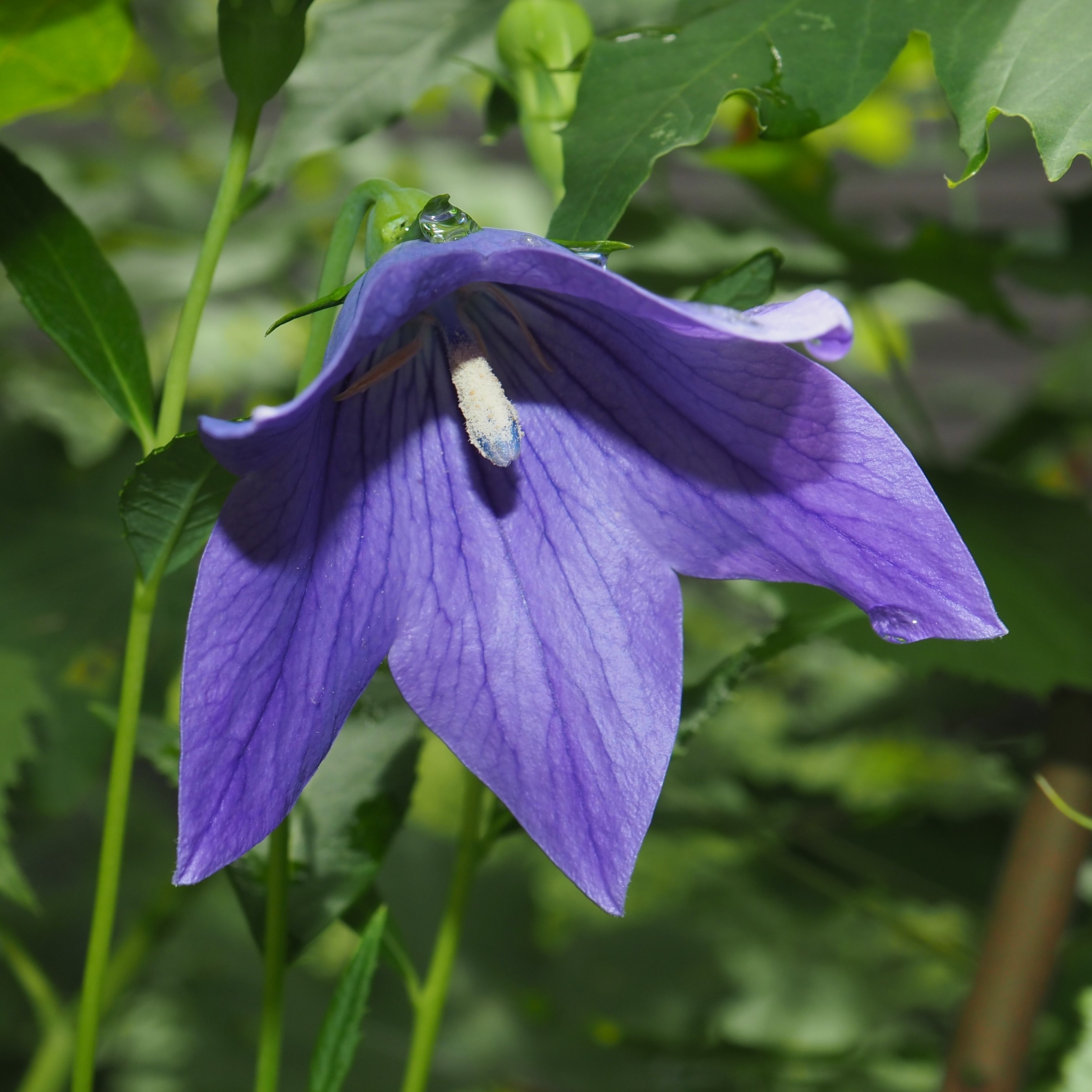
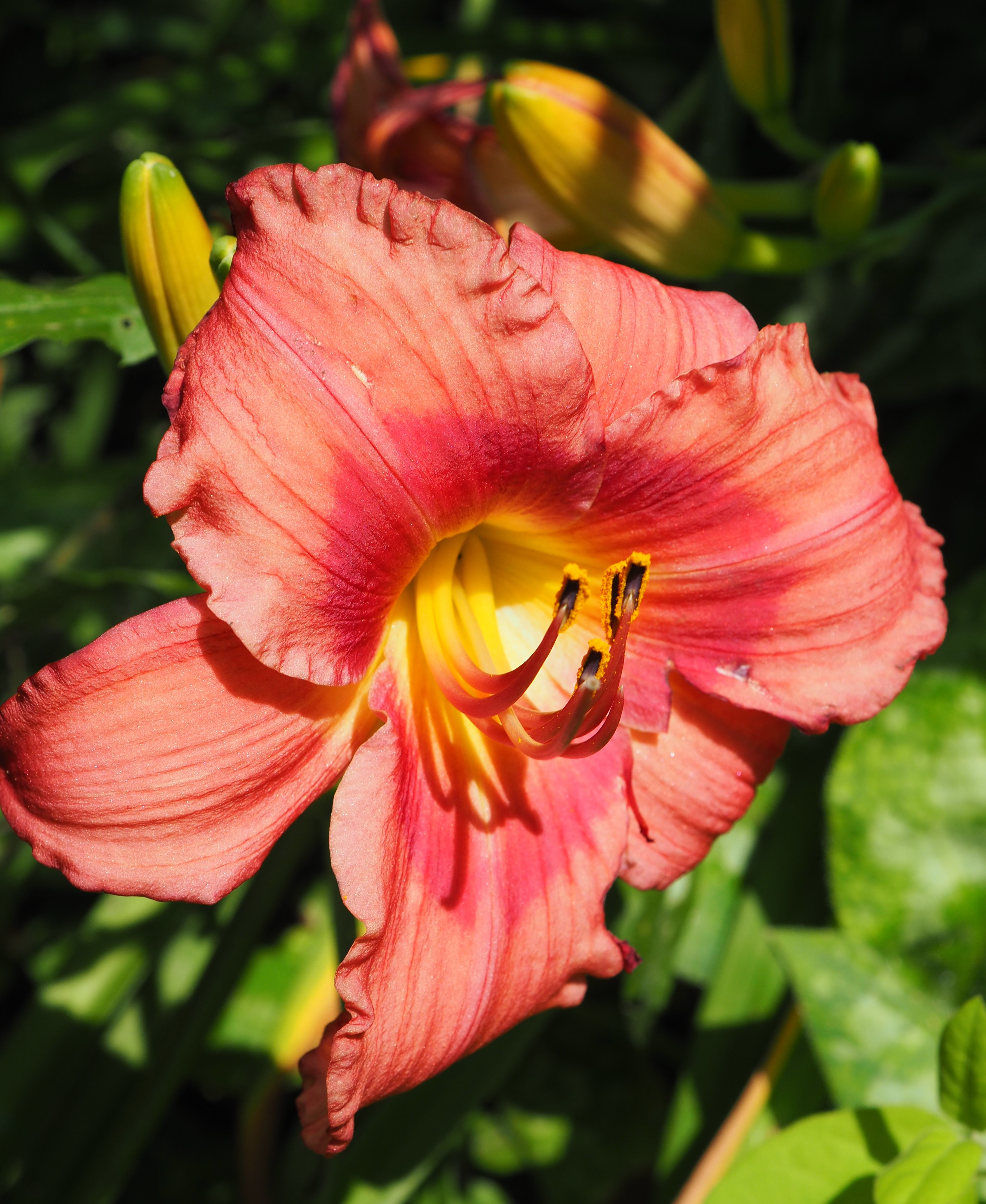
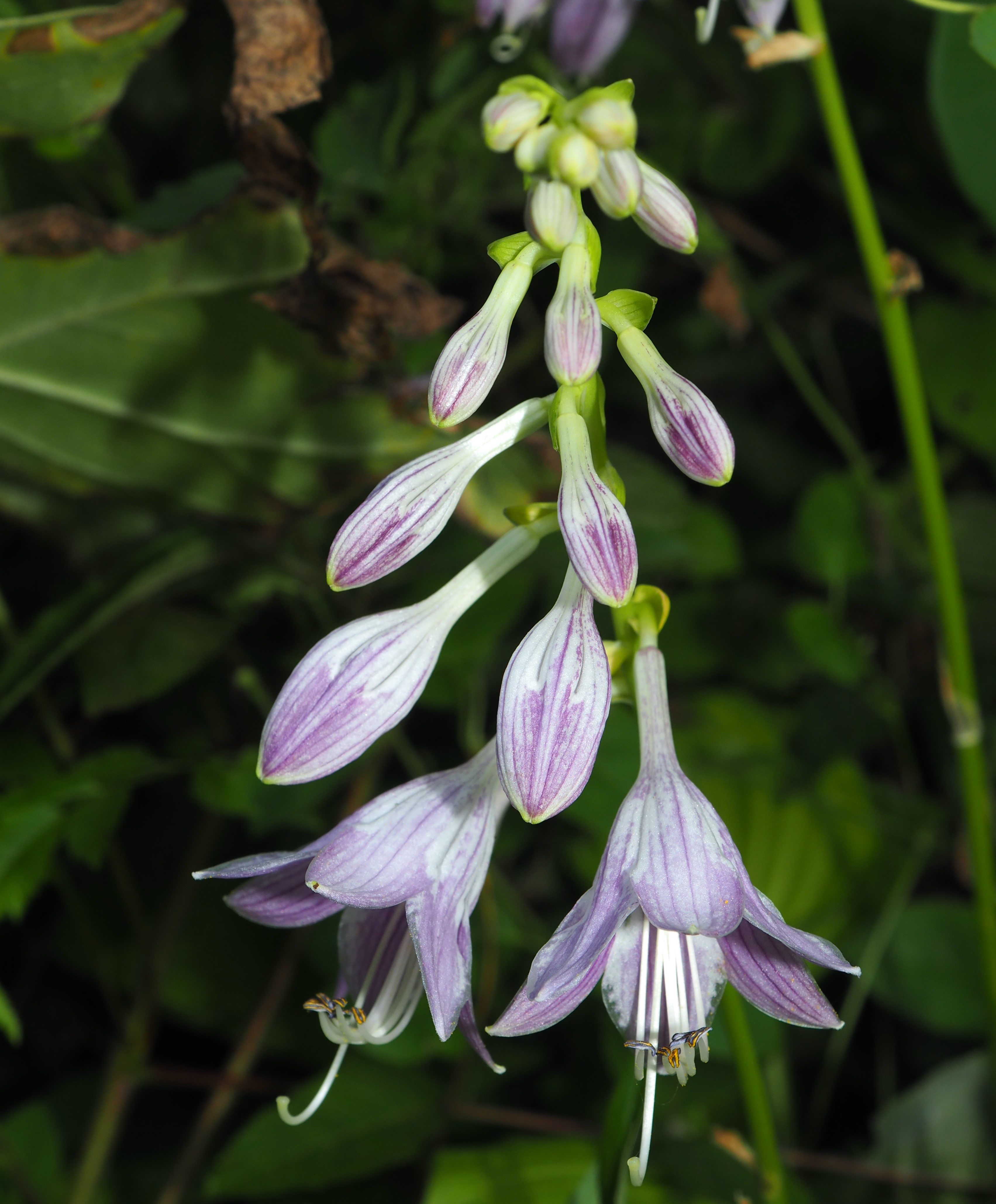
The heat wave is over, but a minor one is supposed to start today. We did have a few delightful days - coolish. I didn't feel the whole time I was out taking photos that I needed to run for the coolth of the house. The balloon flowers got a slow start - one flower at a time, due to crowding from some more of those walnut saplings. A new color of Day Lilies started blooming, some of them very pale pink. Then a hosta on the south side of the house started to display its tower of blossoms.
Remember that there is information in the name of the file for each image. You can see it by mousing over the image - look at the lower left of the screen. Or you can click on the image to get to the (usually) larger image. Then the info is displayed in the address line above. Sometimes the second click will actually display a different view of the original image.
Another week of not having much to report in the way of ants. First, the Eastern Black Carpenter Ant. Then another member of the Carpenter Ant group. Then another Myrmicine Ant, probably a Punctured Ant like last week, and finally a Small Honey Ant with some kind of prey. This ant was found on my neighbors' Swamp Milkweed and has a small prey in its mouth.
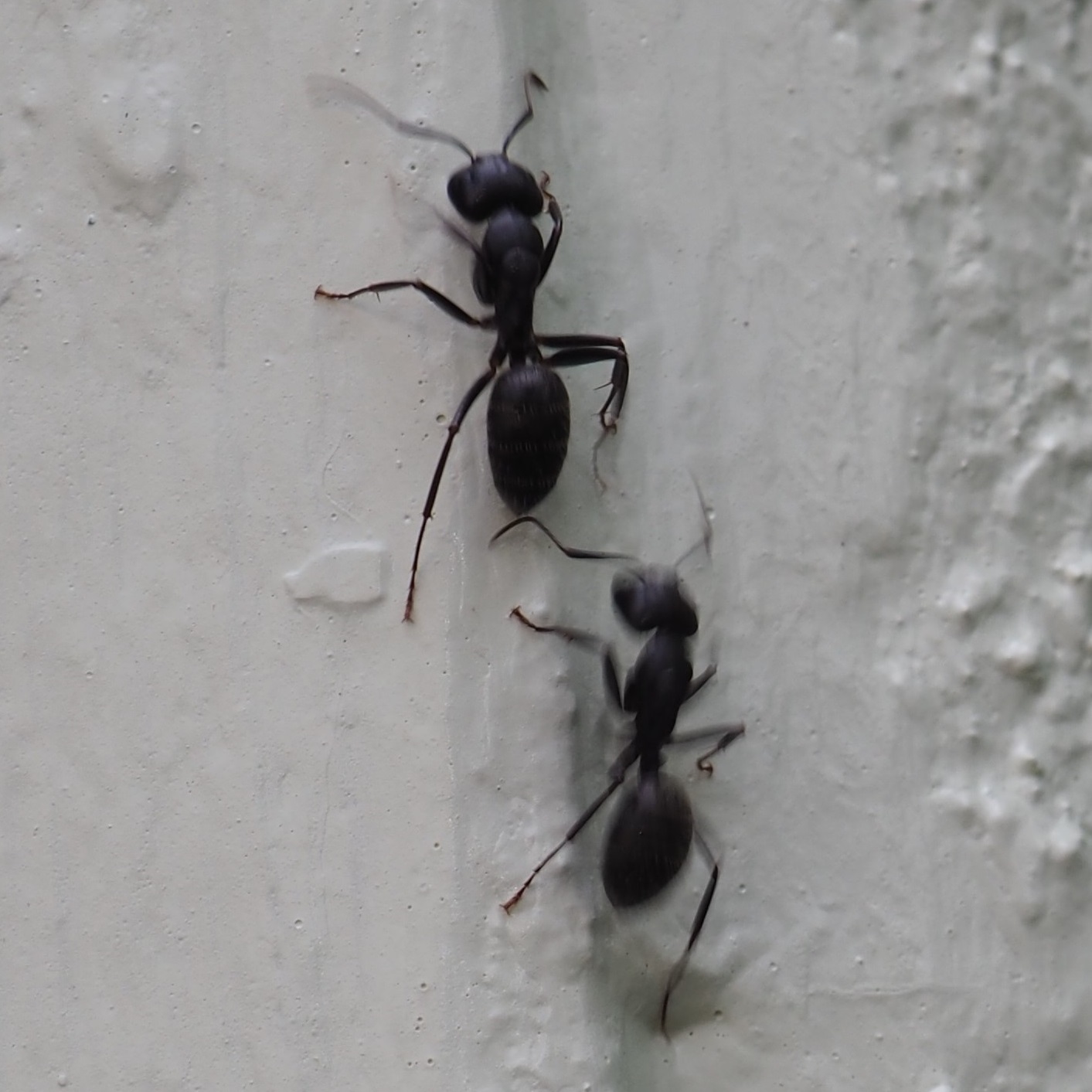
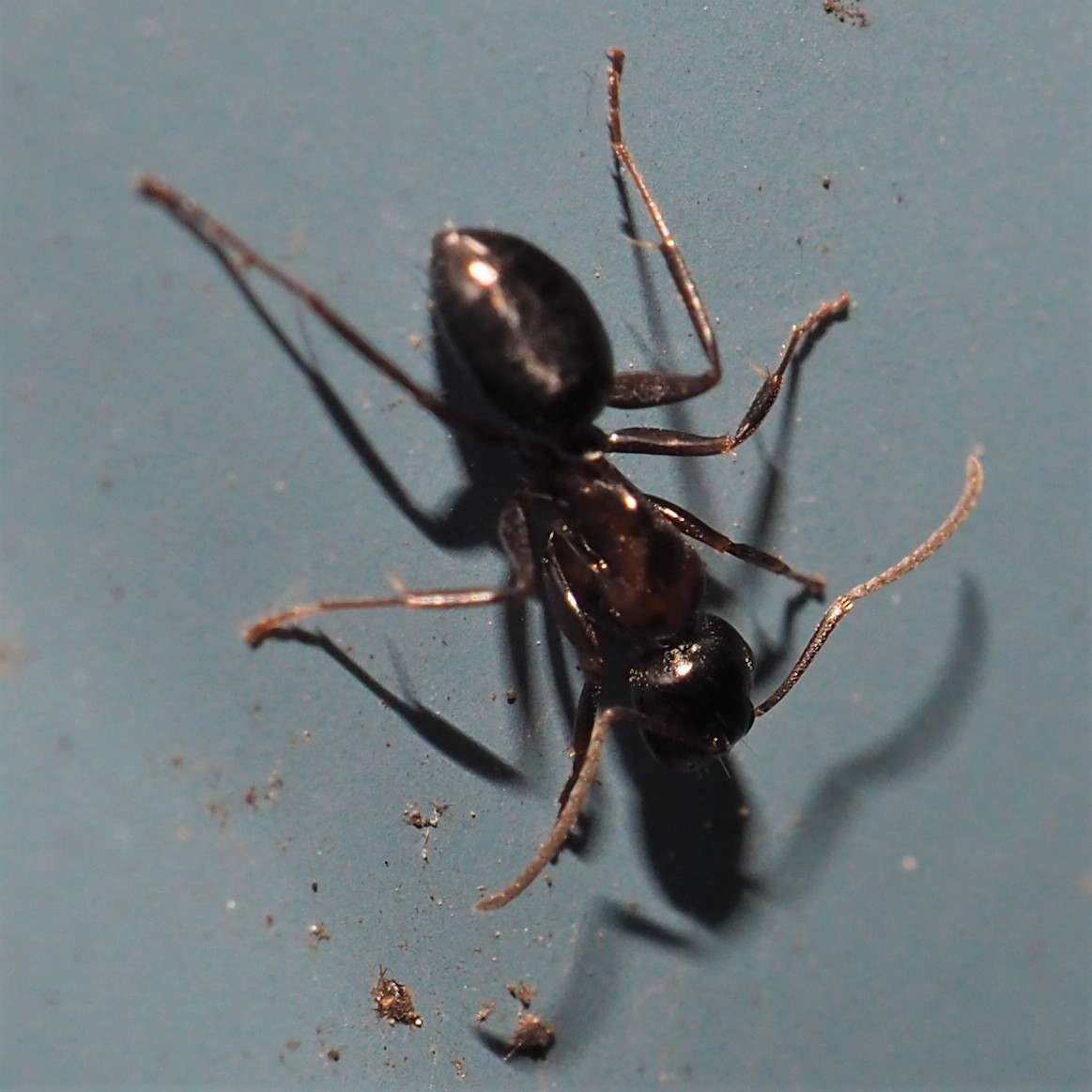
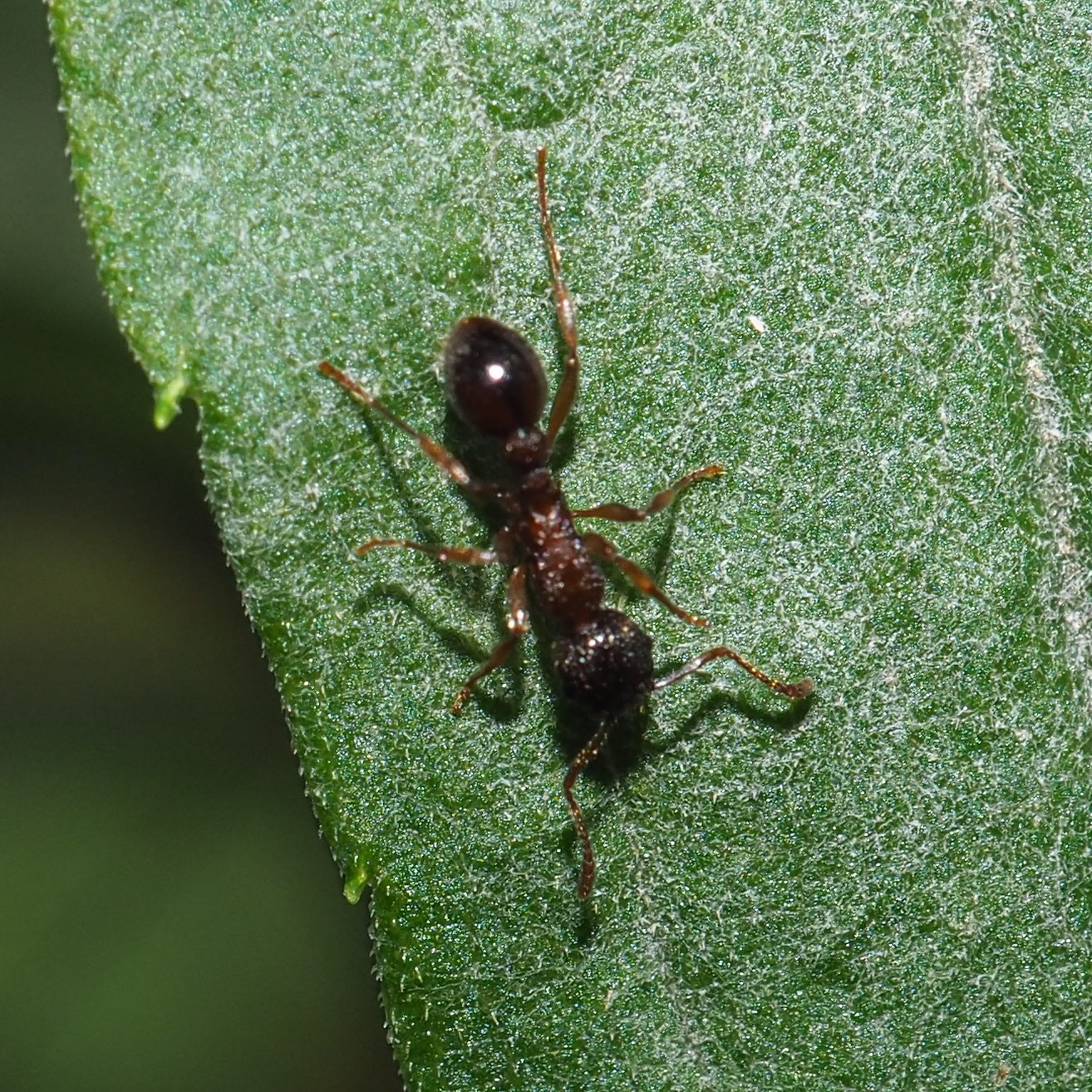
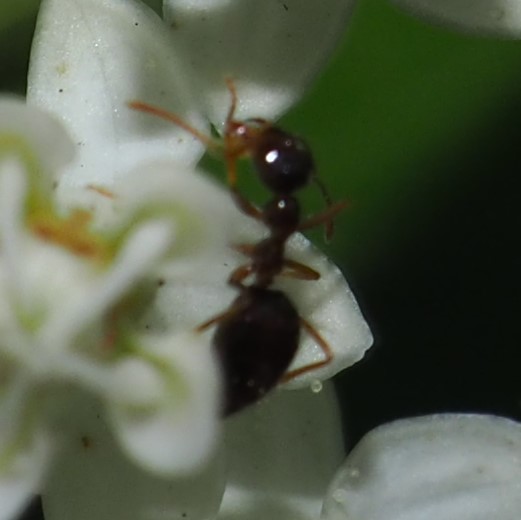
The barklice are doing well. First is yet another Metylophorus novaescotiae. They have been around about a month already. Second and third are Echmepteryx hageni, the Scaly-winged Barklouse.
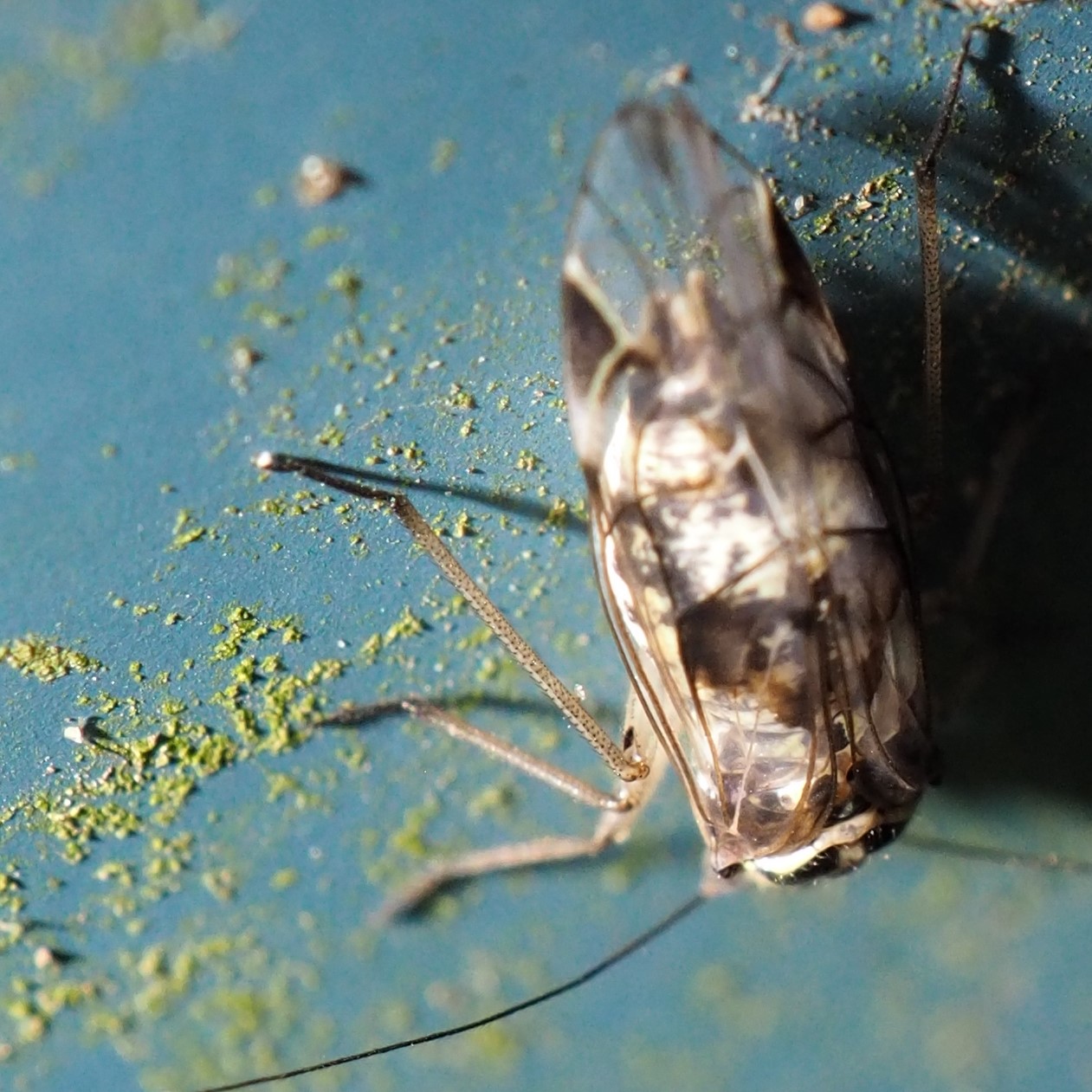
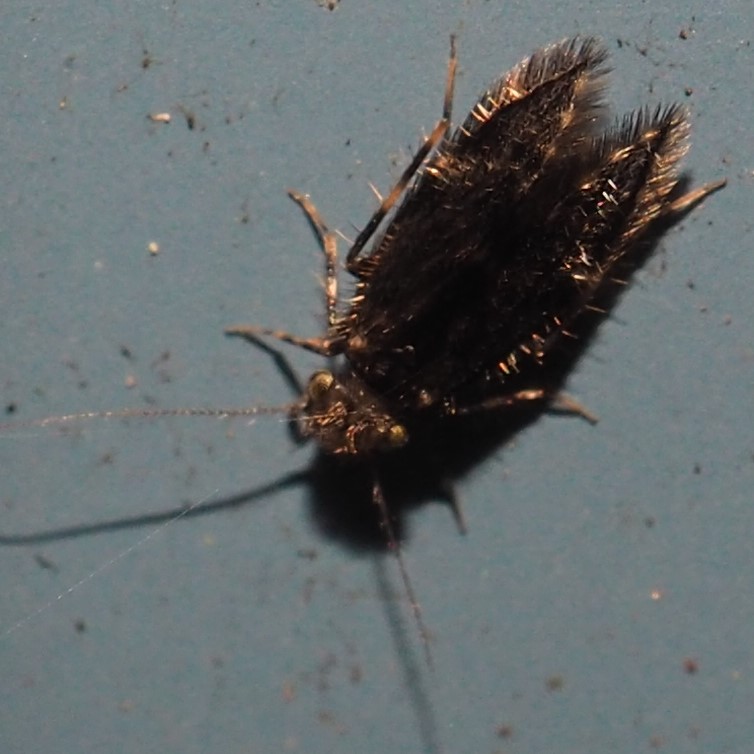
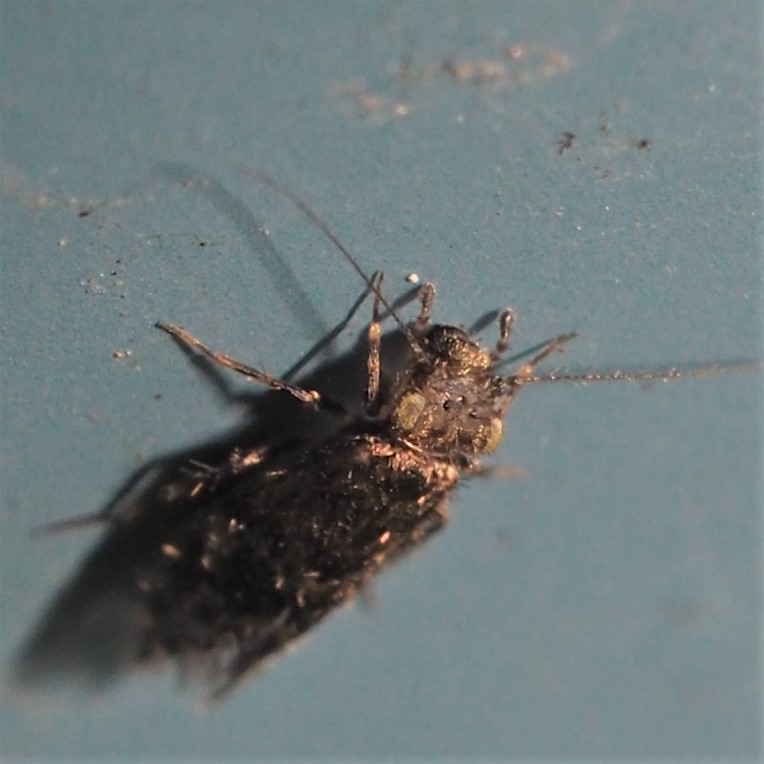
This first one may be a very immature leaf- or plant-hopper; or maybe a Barklouse or Psyllid nymph. Second is probably a Psyllid.
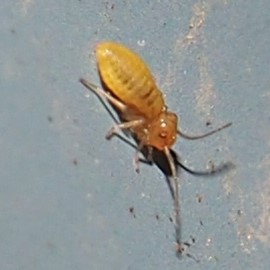
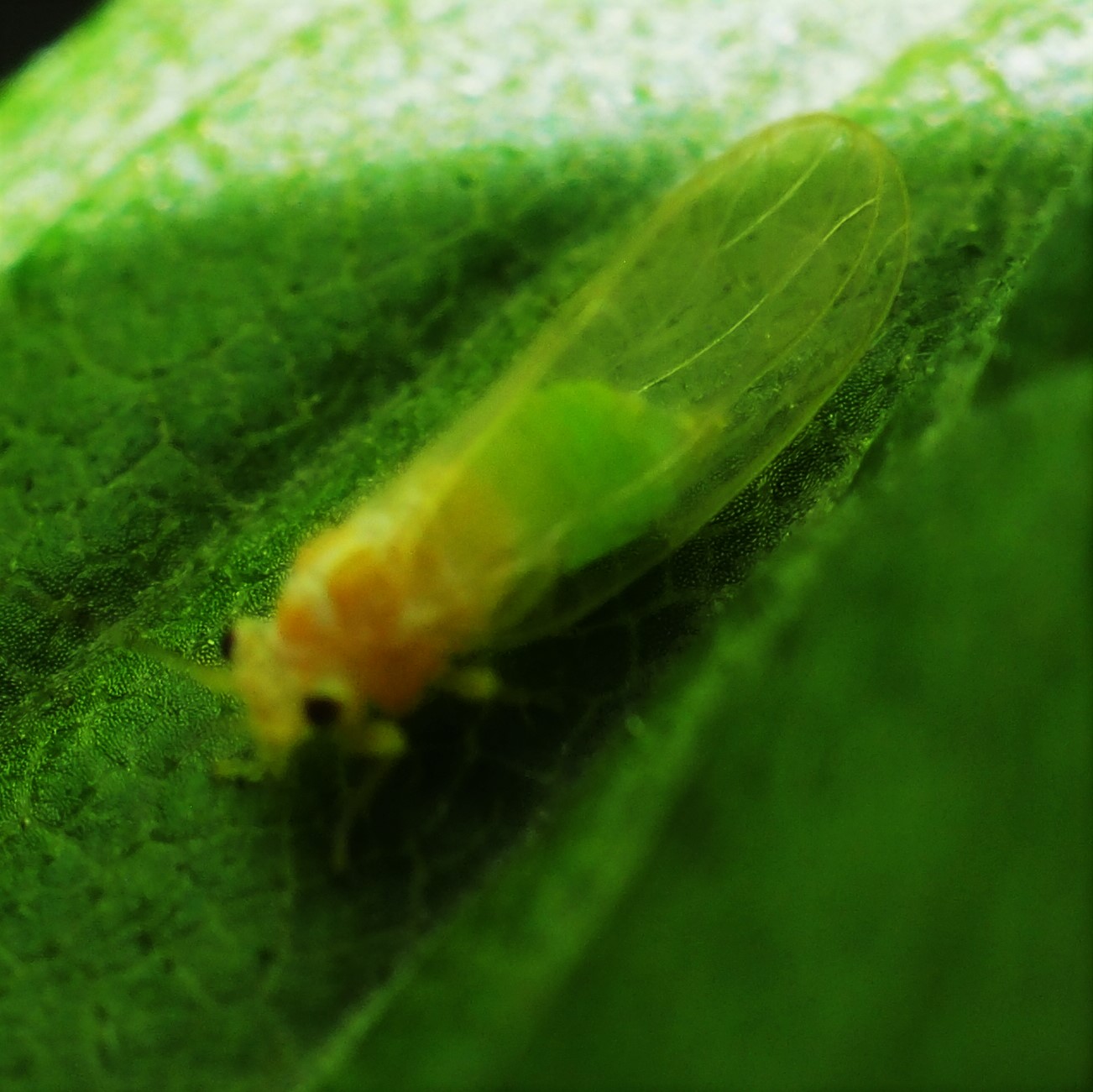
We had a couple of small bees on the thistle-like flowers of the Burdock plant. One, a little blackish bee, and the other (two images), a metallic green or gold Sweat Bee. That flower really attracts bees, and here we see a Western Honey Bee.
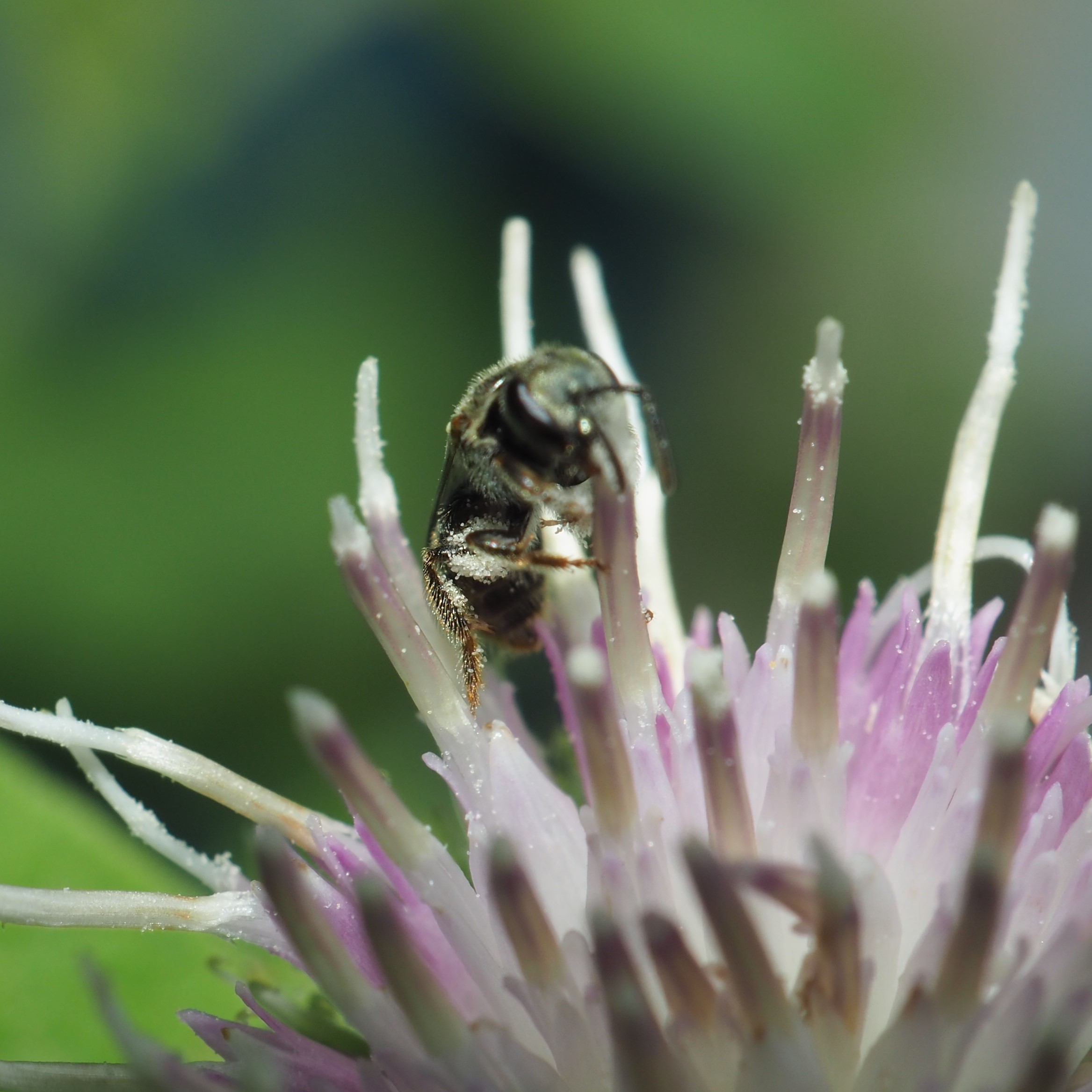
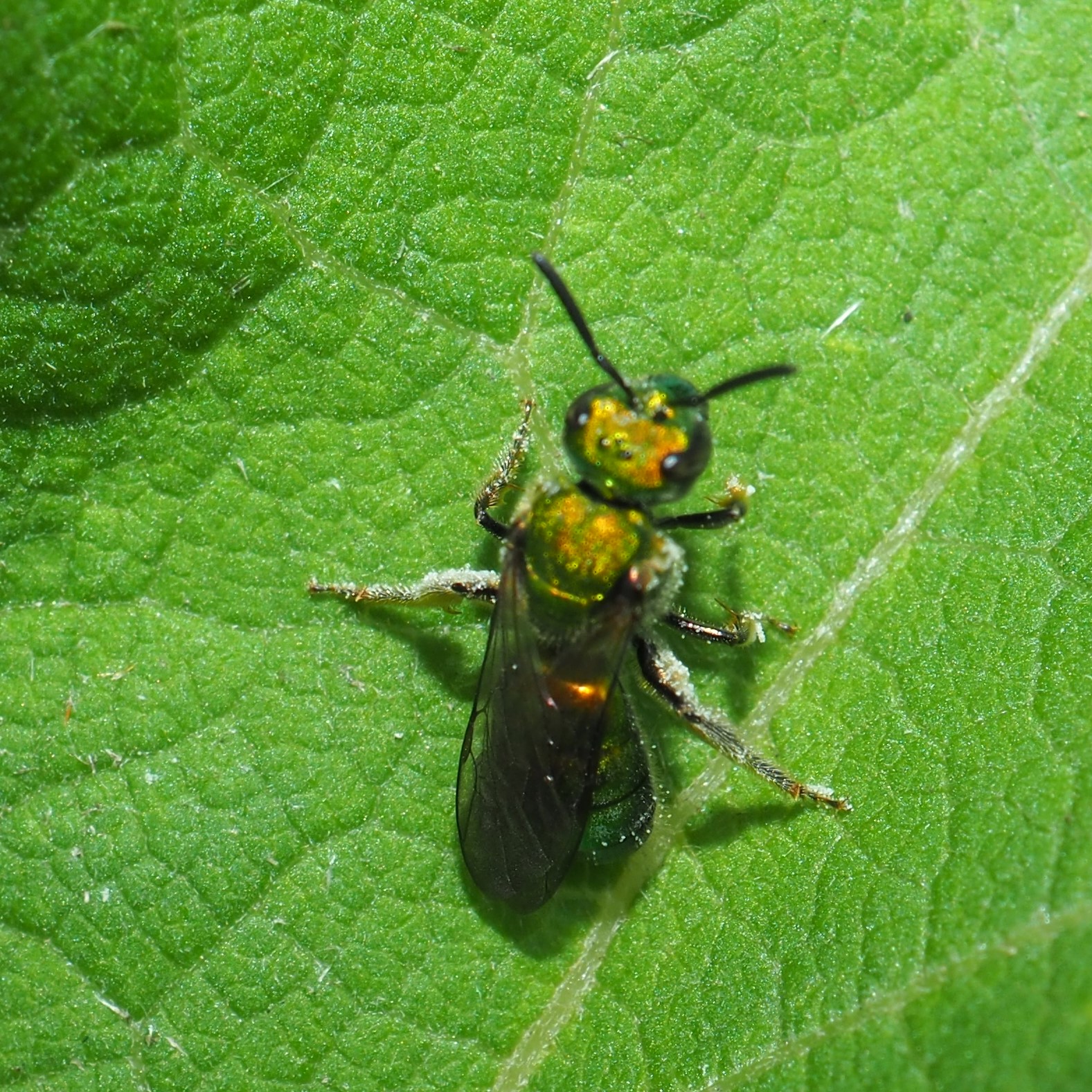
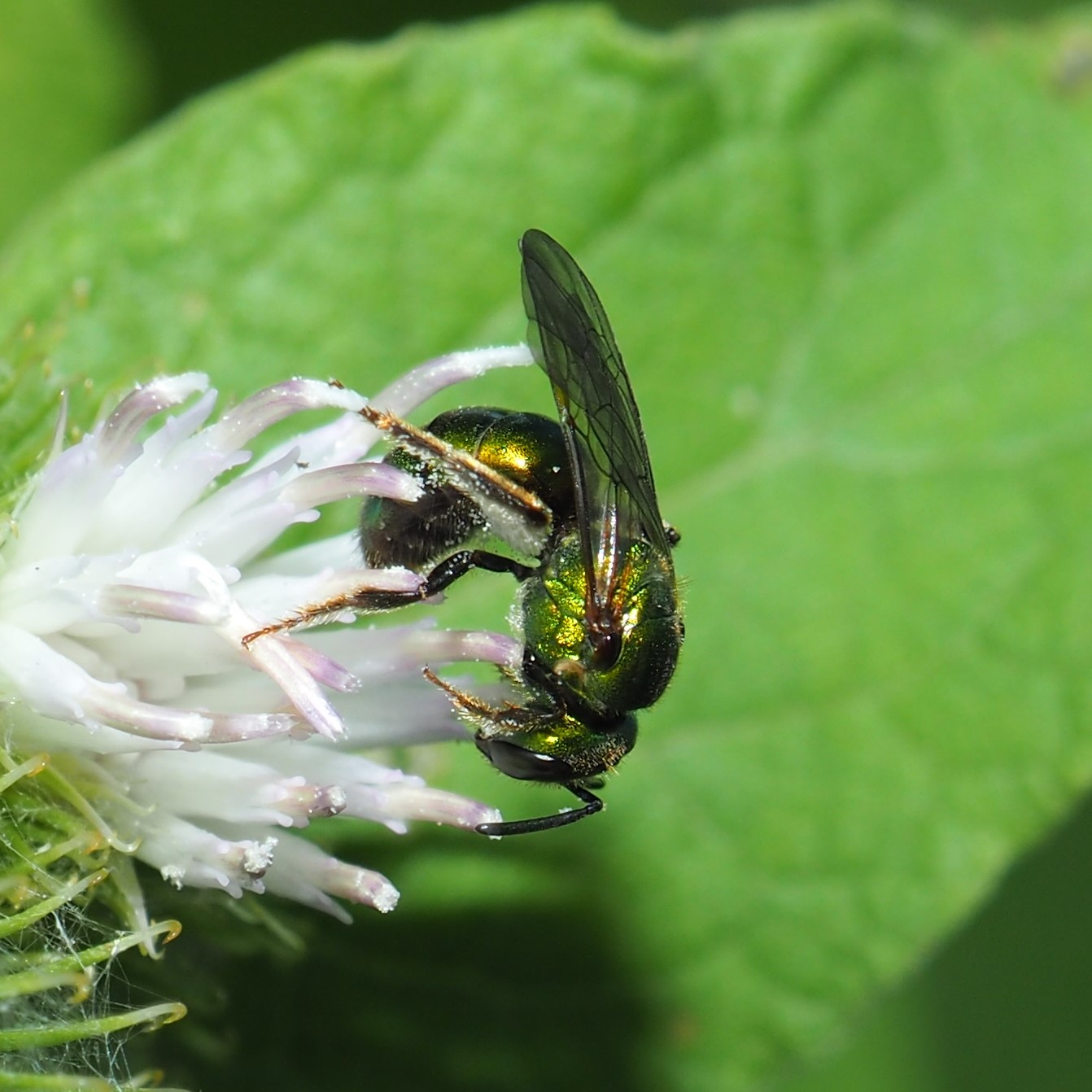
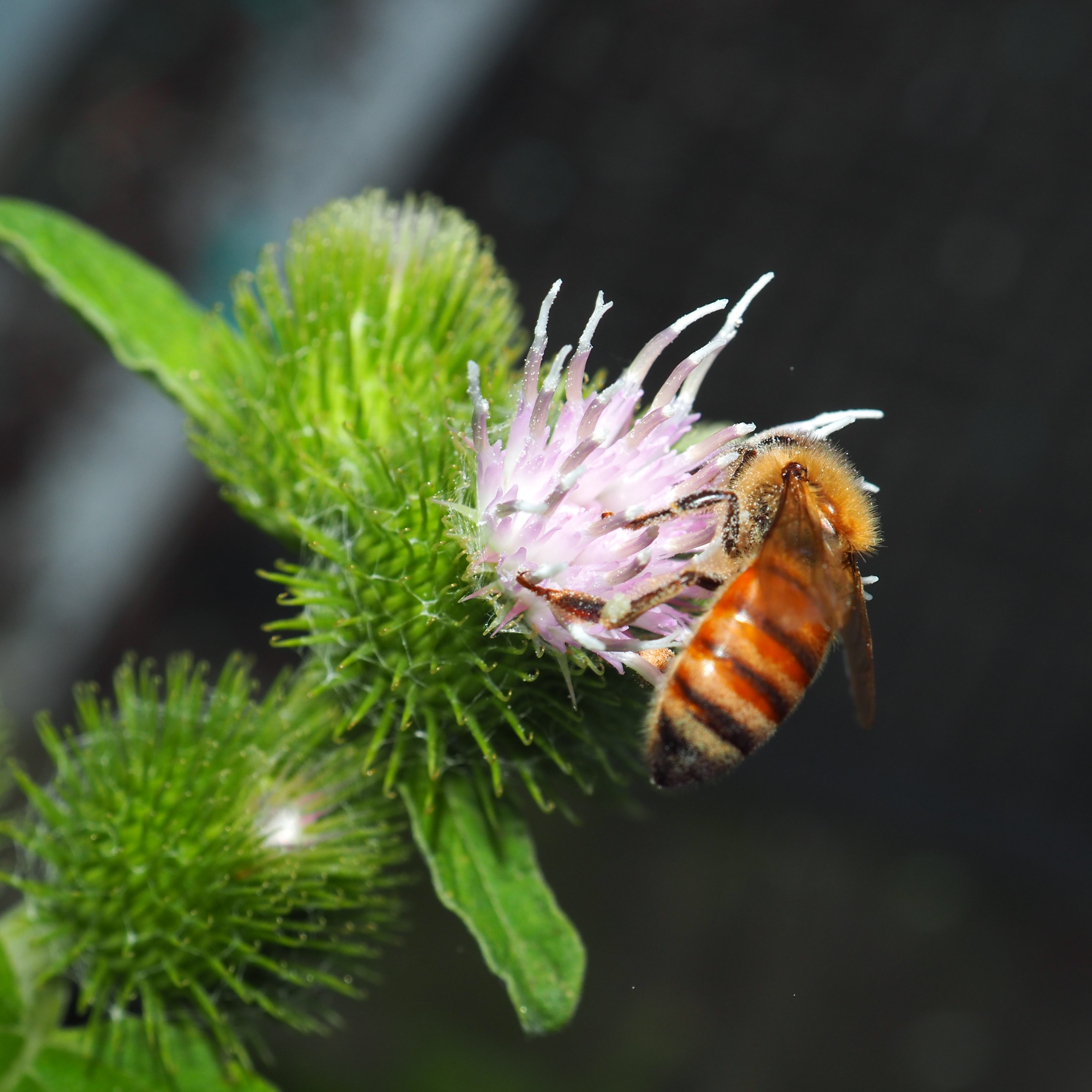
As for beetles, there were a few. Up first, a black Flea Beetle. Then a little possible Weevil on the underside of a thistle leaf, where I was looking for Keeled Treehoppers. And a Lightning Beetle.

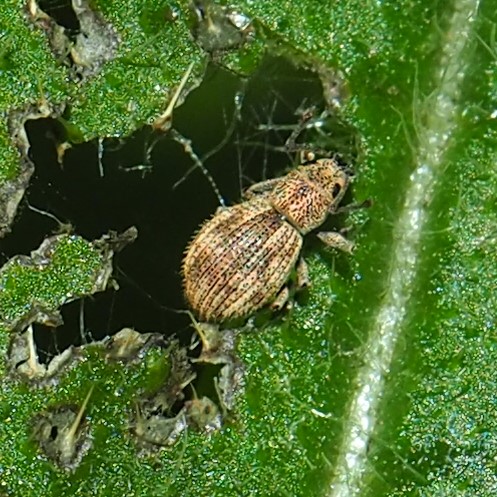
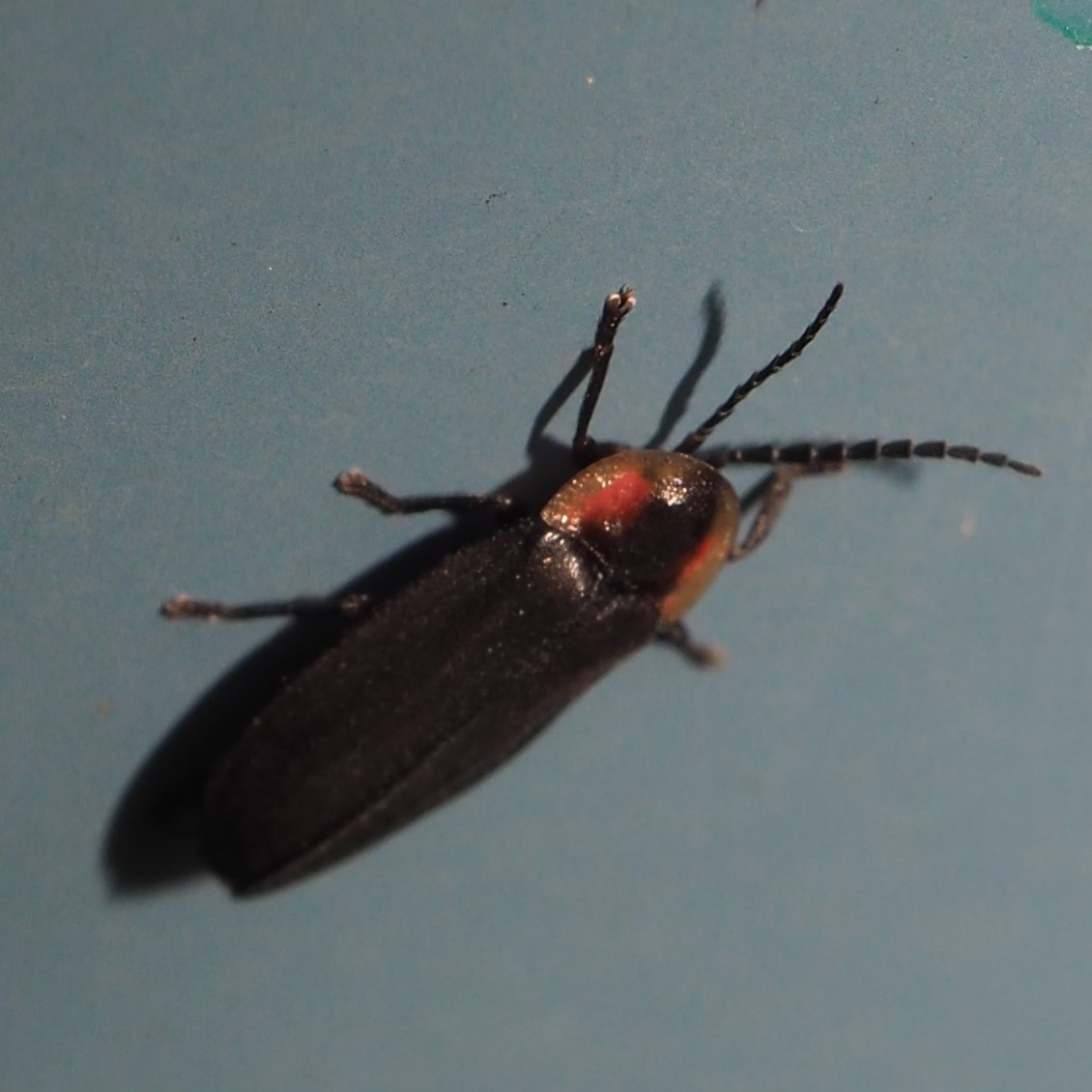
Here's a mystery Beetle, which looks so much like all the mystery beetles! And a beautiful shiny beetle with just the right amount of red on it. And finally, a strange-looking beetle that I don't remember seeing before.
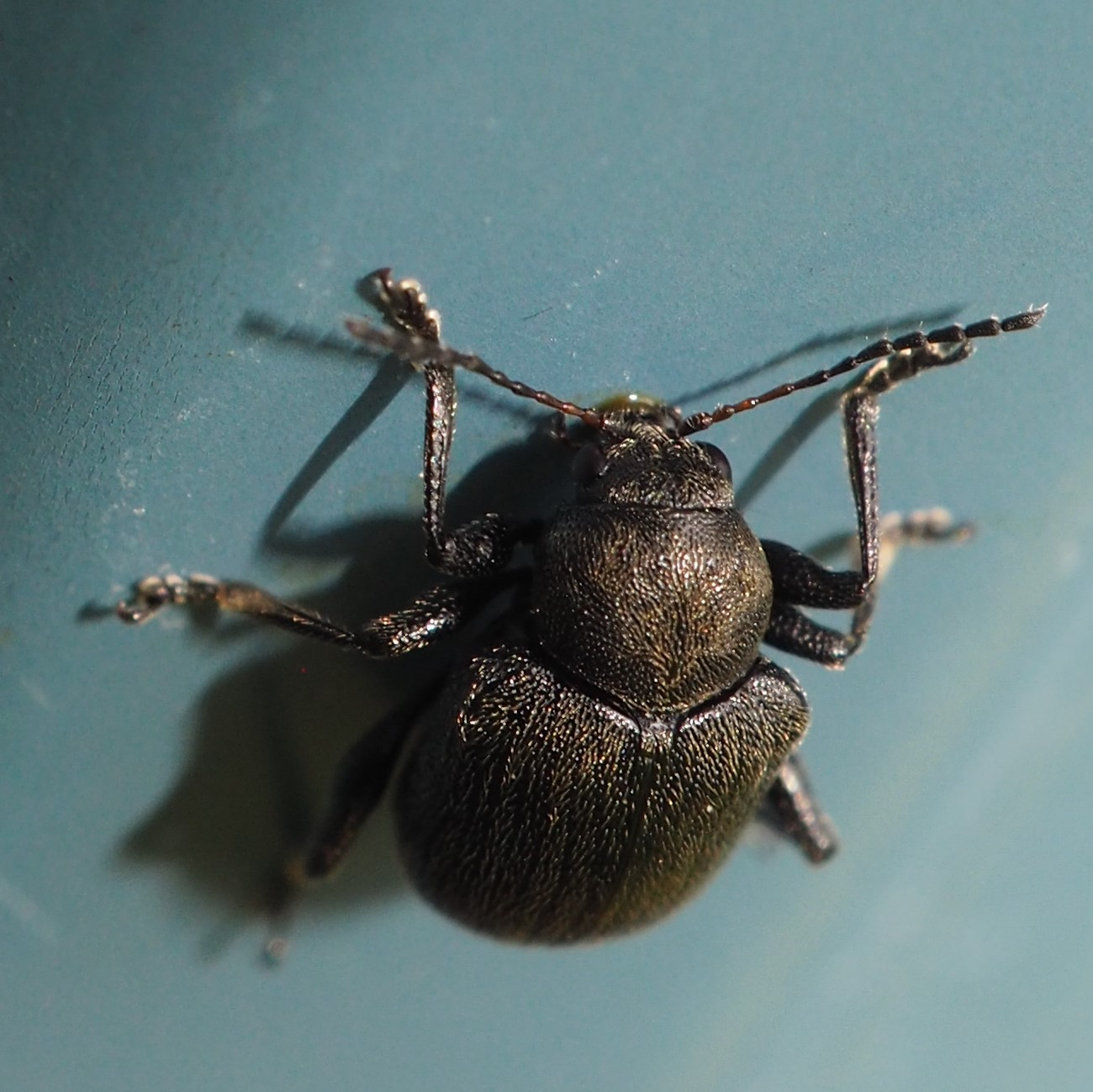
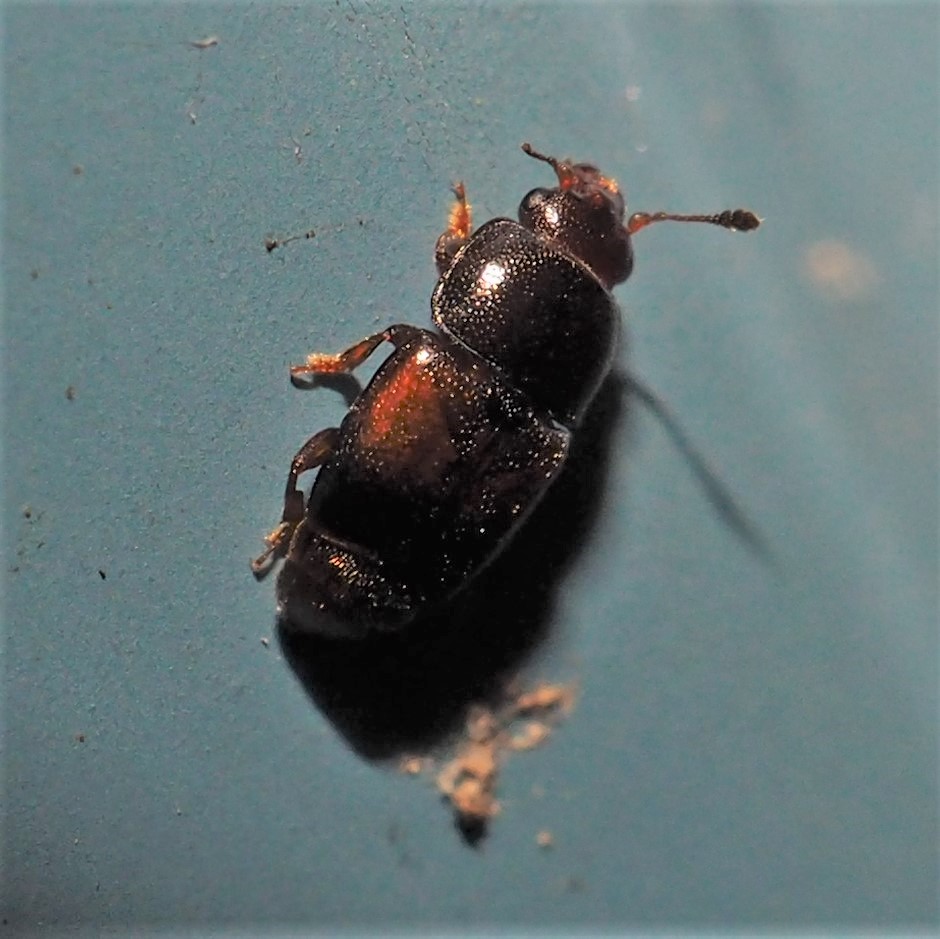
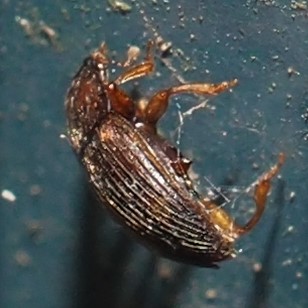
A rare find - a Bird! I feel ashamed to know so little about birds. They aren't easy to get when you only use your Macro lens. Also, they are usually quiet and you don't see them till they streak off in front of your eyes. But this one, seen yesterday afternoon, was in a little group (maybe only two, and those maybe a pair or maybe rivals) who were screeching back and forth. Maybe one of you can identify it for me. Confession: in any of these pictures, I don't know which is which. In the first shot, Birdie is sitting in a big walnut sapling. Second: on my south neighbors' roof. Third: on the fence between our houses.
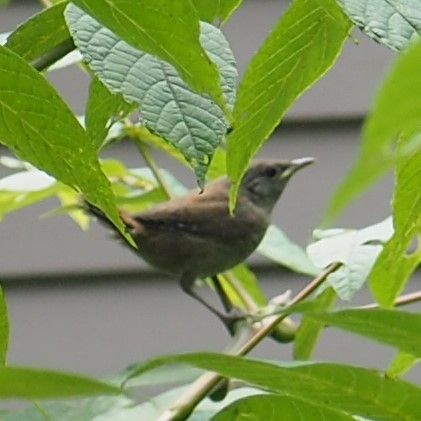
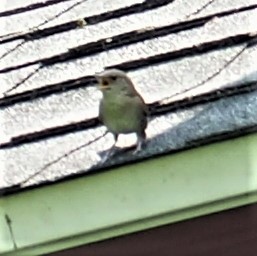
.jpg)
Here we are at the bugs. This first image of an Assassin Bug (Zelus luridus) is fuzzy because the focus hit the little wasp it is having for lunch. Next is a stilt bug, with its enormously long legs. Then one of those White-margined Burrowing Bugs. and finally a (shudder) Brown Marmorated Stink Bug.
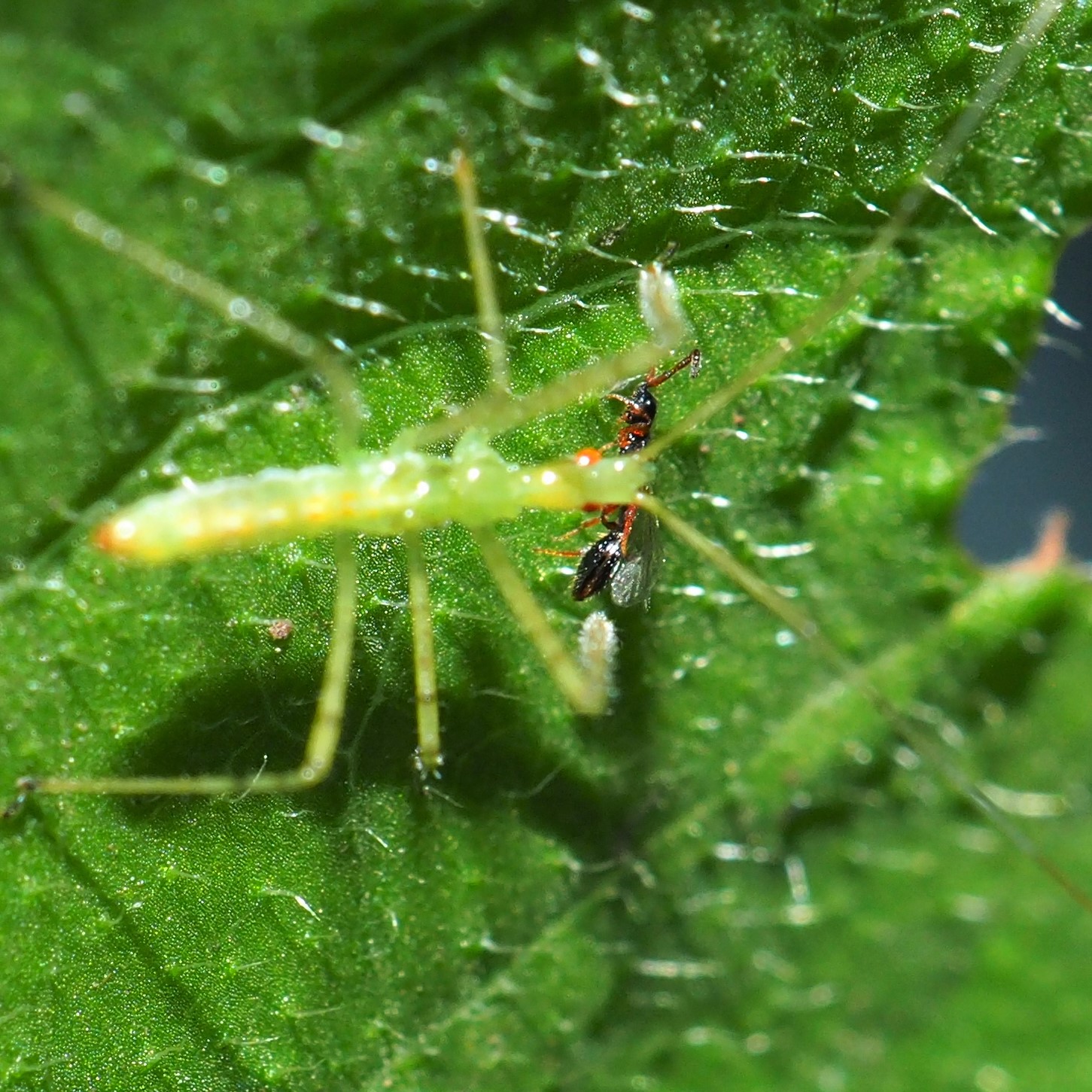
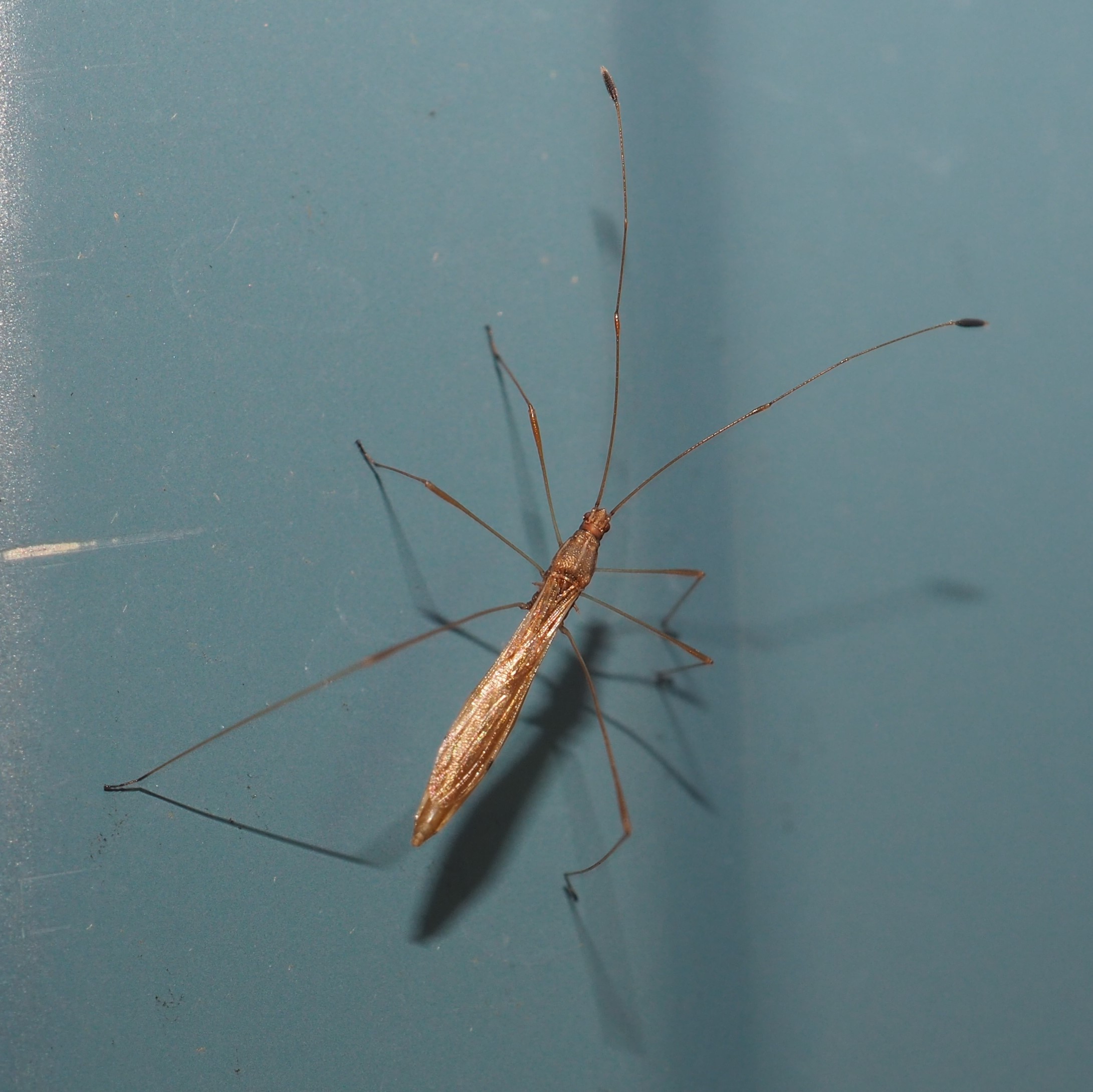
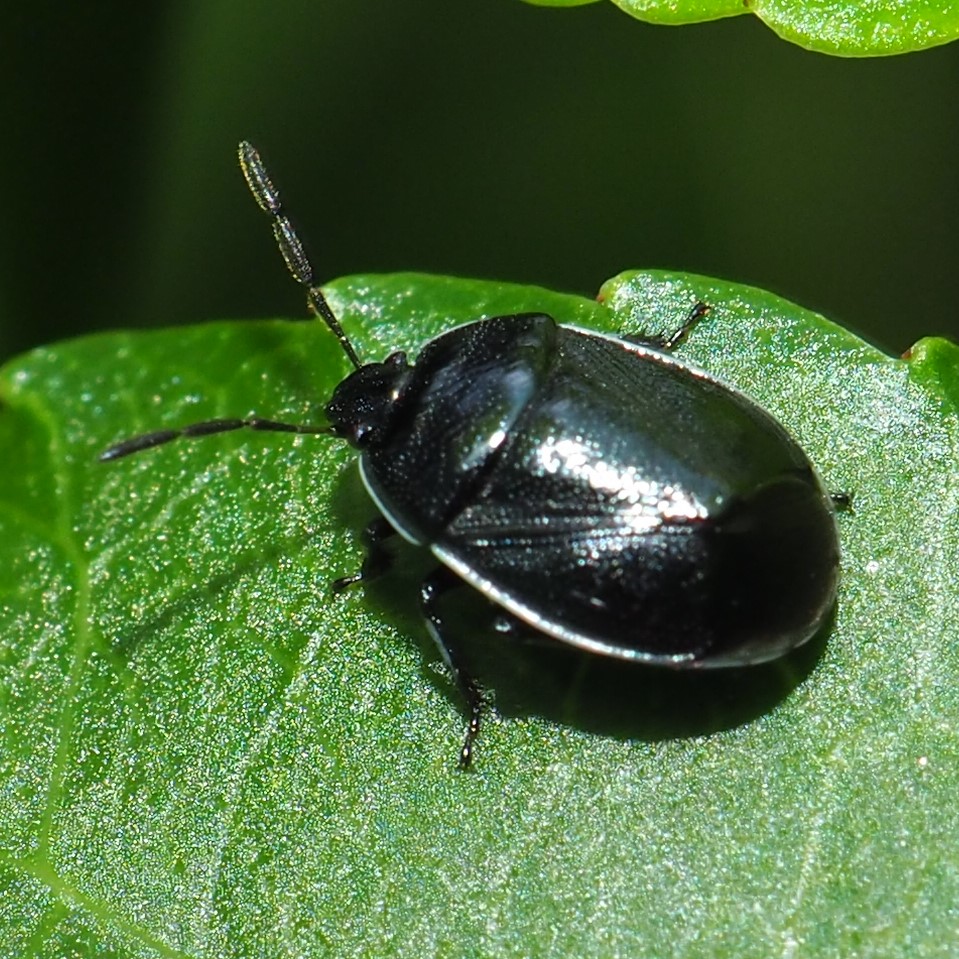
This first may well be the nymph of a (shudder) Brown Marmorated Stink Bug. Note the short white segment in its antennae. The exquisite second one is one I haven't seen for about a year - yes, it was August 1, 2018! It's a Lace Bug.
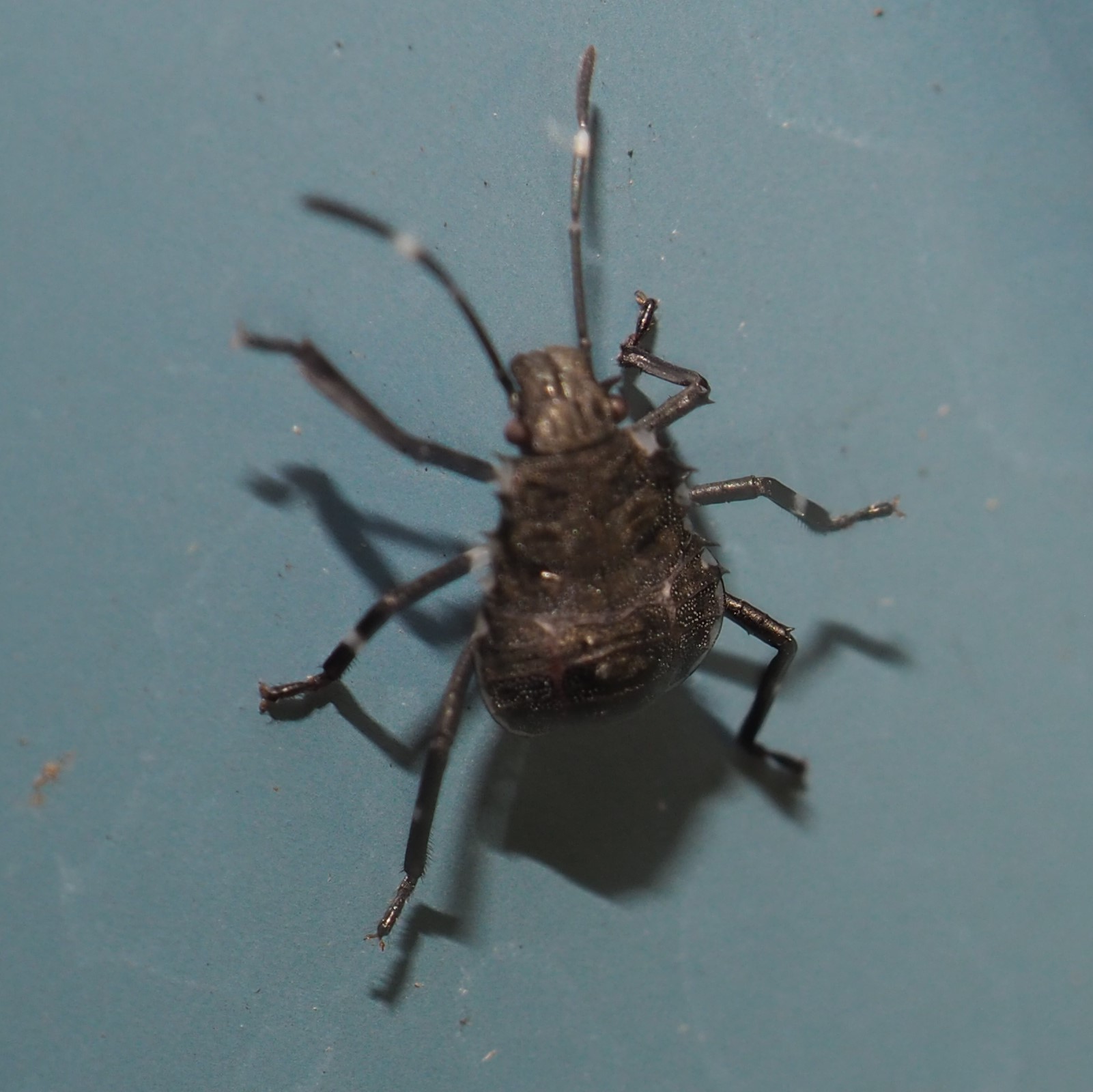
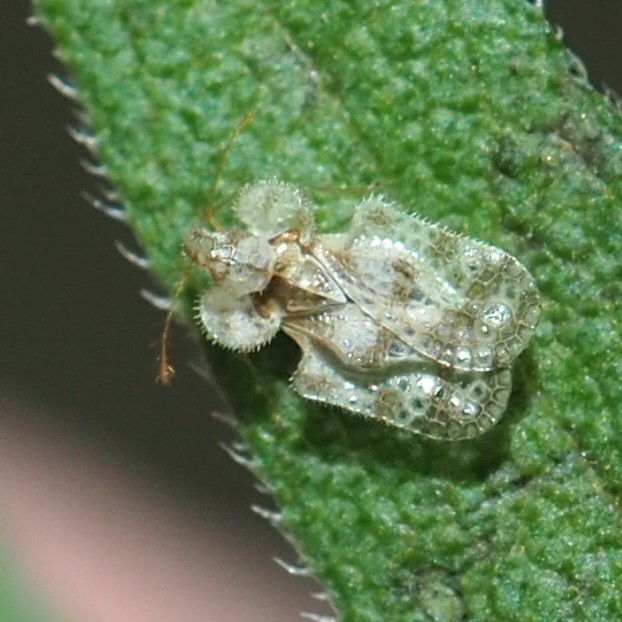
Here are some Plant Bugs. Images 1 and 2 were of a Plant Bug, and taken at dusk, when the light was just right. Number 3 is one of the Lygus genus bugs, and number 4 might also be one of them.
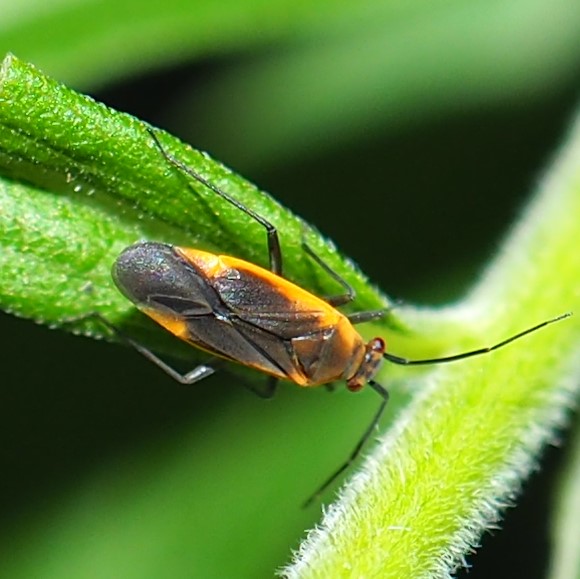
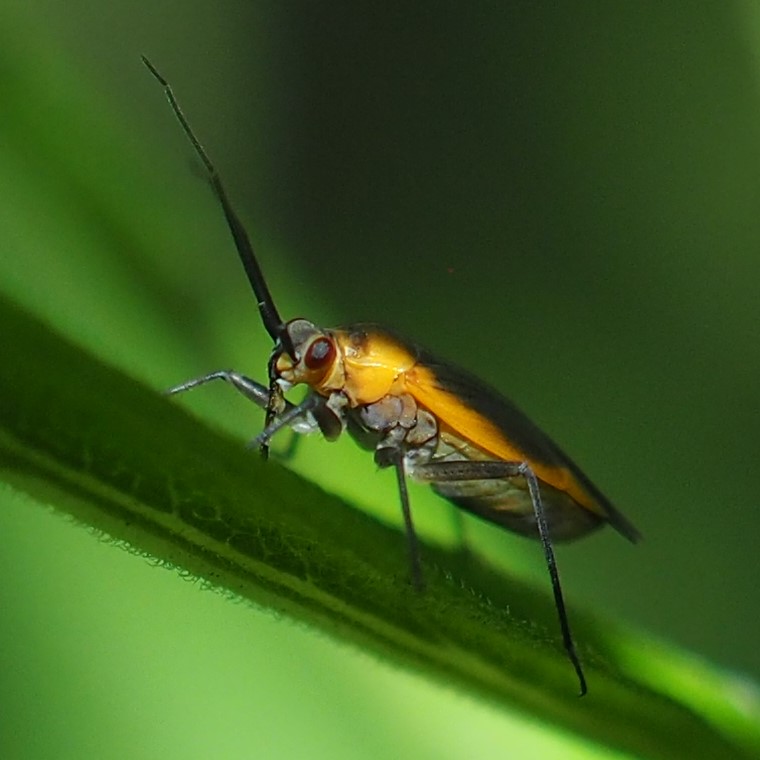
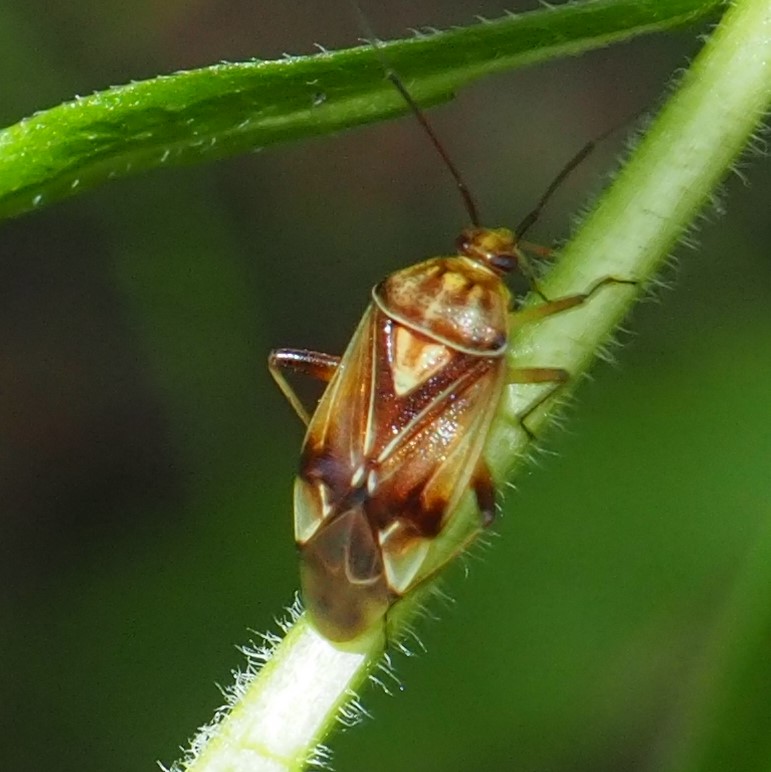
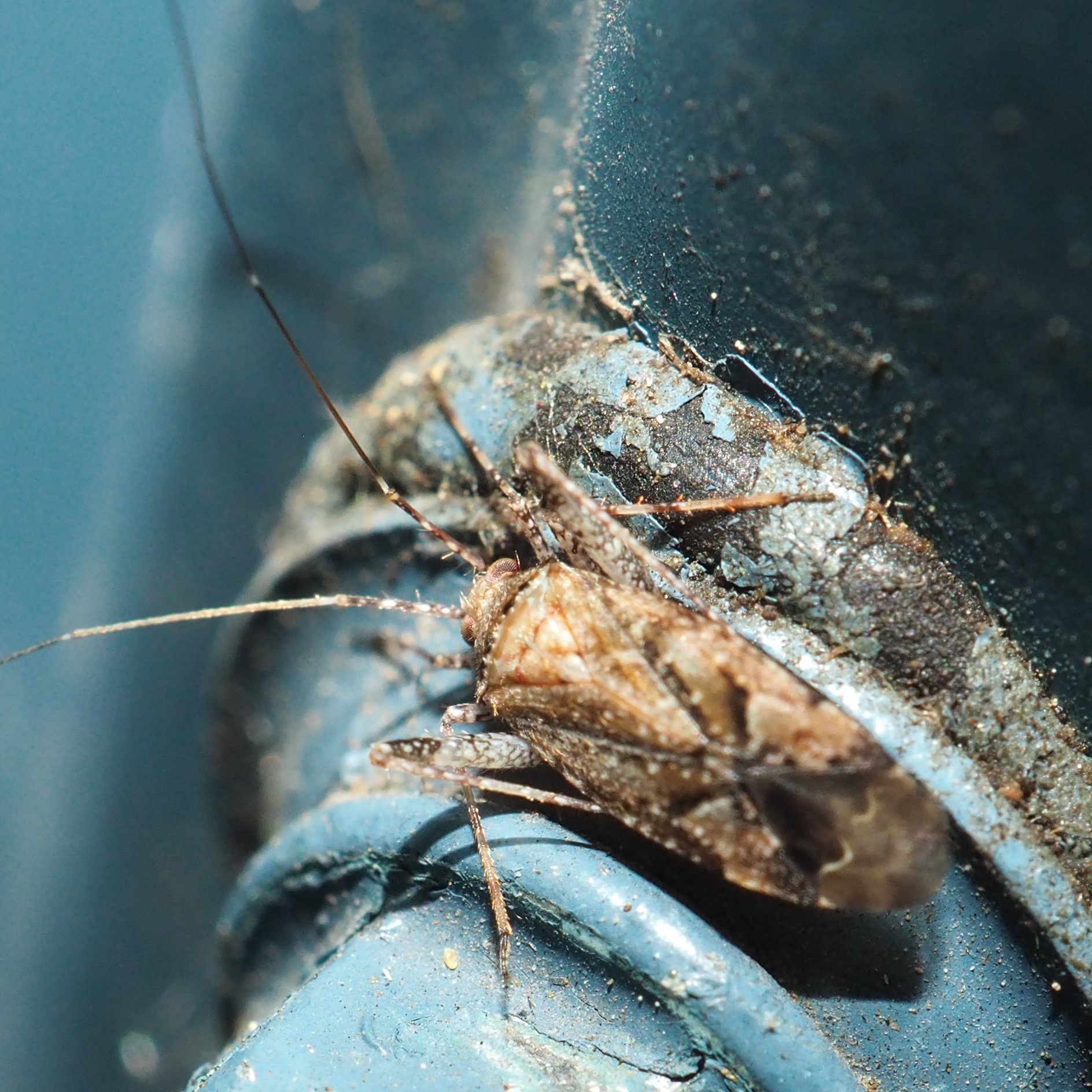
The leafhoppers are appearing in the plants and also on the Wall of Fame. Here is the lovely Candy-striped Leafhopper. The middle one is Scaphoideus pullus, and the third is probably another Scaphoideus species.
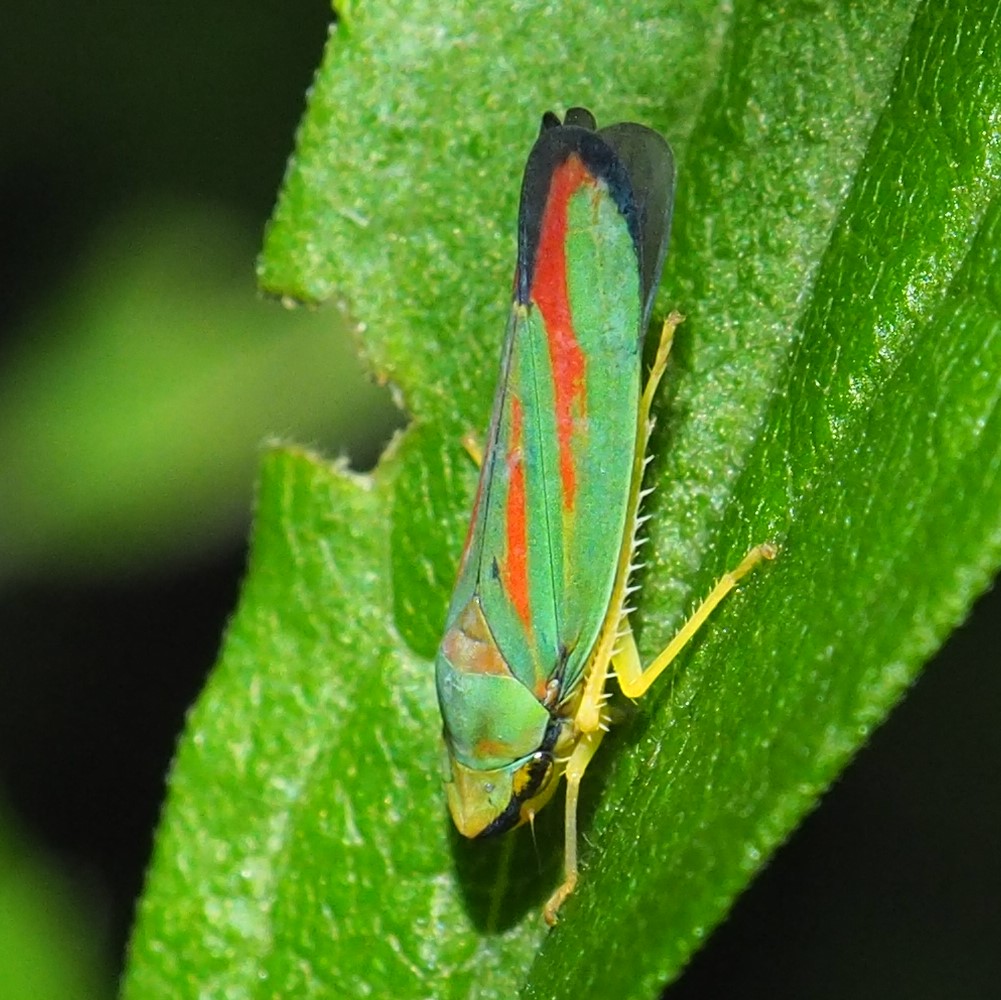
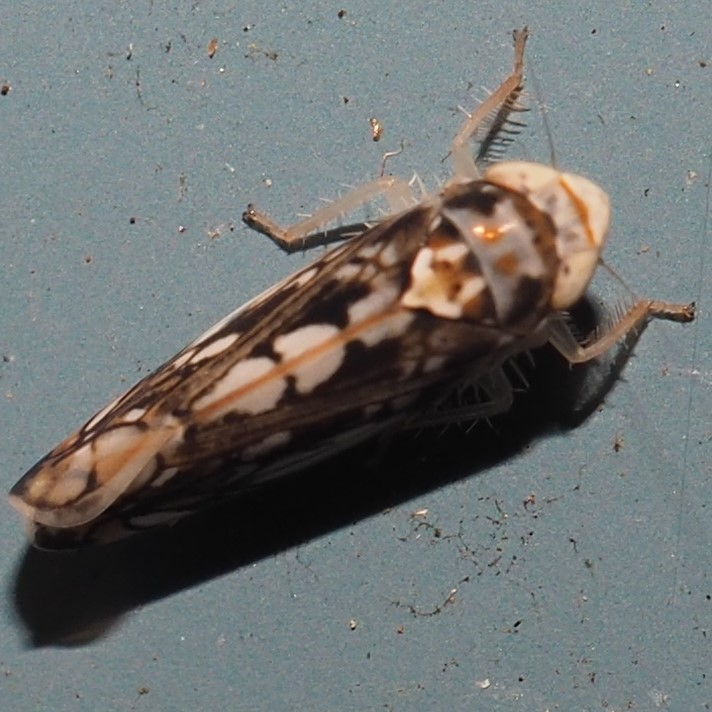
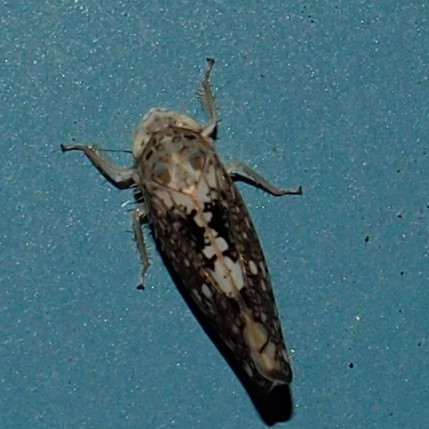
First here may in fact be yet another Scaphoideus species. Look at the partial flower design toward the rear end of the bug. Number two is one we haven't sen in a long time. It's a Japanese Maple Leafhopper. Third is most likely a Spittle Bug, and fourth is probably the Orchard Spittle Bug.
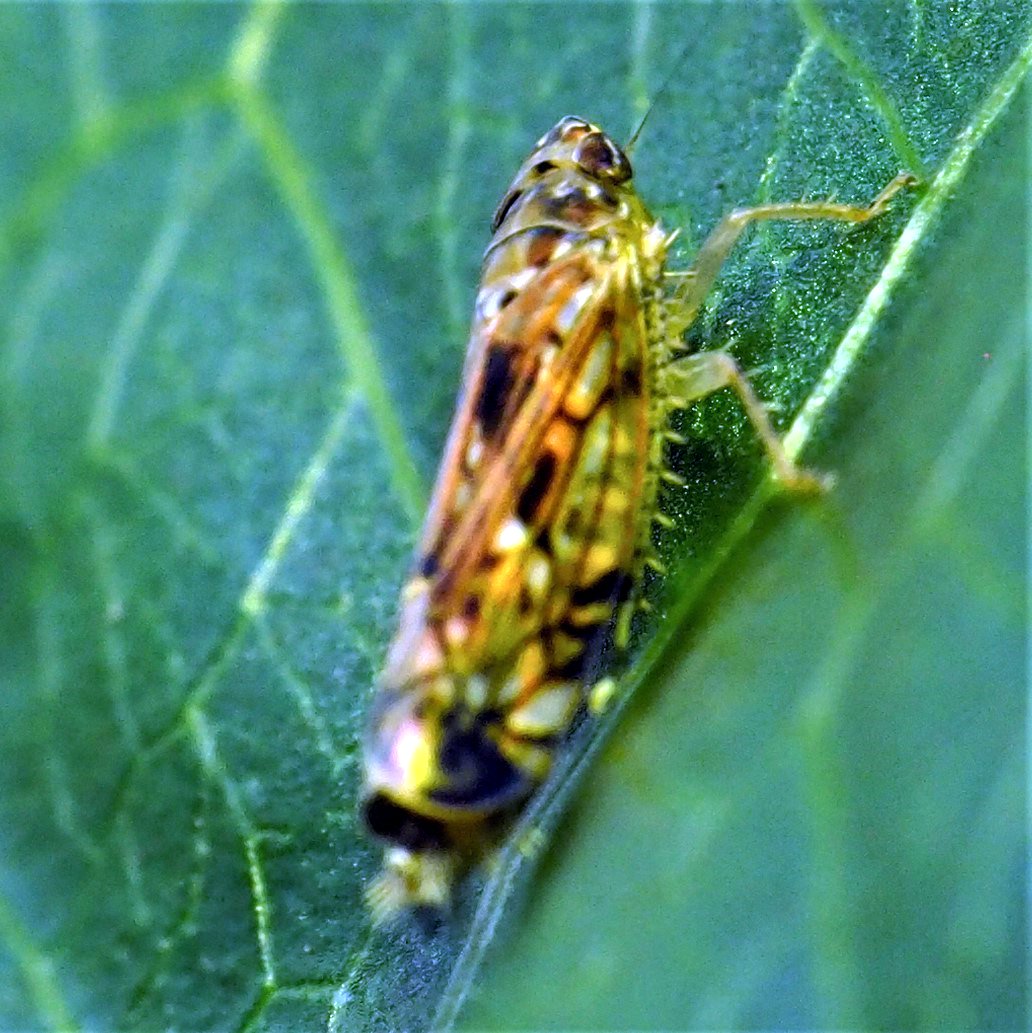
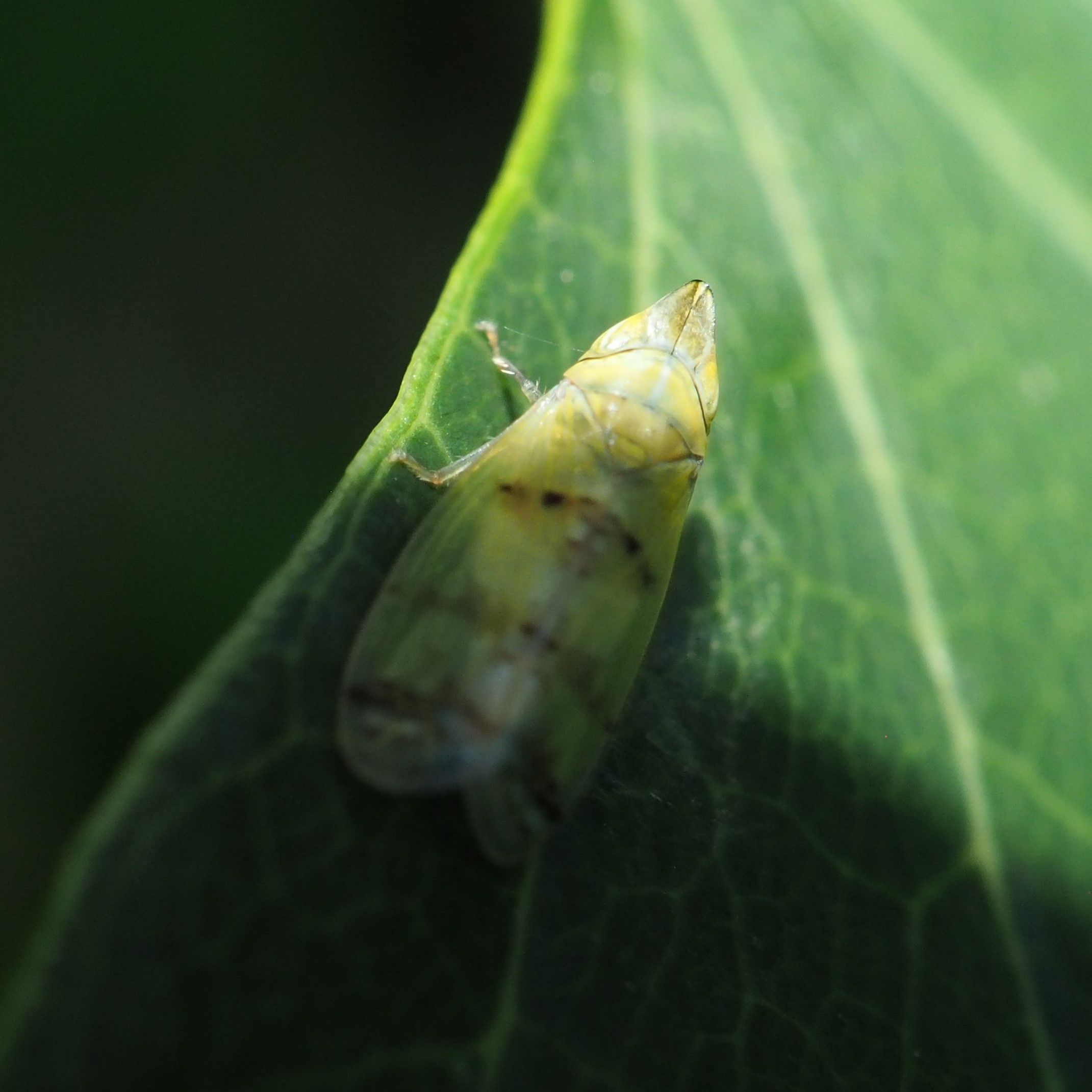
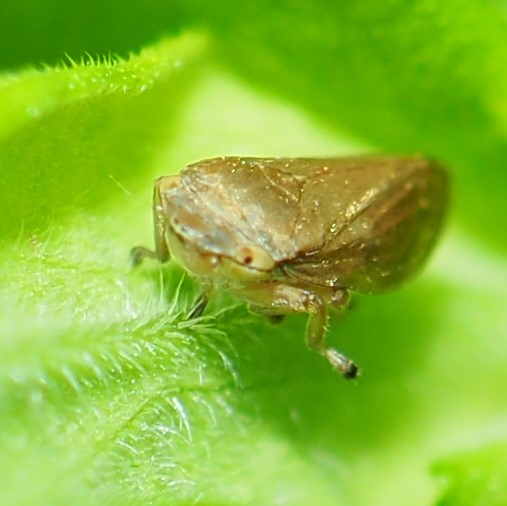
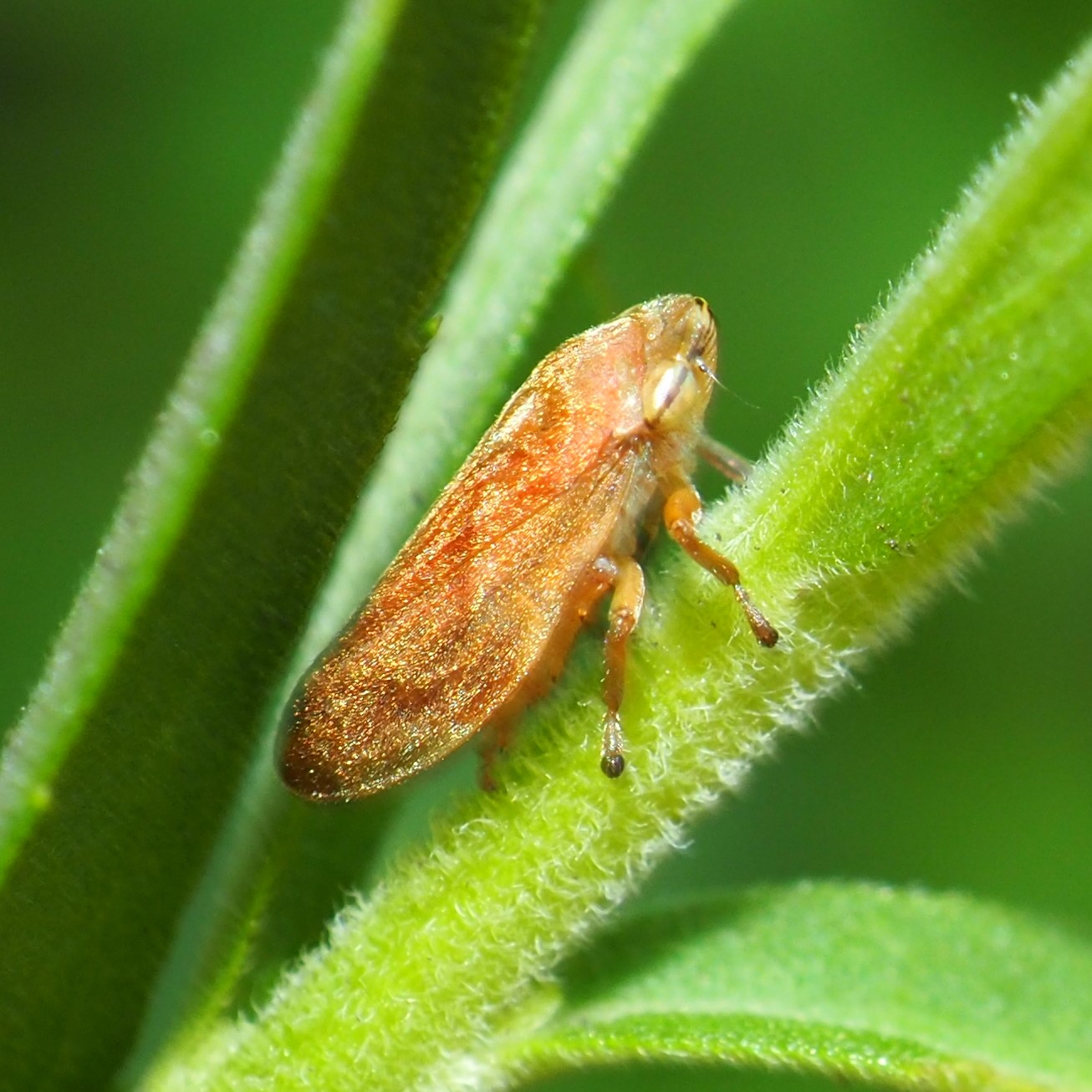
This nymph seems to be a young leafhopper, as we can see by the spikes on the back legs, a trait of leafhoppers. The side view shows how this one is longer than a lot of the leafhoppers we've seen before. The third little nymph we already saw as a possible young barklouse. These very little guys also resemble the nymphs of some very young other kinds of bugs.
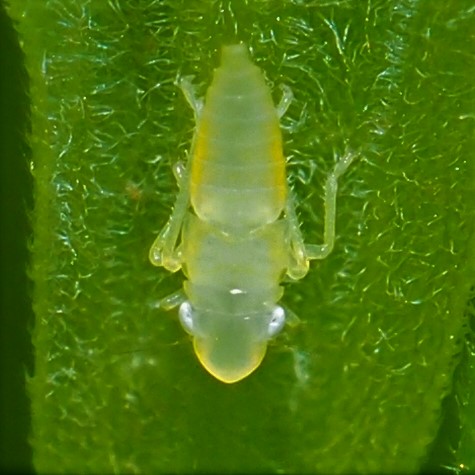
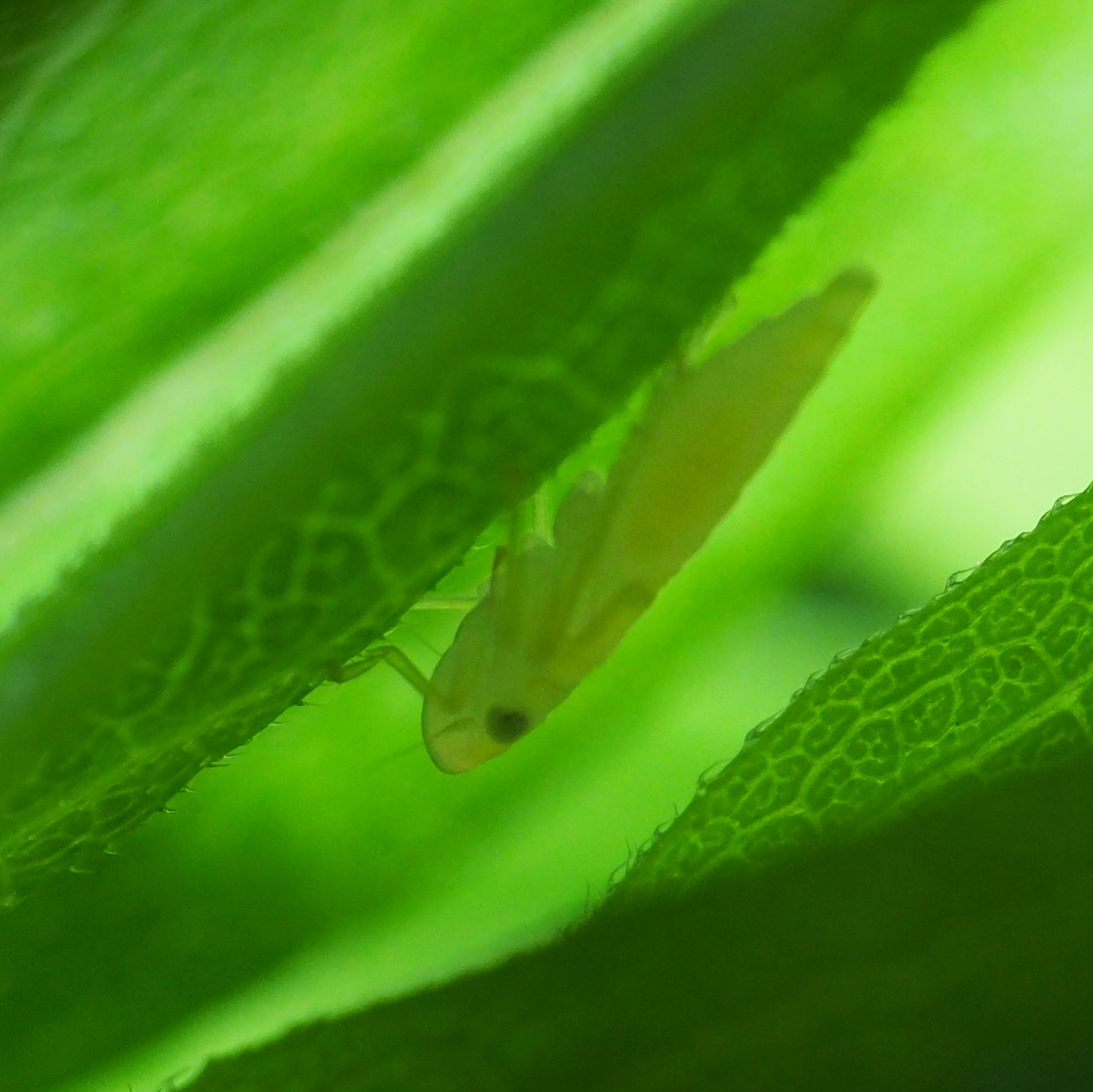

Last week we saw this little nymph, which I think is the nymph of one of the Planthoppers. The next three images are of one bug, and probably represent a Planthopper, maybe the one last weeks's was nymph of. (Sorry to purists for ending that sentence with "of".)
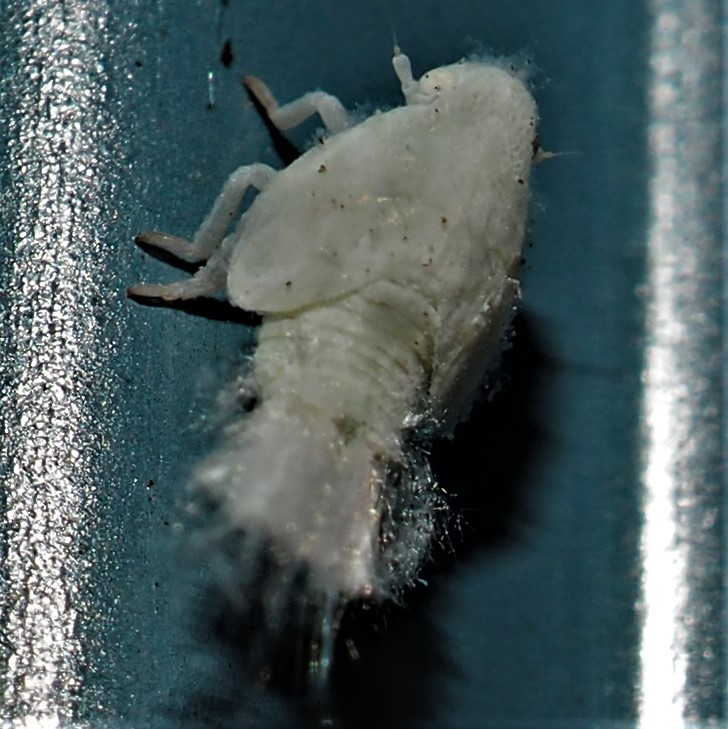
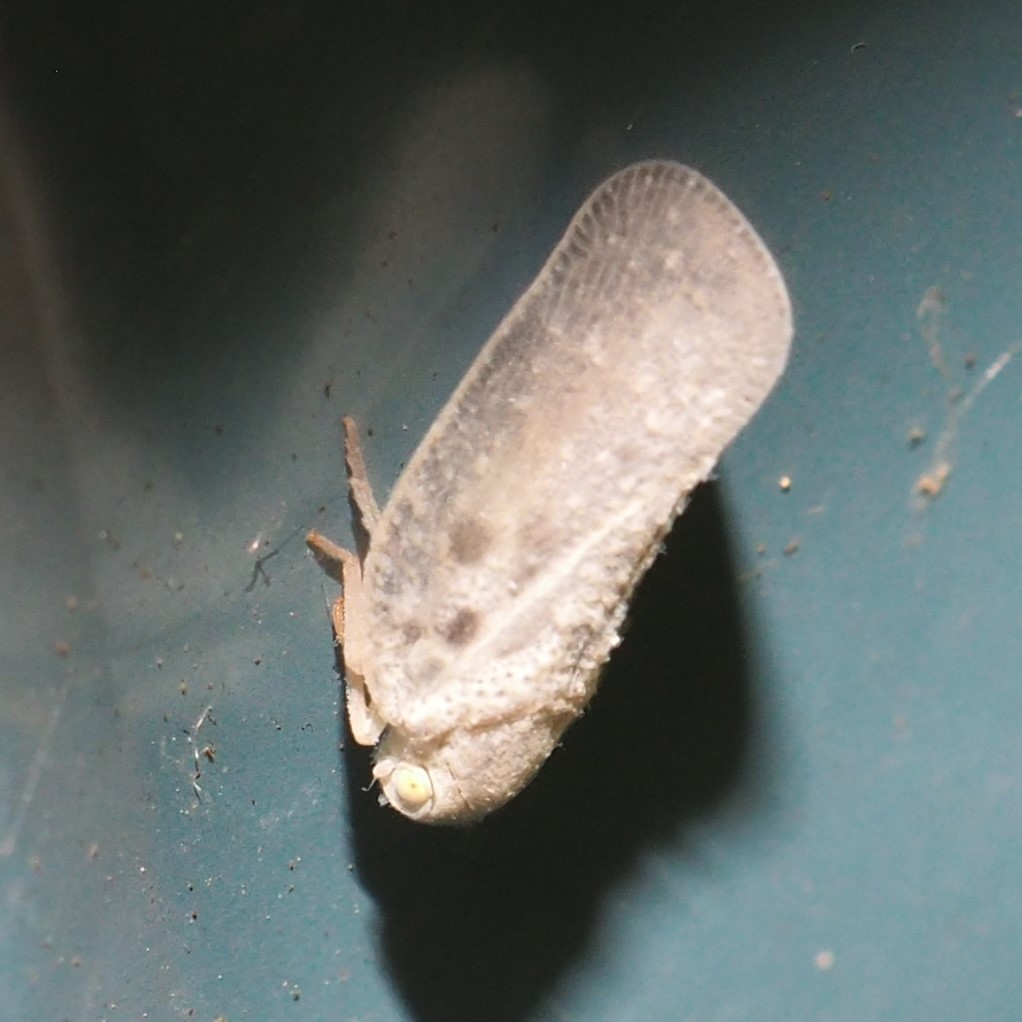
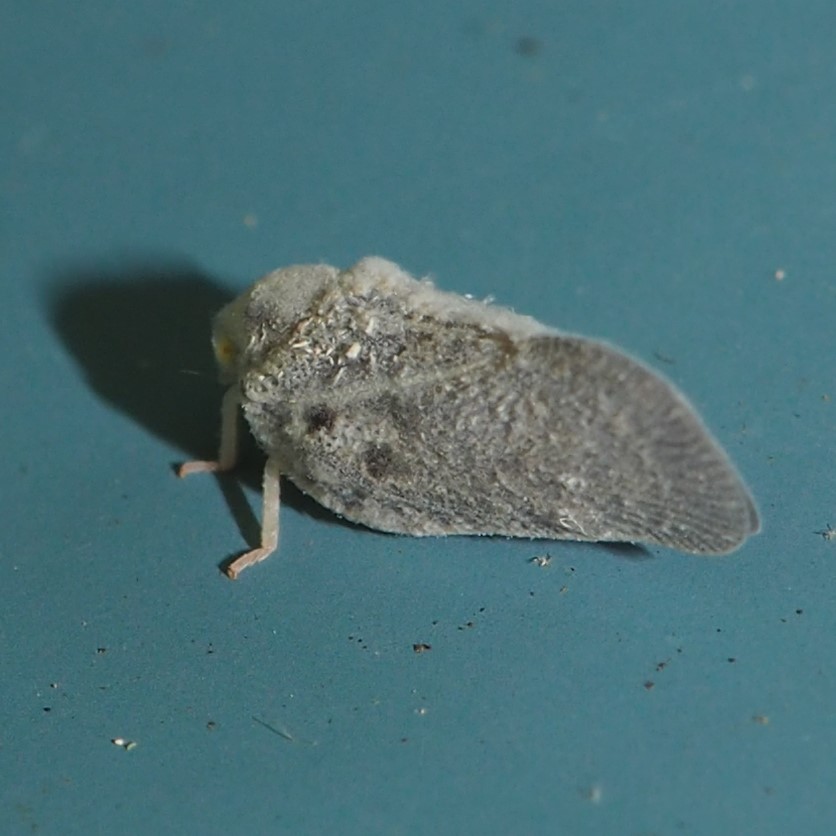
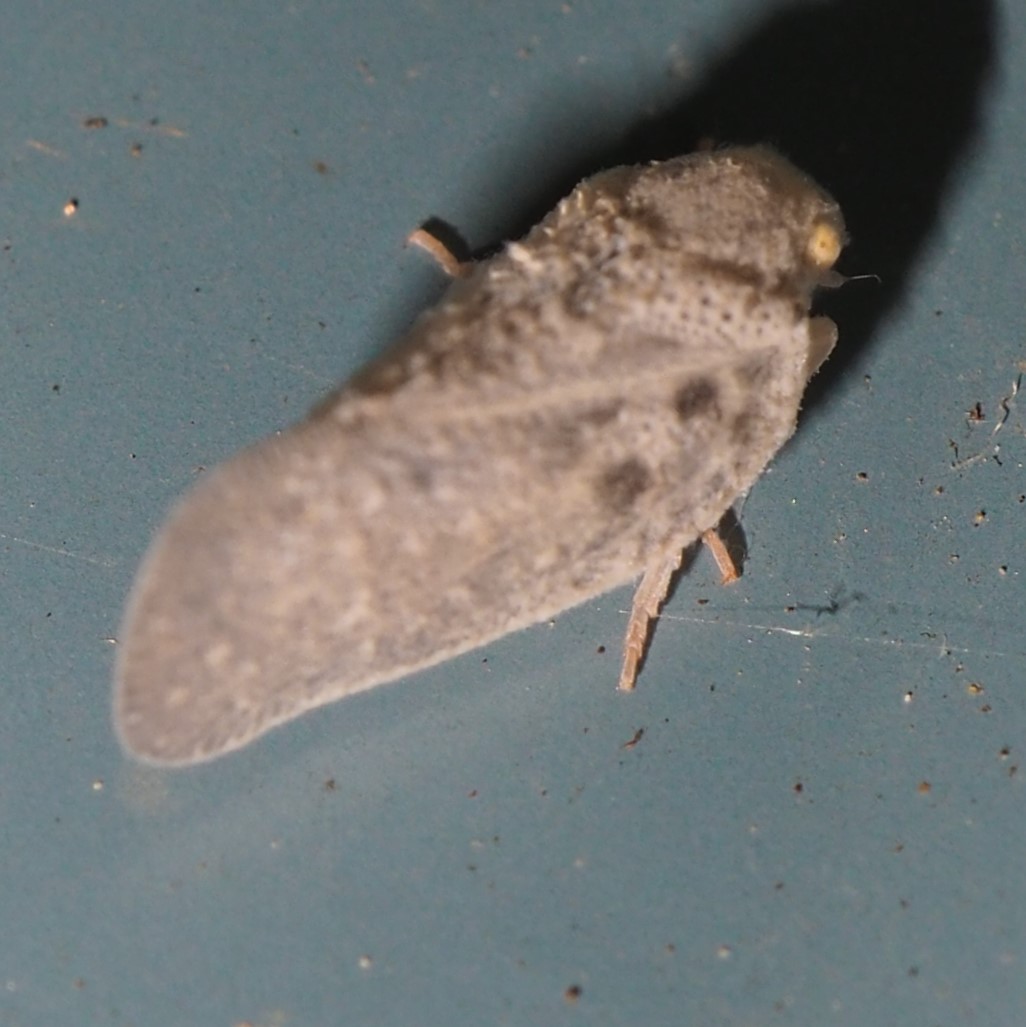
We didn't have many treehoppers this week. This one is one of our Redbud treehoppers, the Two-Mark Treehopper. It's on an aster plant, and probably is en route to a new host (one of the many Redbud saplings all over the yard). Let's move on to the caterpillars (and also the Butterflies and Moths they are larvae of). The second image is of the caterpillar of the Gypsy Moth. If you look carefully you may be able to see the red and blue spots that distinguish this caterpillar. Next is that Fall Webworm again. Last is one of the inchworms that will grow up to be Geometrid Moths.
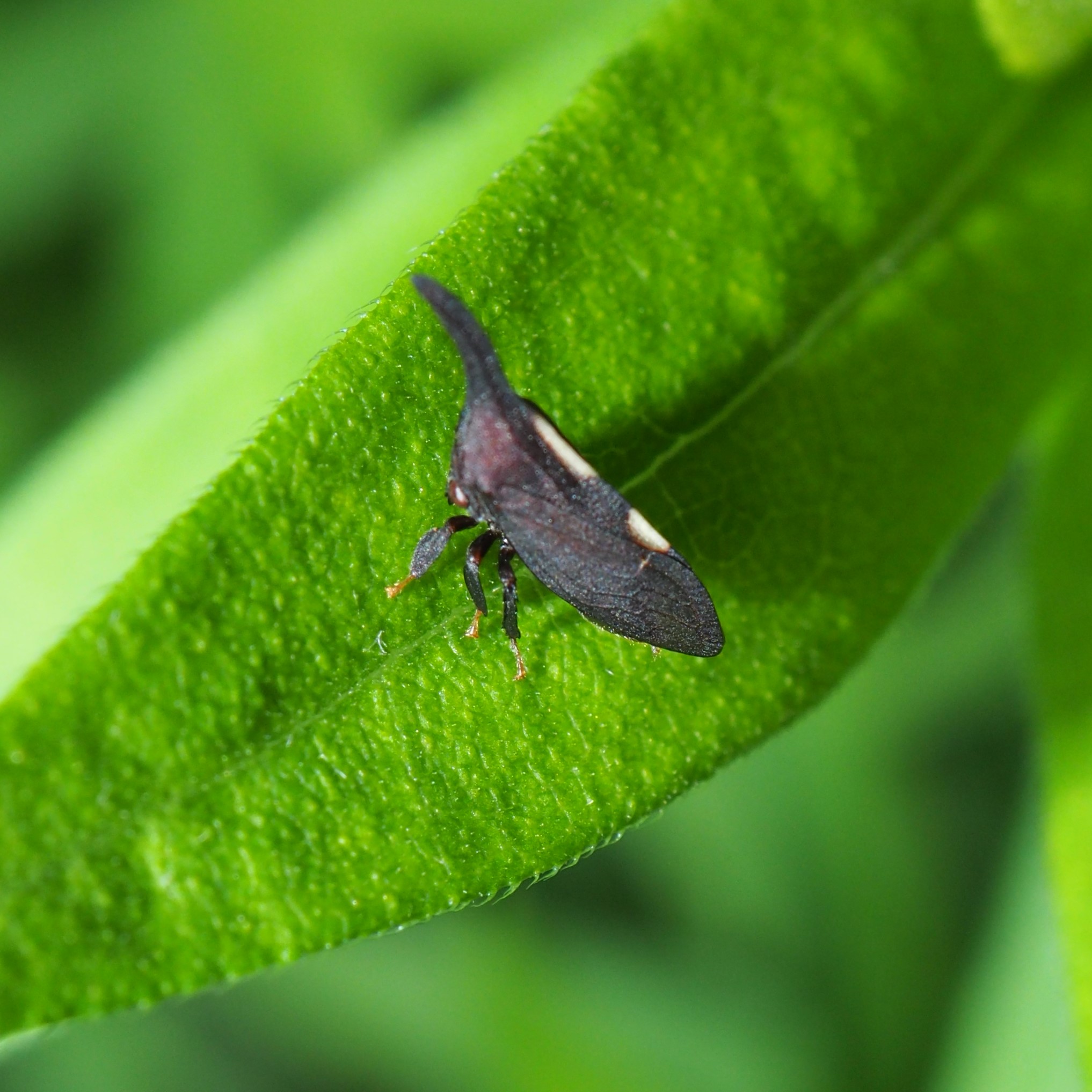
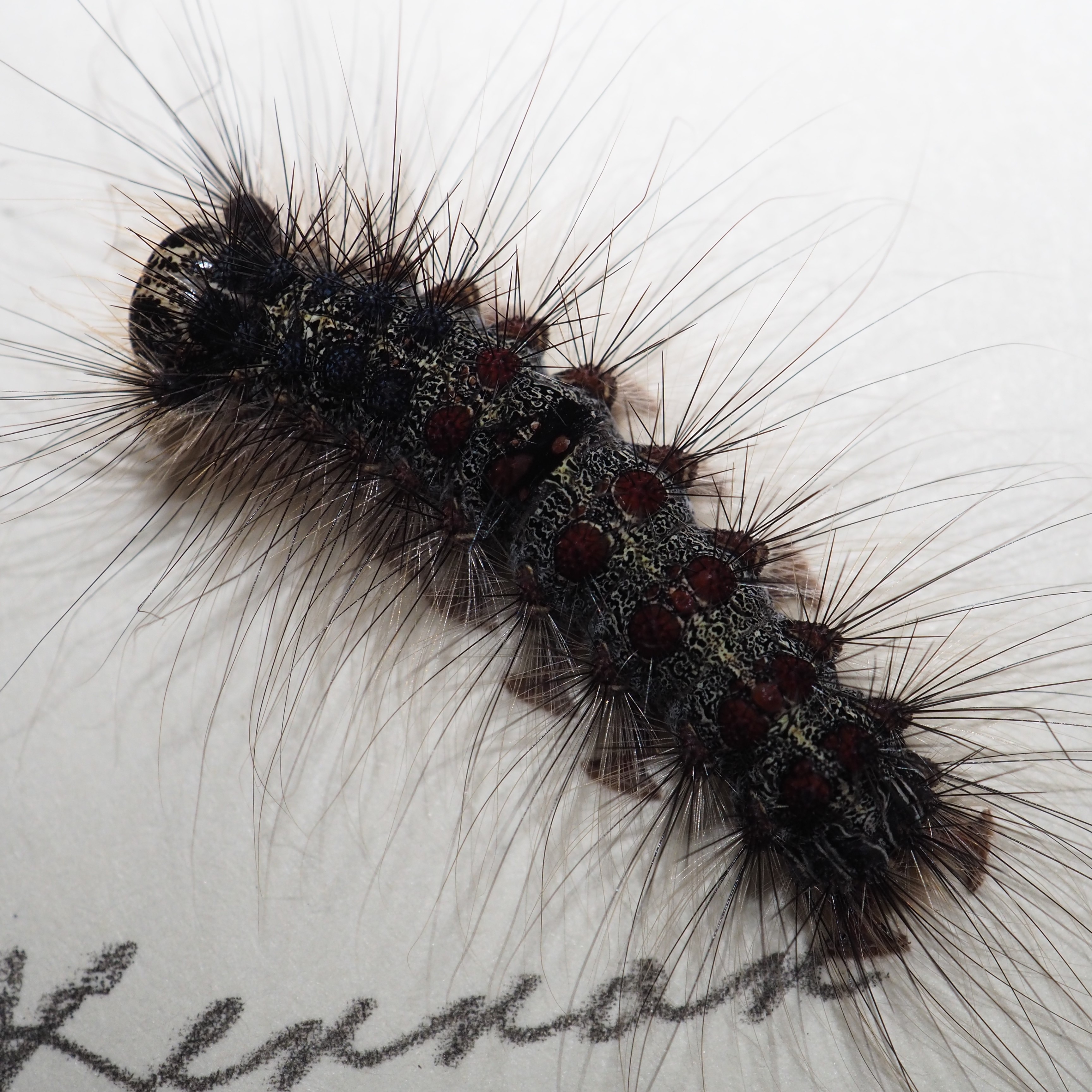
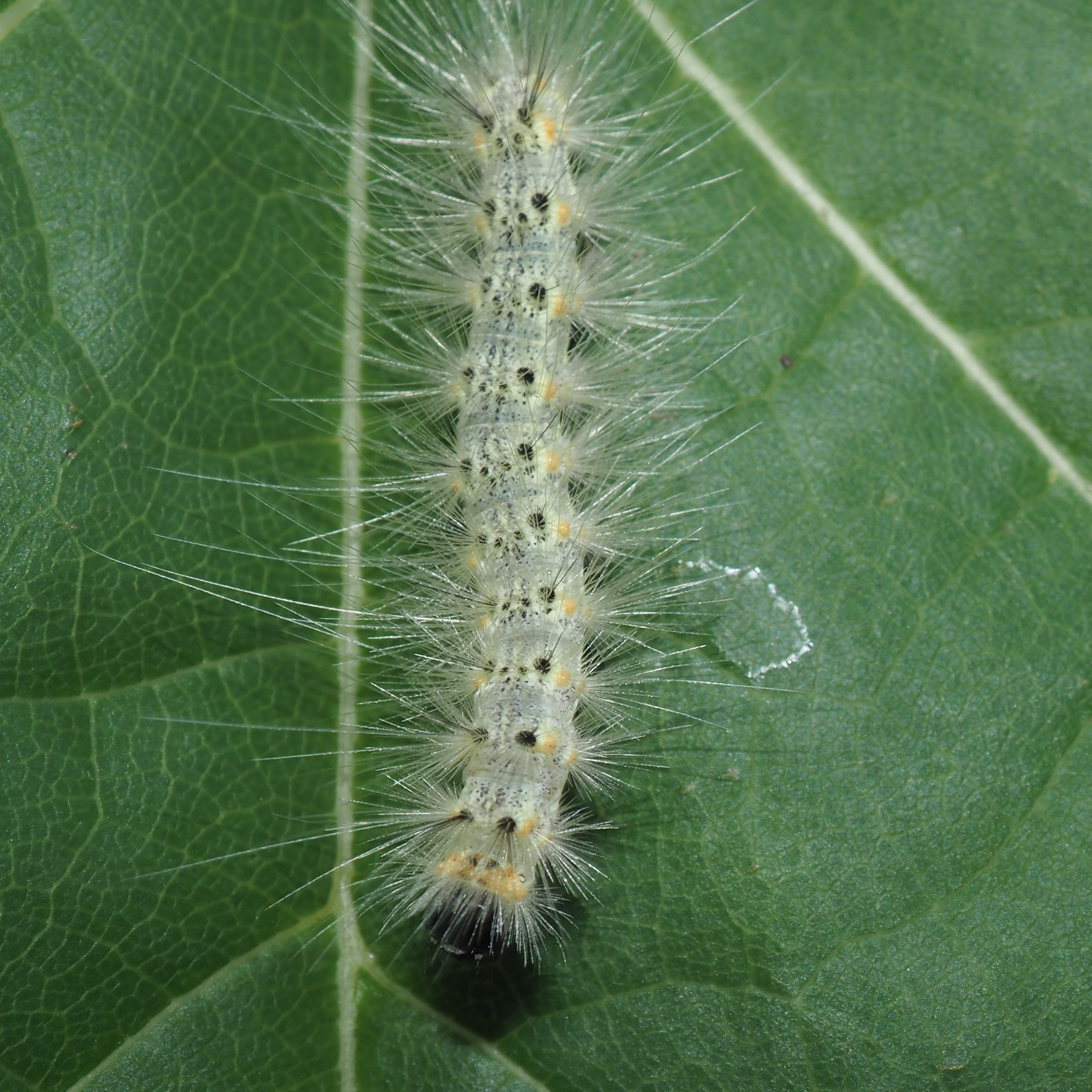
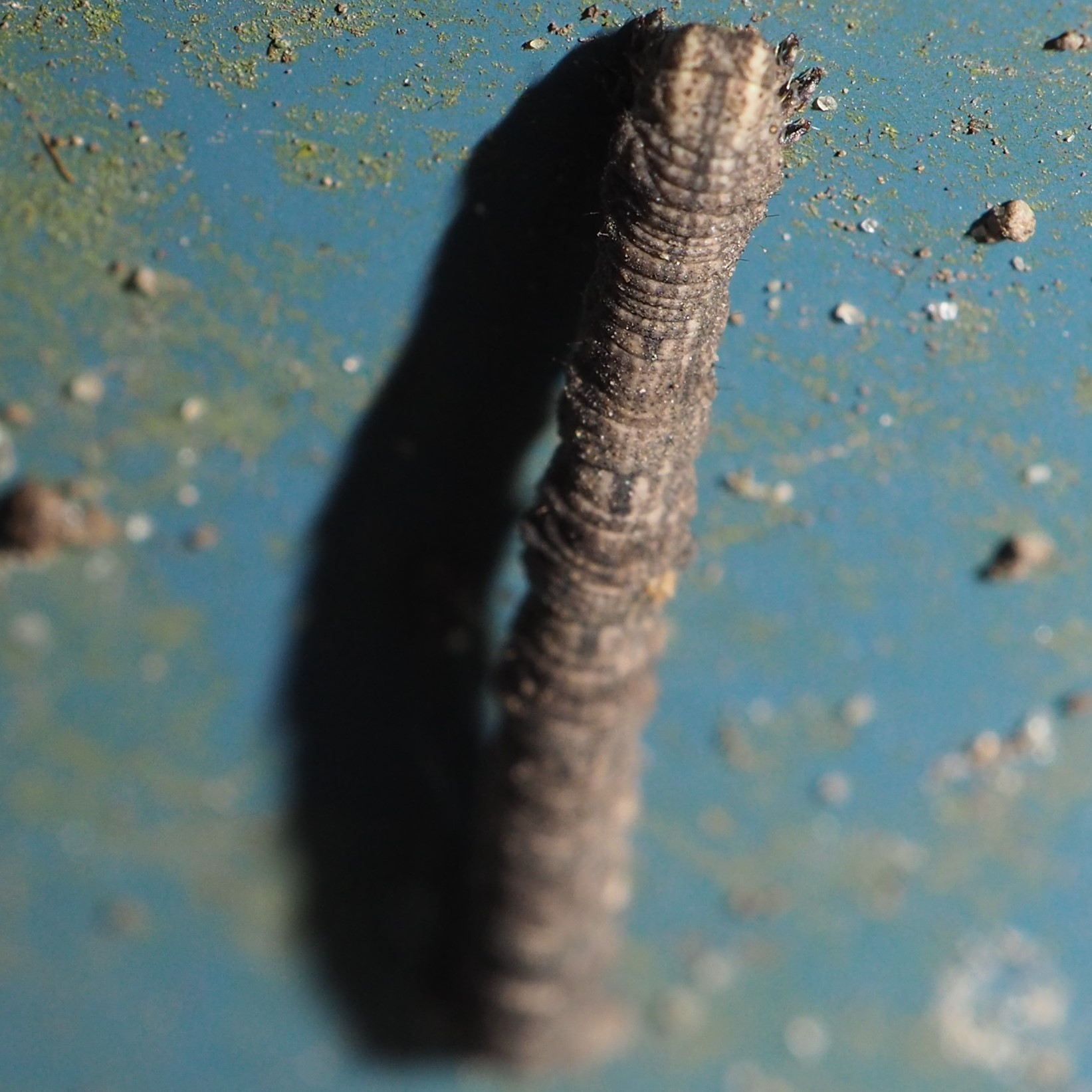
Last year my neighbor Jim called me to come over and see the gorgeous Tussock Moth caterpillar on his front door knob. I'd never seen such a thing before, but found out it was a White-marked Tussock Moth (Orgyia leucostigma). You may wonder, as I did, why is it called "white" marked when it should be "yellow-marked"? Someone politely reminded me that it was named after its appearance as an ADULT.. Anyway, this year, it seems to have crawled (or flown) a block to climb around in my yard! The second creature looks to me like one of the leaf miners, but I'm waiting for an identification. Here are two more moths that just happened to be sitting in the yard minding their own businesses.
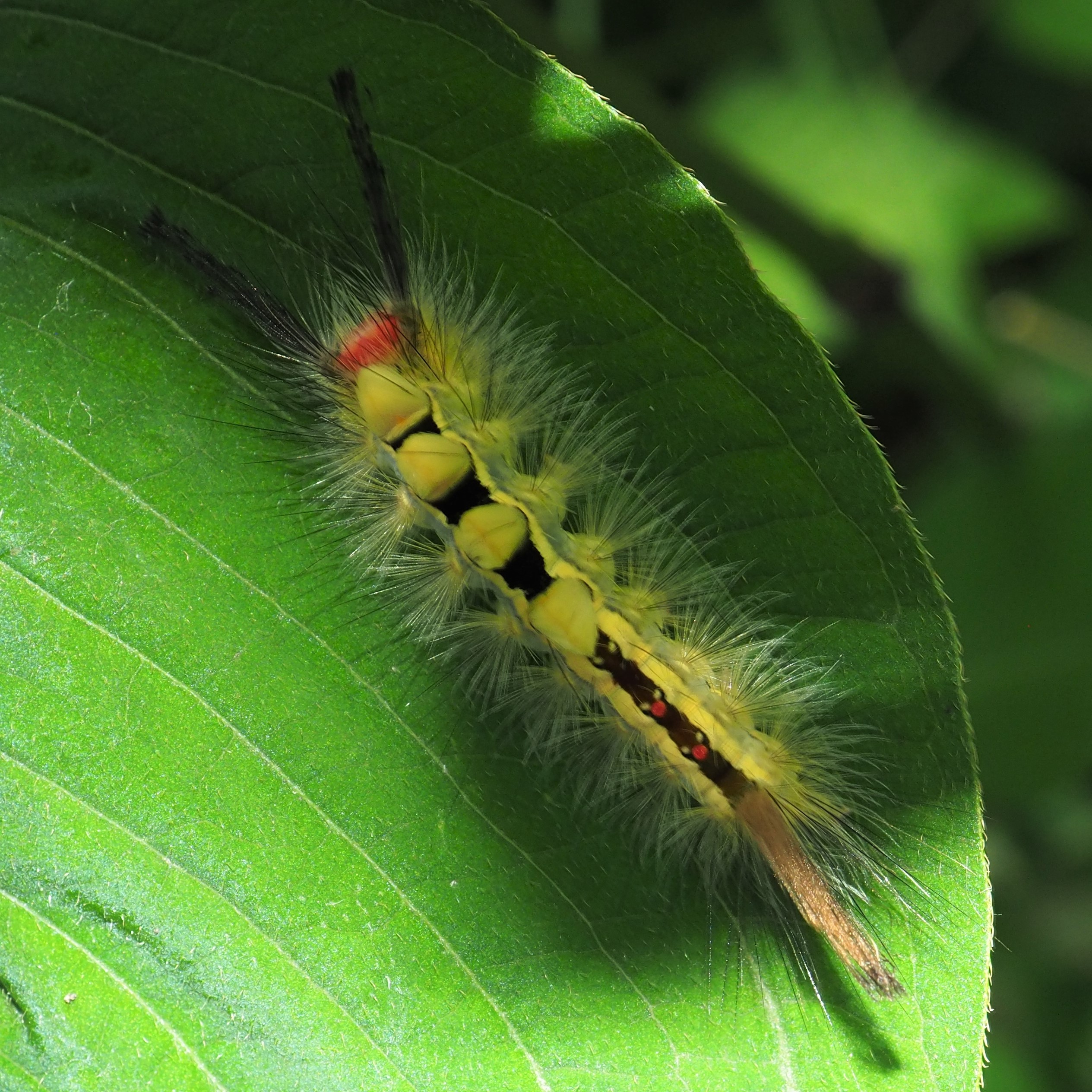
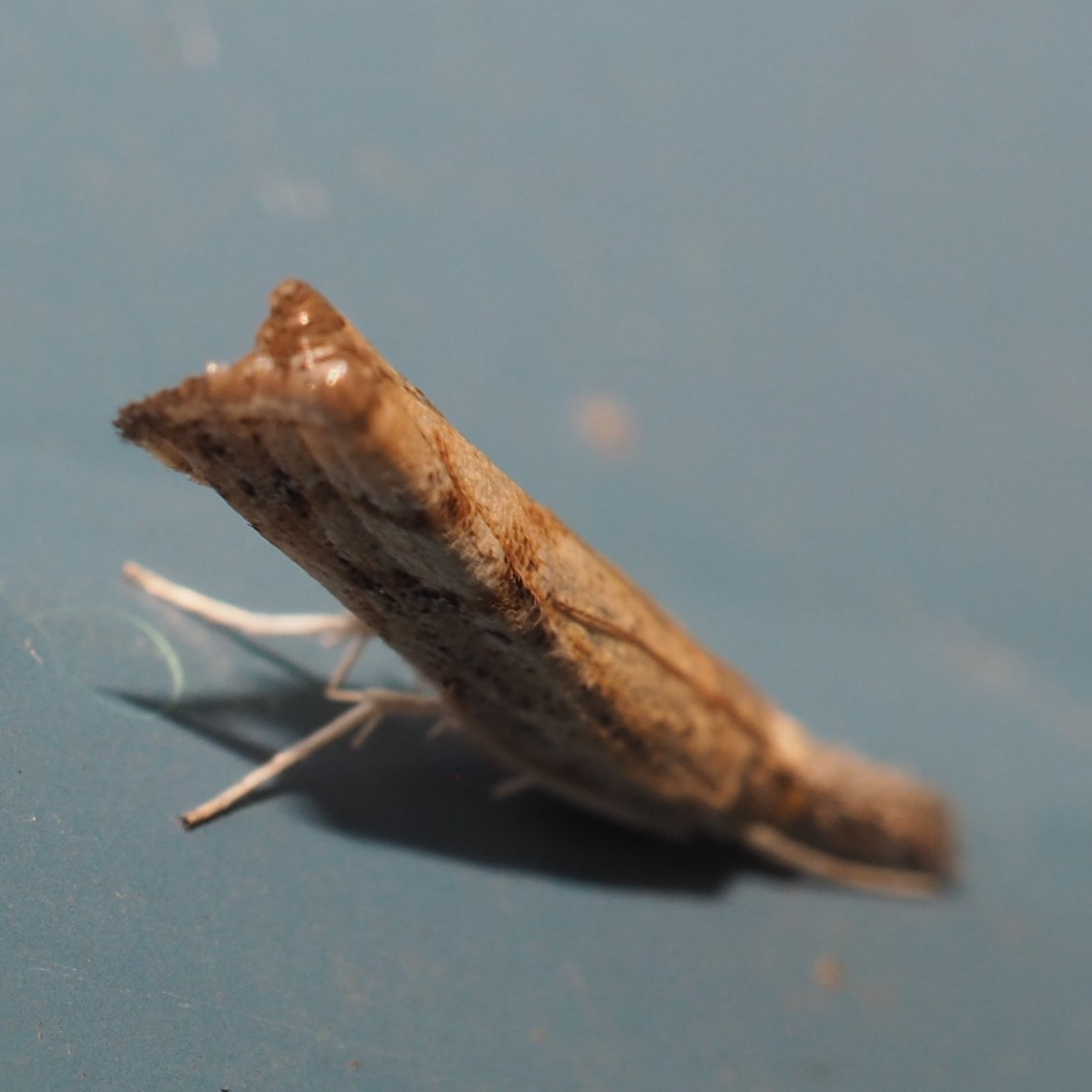
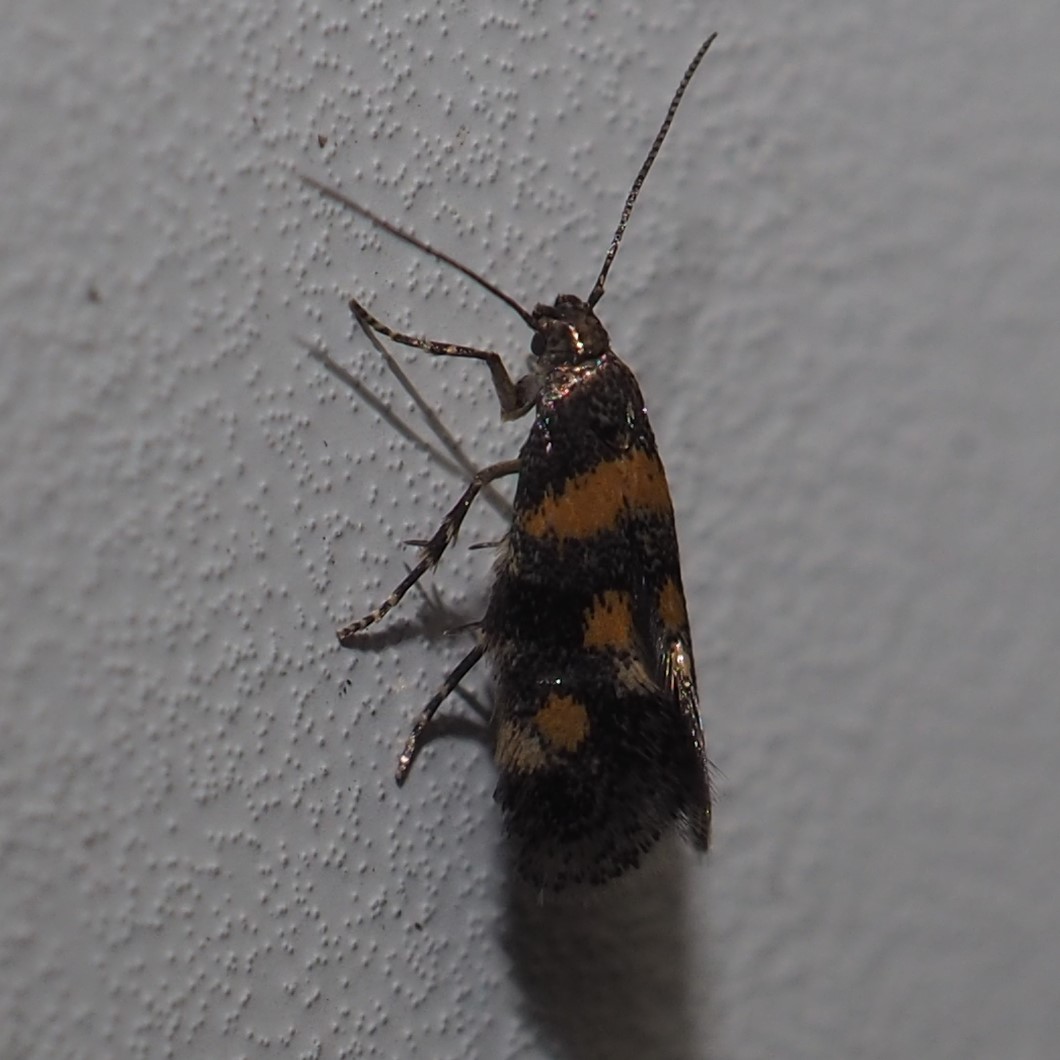
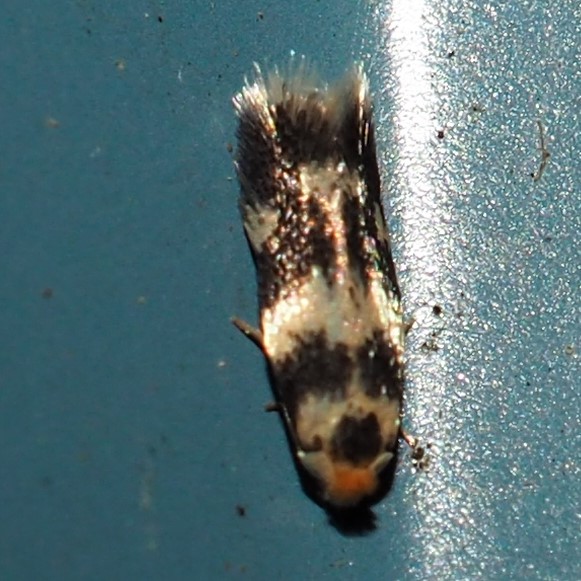
Another adult moth. And another and another. I've never seen so many in one week! Last is a Red Admiral. I always have to look up the underside markings to make sure it isn't another of its relatives, the Painted Ladies.
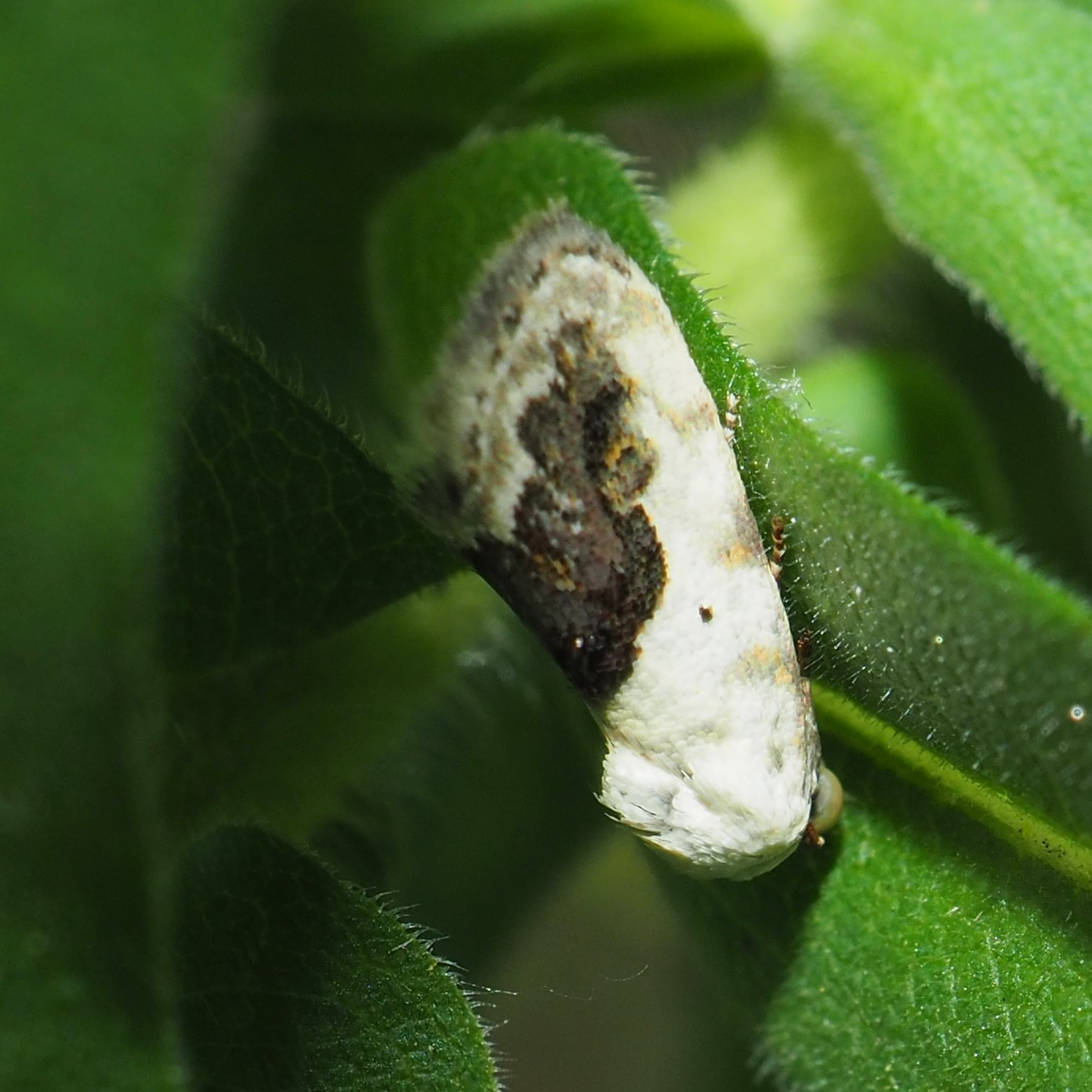
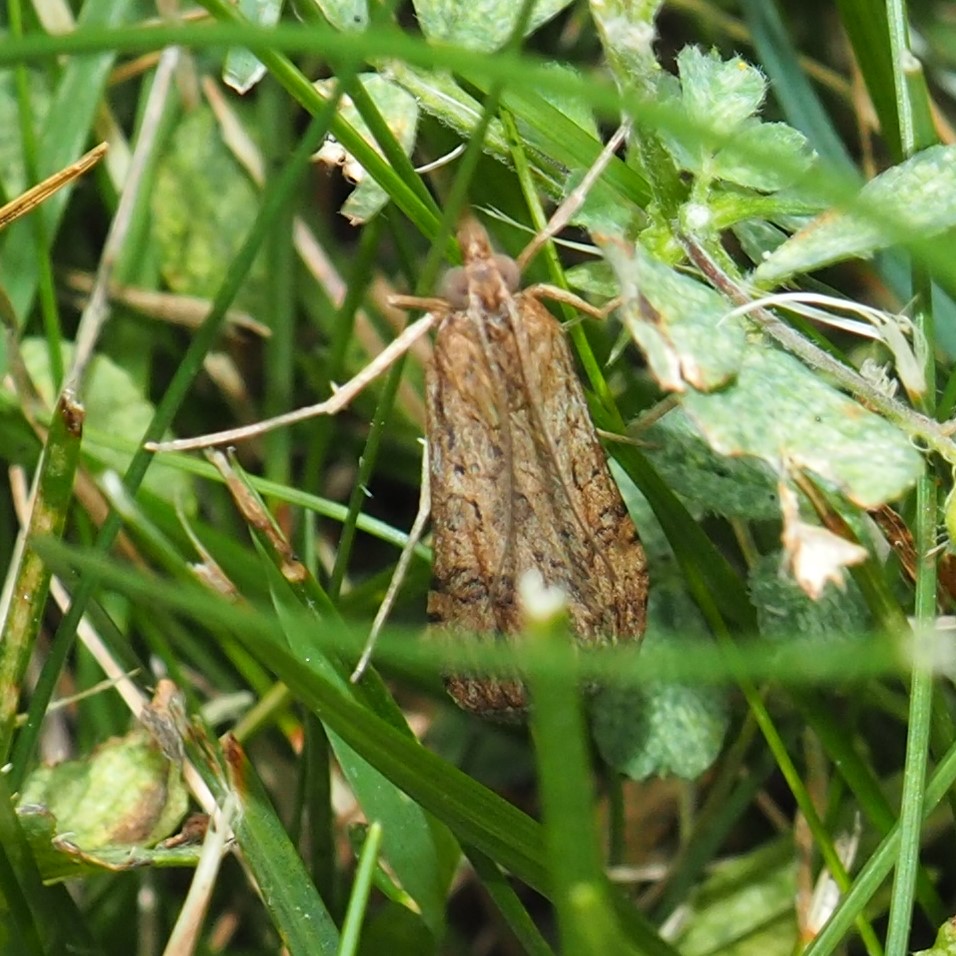
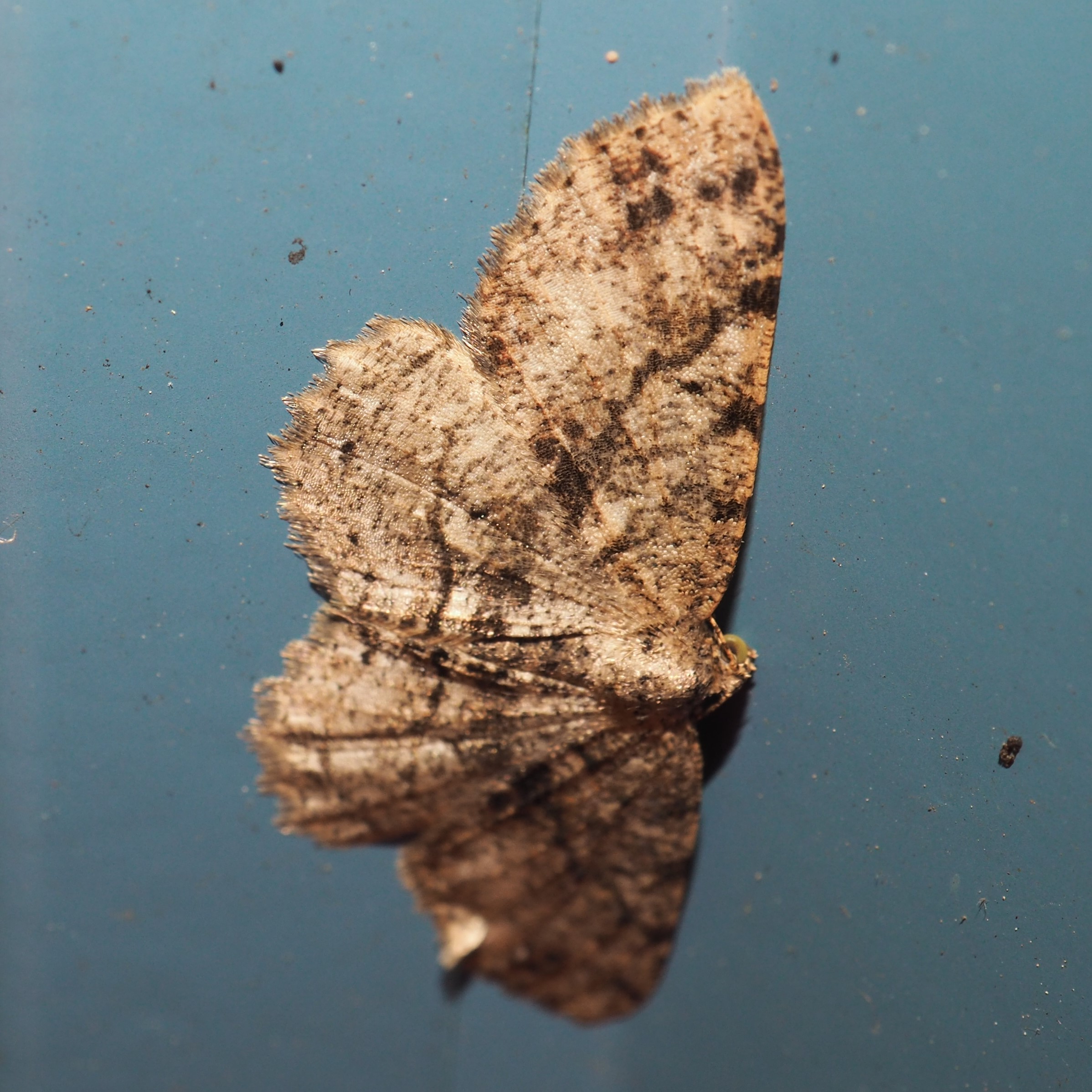
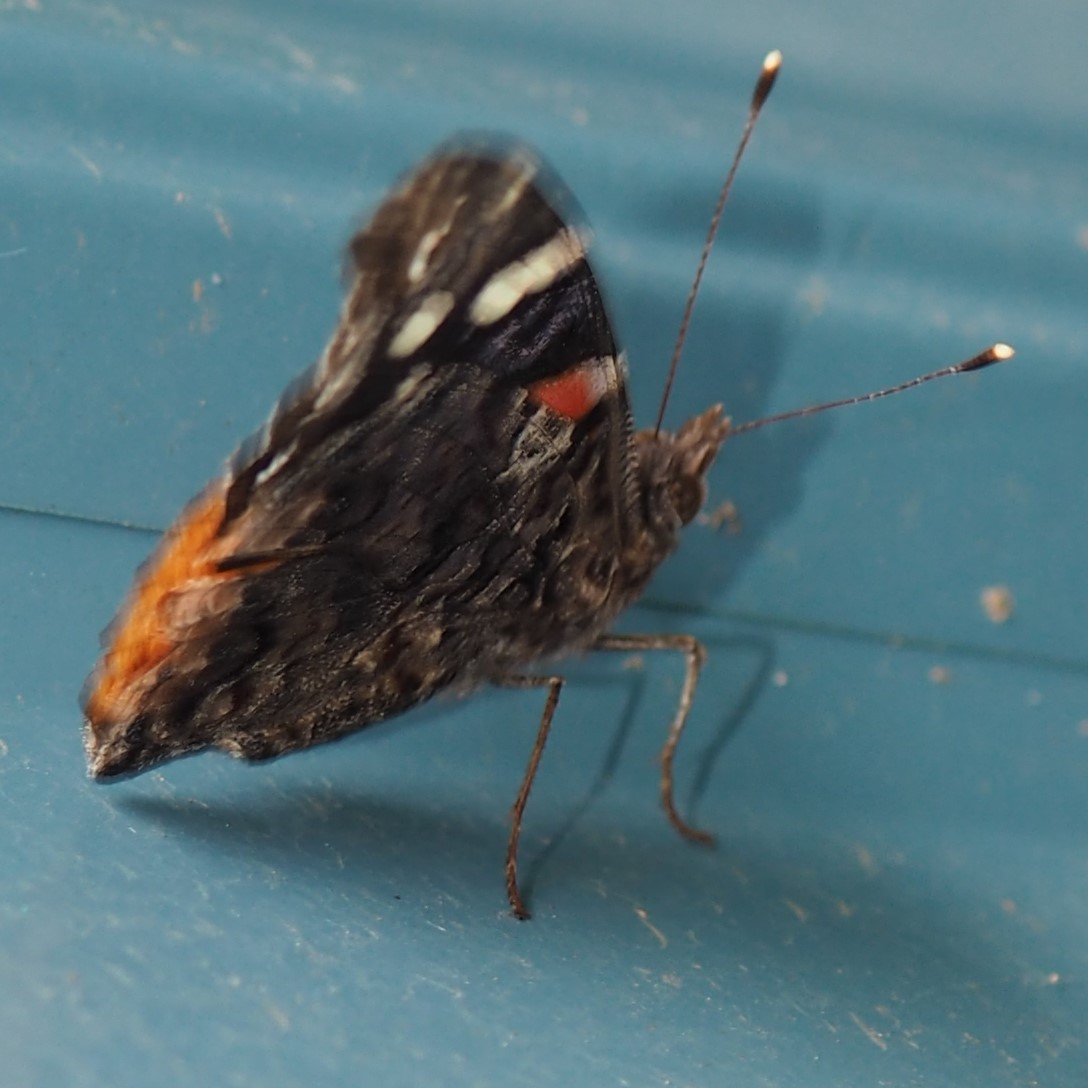
Moving on to Crickets, Grasshoppers and Katydids. The first one is a True Cricket of the subfamily Hapithinae. I had nailed it as a grasshopper, but there we are. Second is a Two-spotted Tree Cricket. Since its head is down in the leaves, it's hard to see the head shaped like a horse's. Third is a Grasshopper of genus Melanoplus. These tiny hoppers climb up and down the shop siding. The fourth is another kind of Grasshopper. I found it in my next-door neighbors' milkweed patch.
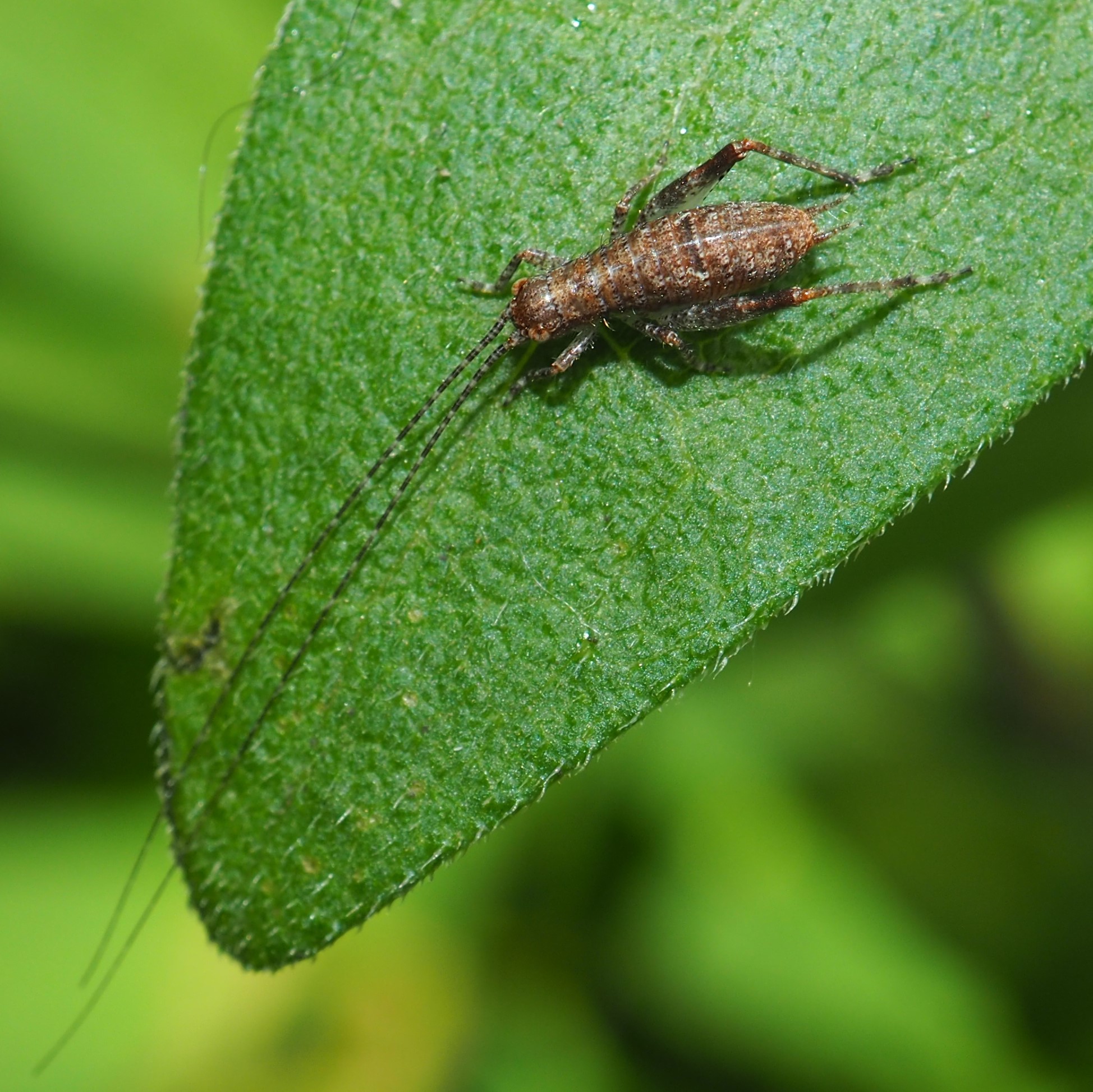
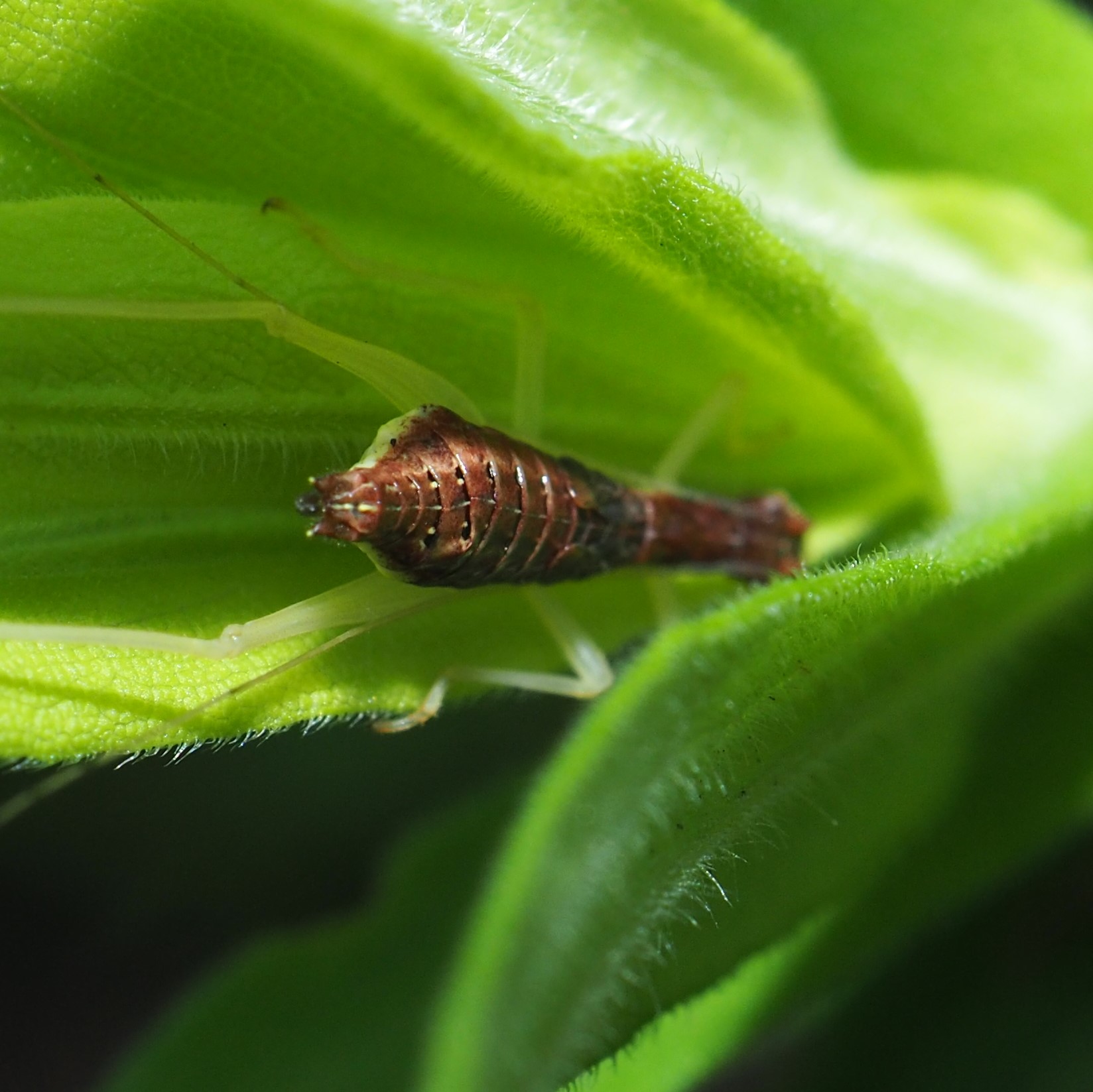
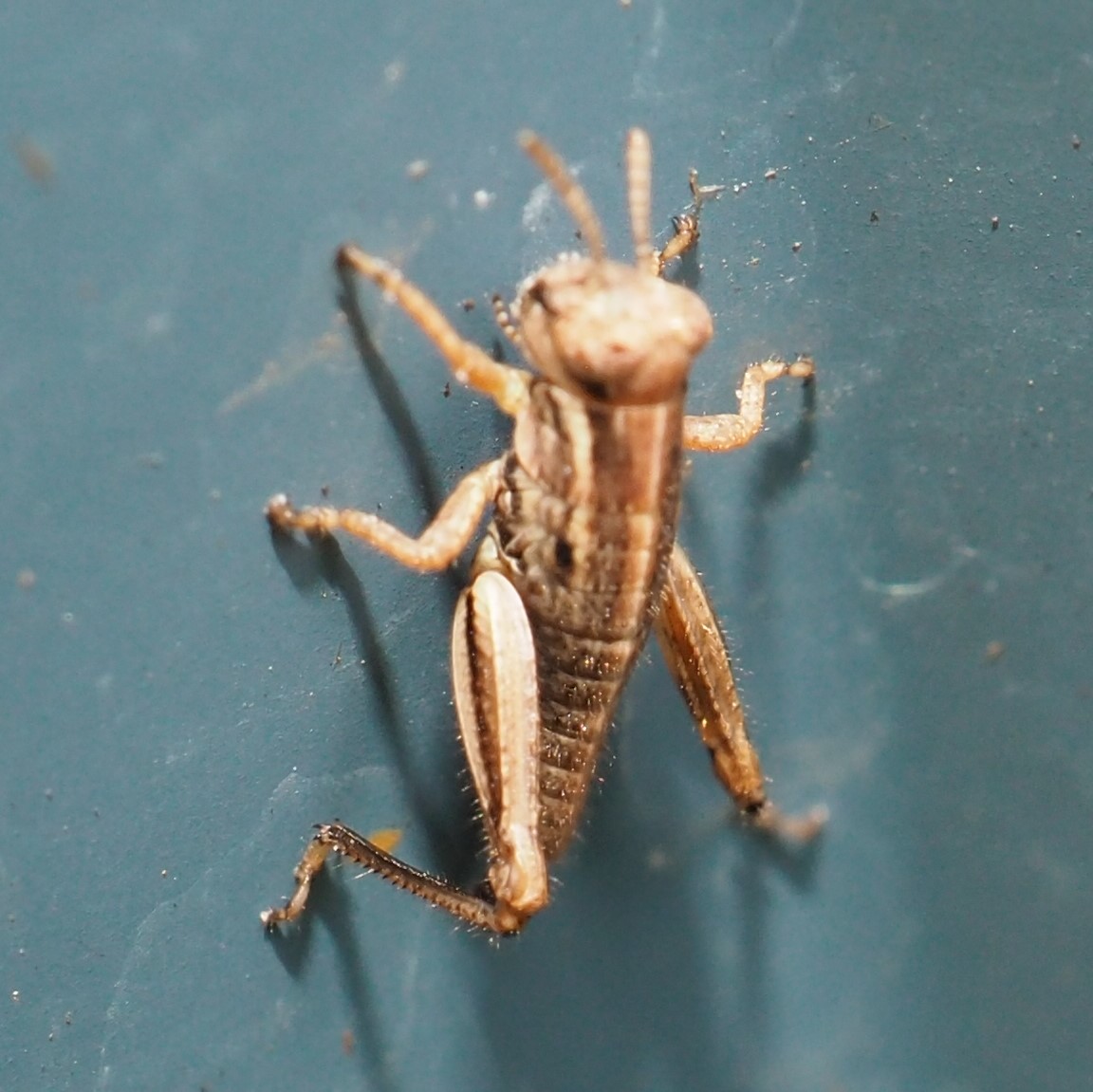
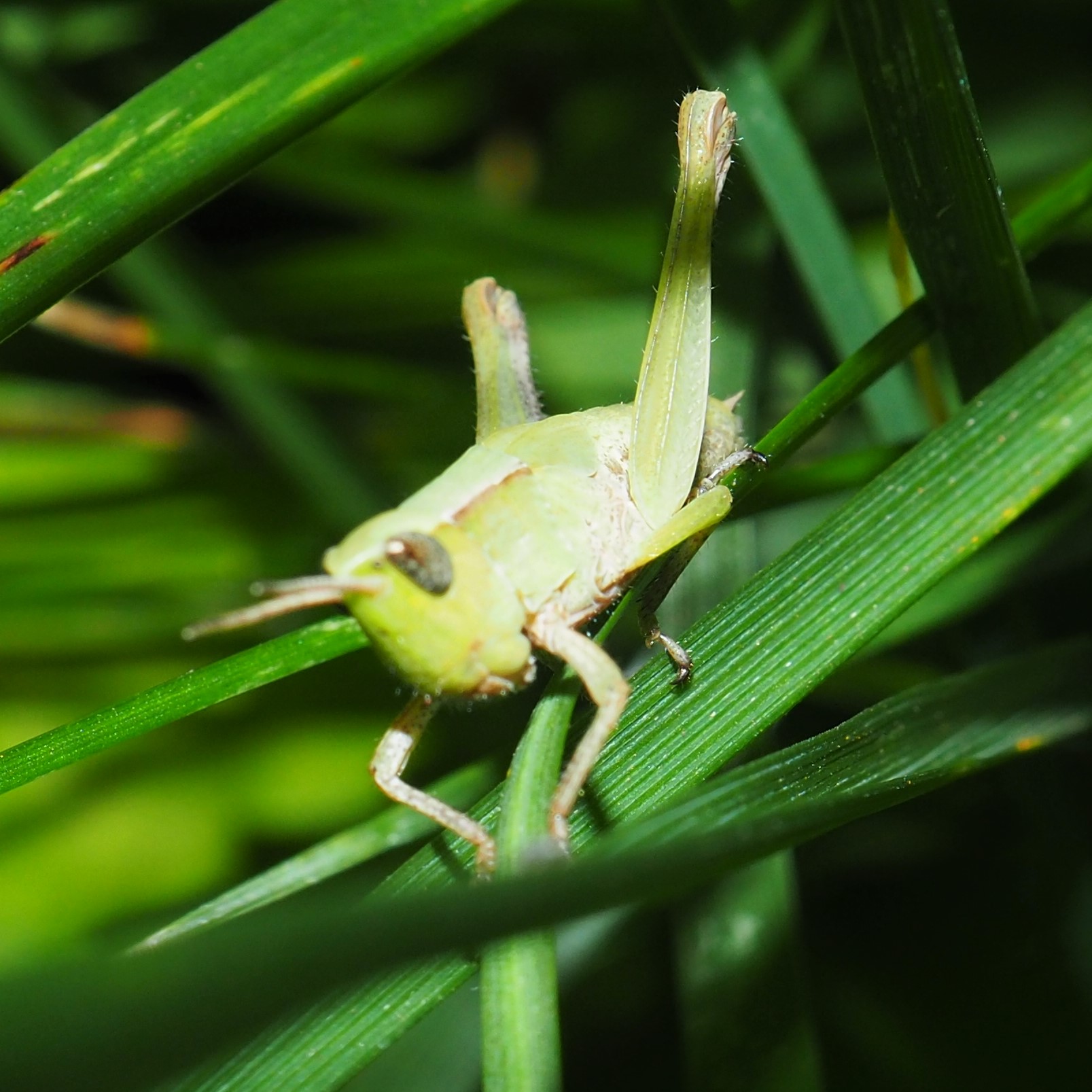
Here are some Katydids. First is the growing nymph (of the Scudder Bush Katydid) that we've seen before when very tiny and later. Second is a later form - you can see that this one is big enough to have a tiny but growing ovipositor. Third is a Common Katydid, taken at dusk.
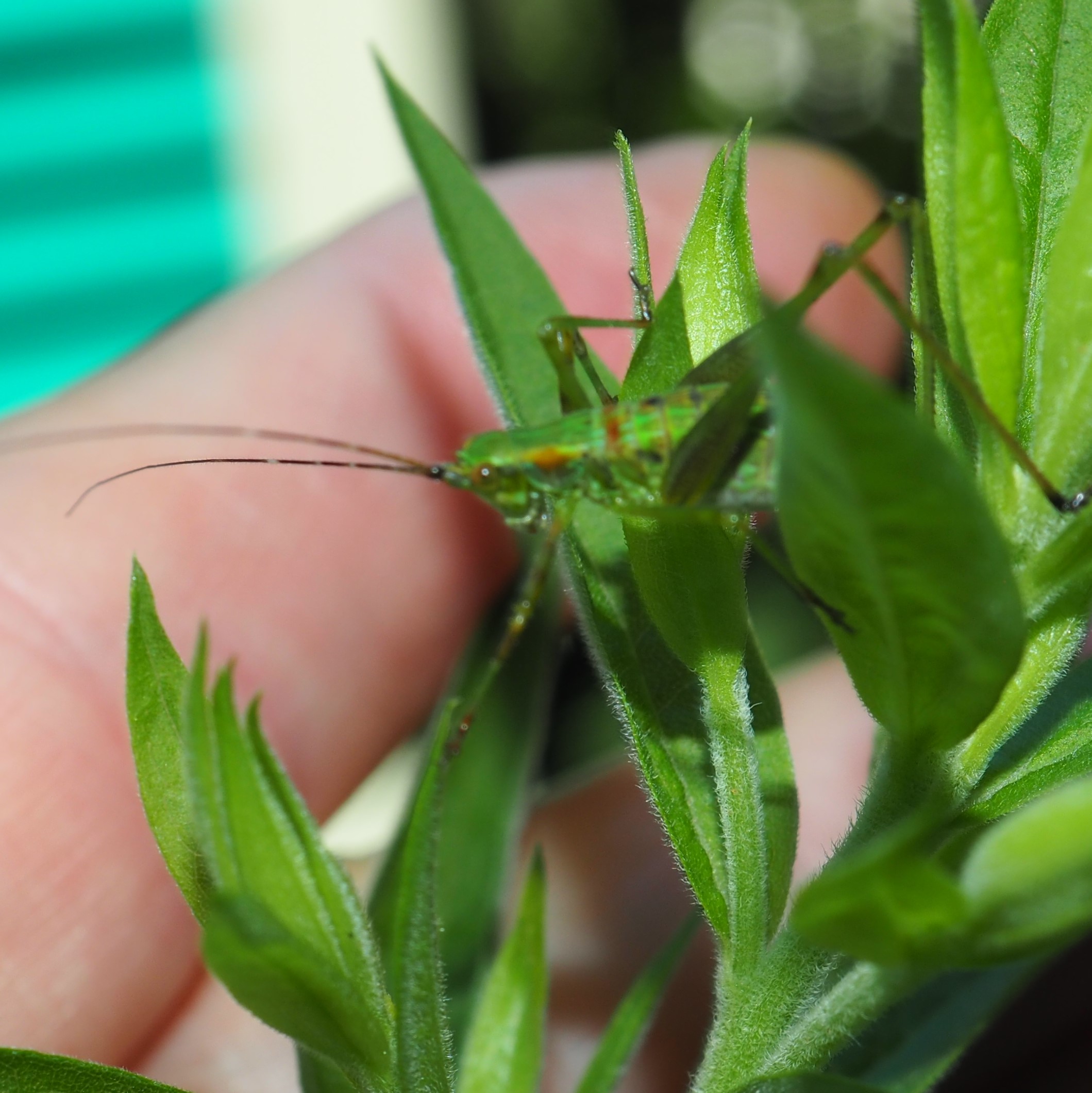
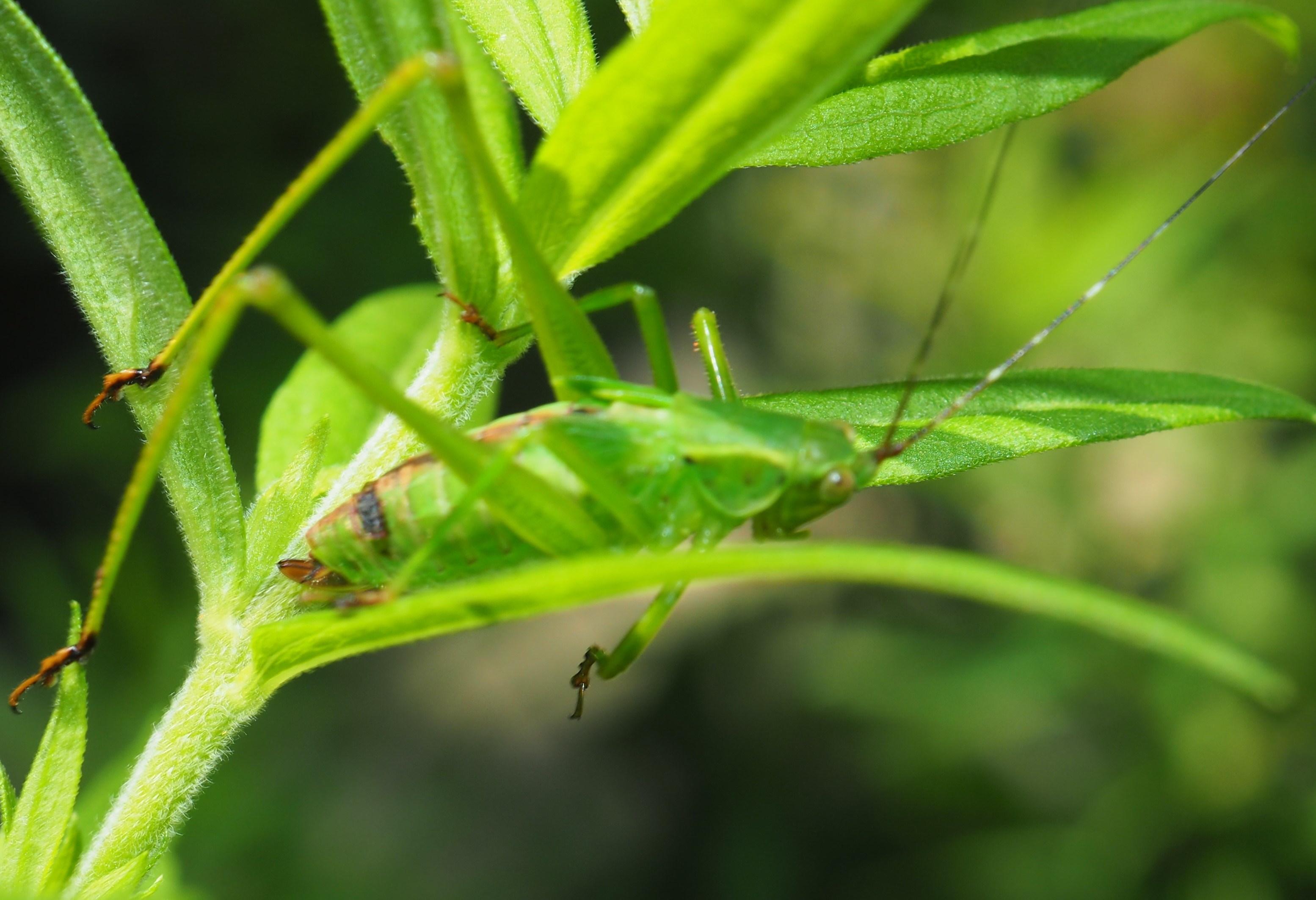
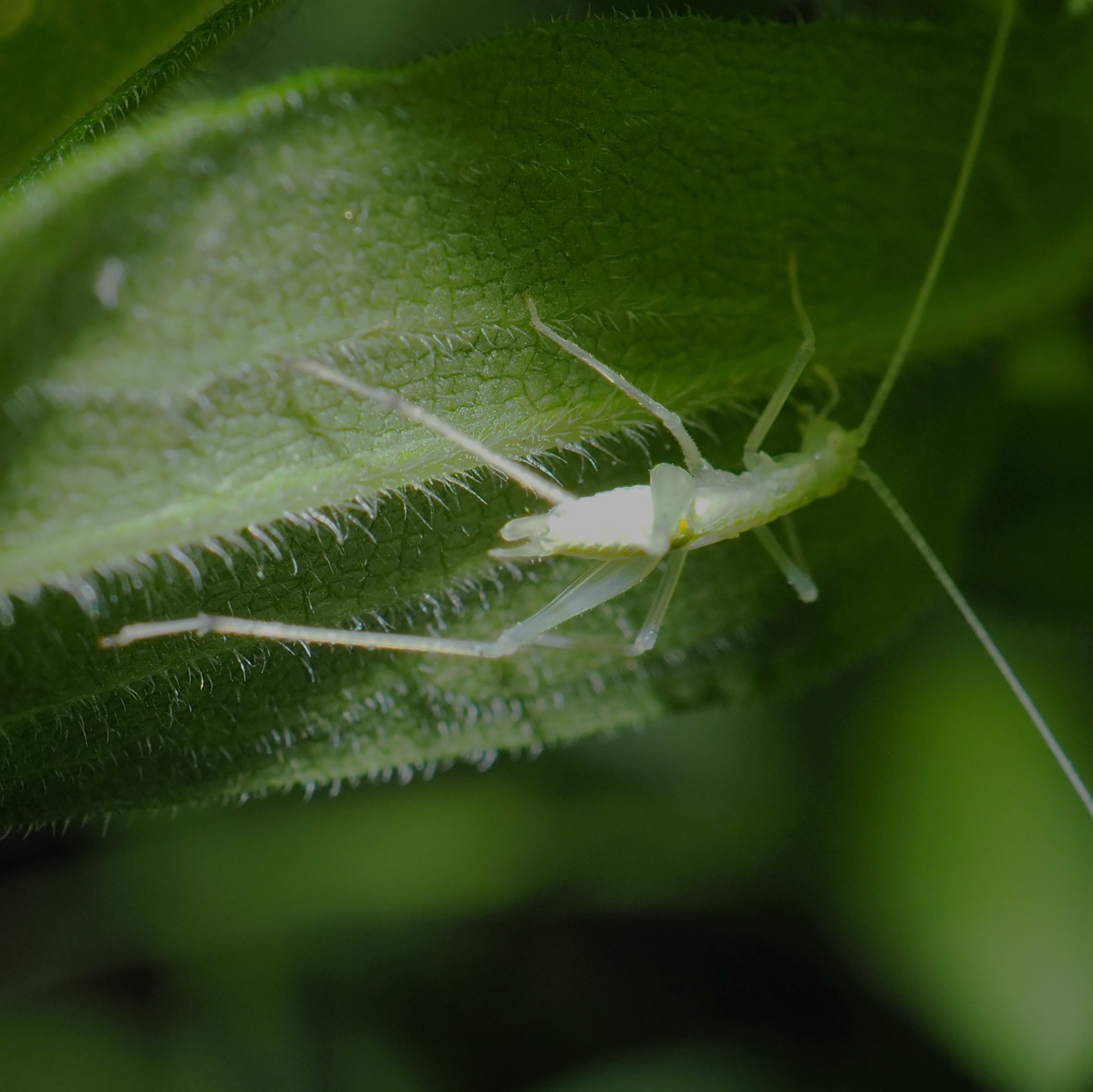
This has been such a good week or two for Day Lilies that I thought you wouldn't mind if I inserted a few of them between Crickets and Dragonflies. First is the huge red-flowered one that the Omahans left me when they moved on about 15-20 years ago. Second is a hybrid Pardon Me, which is a survivor in the midst of several sapling Redbuds and Walnuts. Last is another hybrid, a lighter pink that sometimes registers to pale pink.
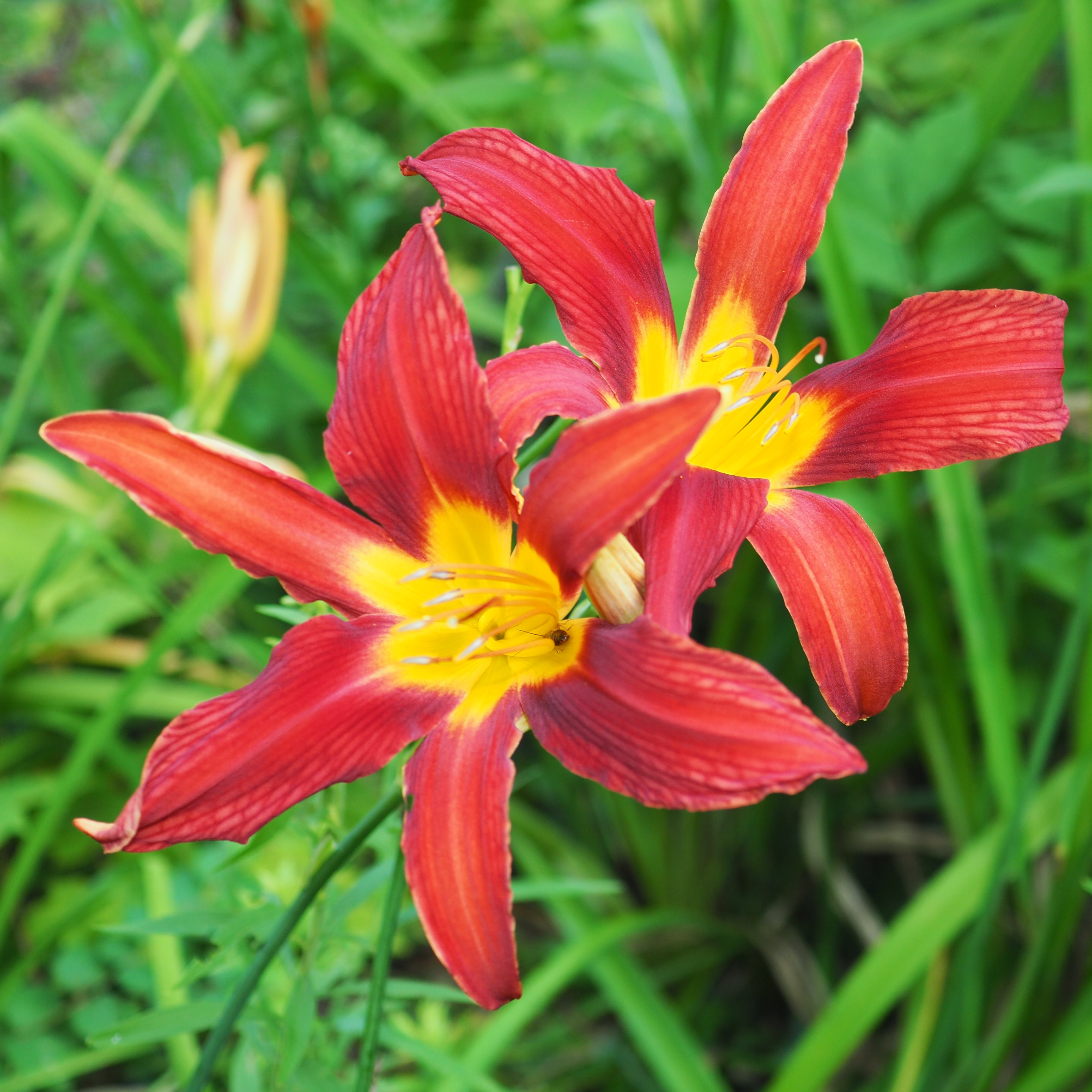

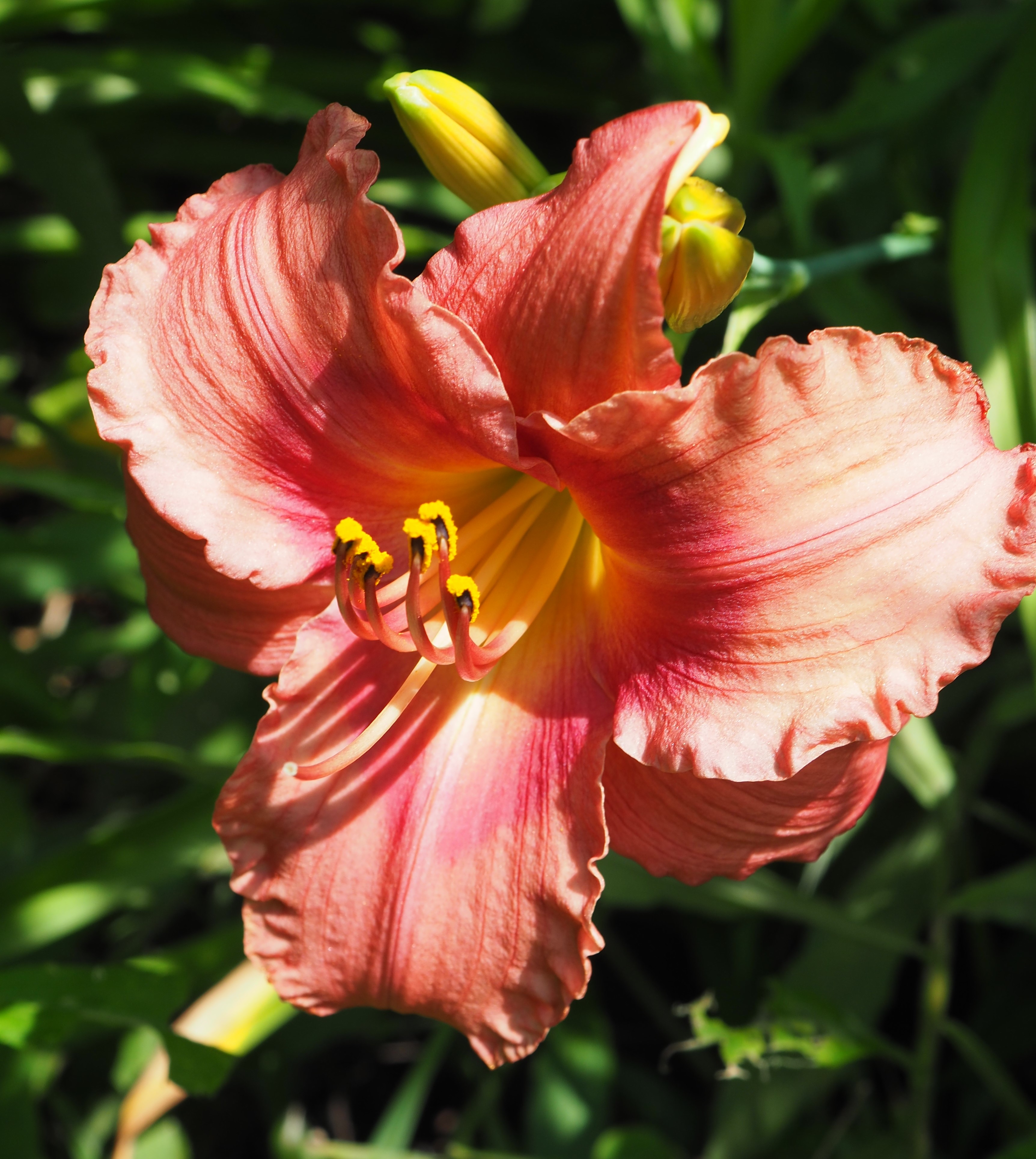
This dragonfly is in the genus of Meadowhawks. It was the most common dragonfly (or read: only) that I caught this week. third is an earthworm that got in the way when I was shooting something on the ground.
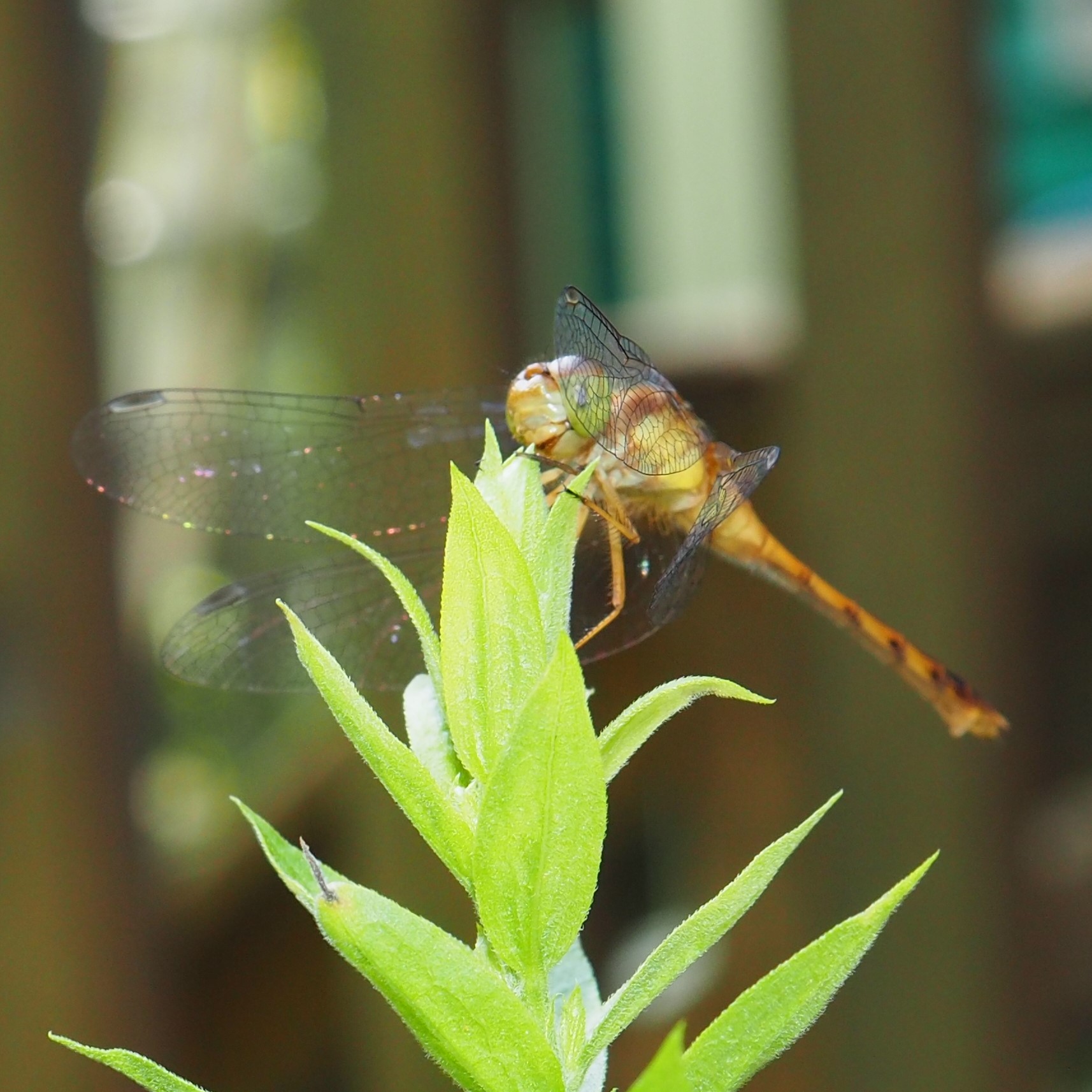
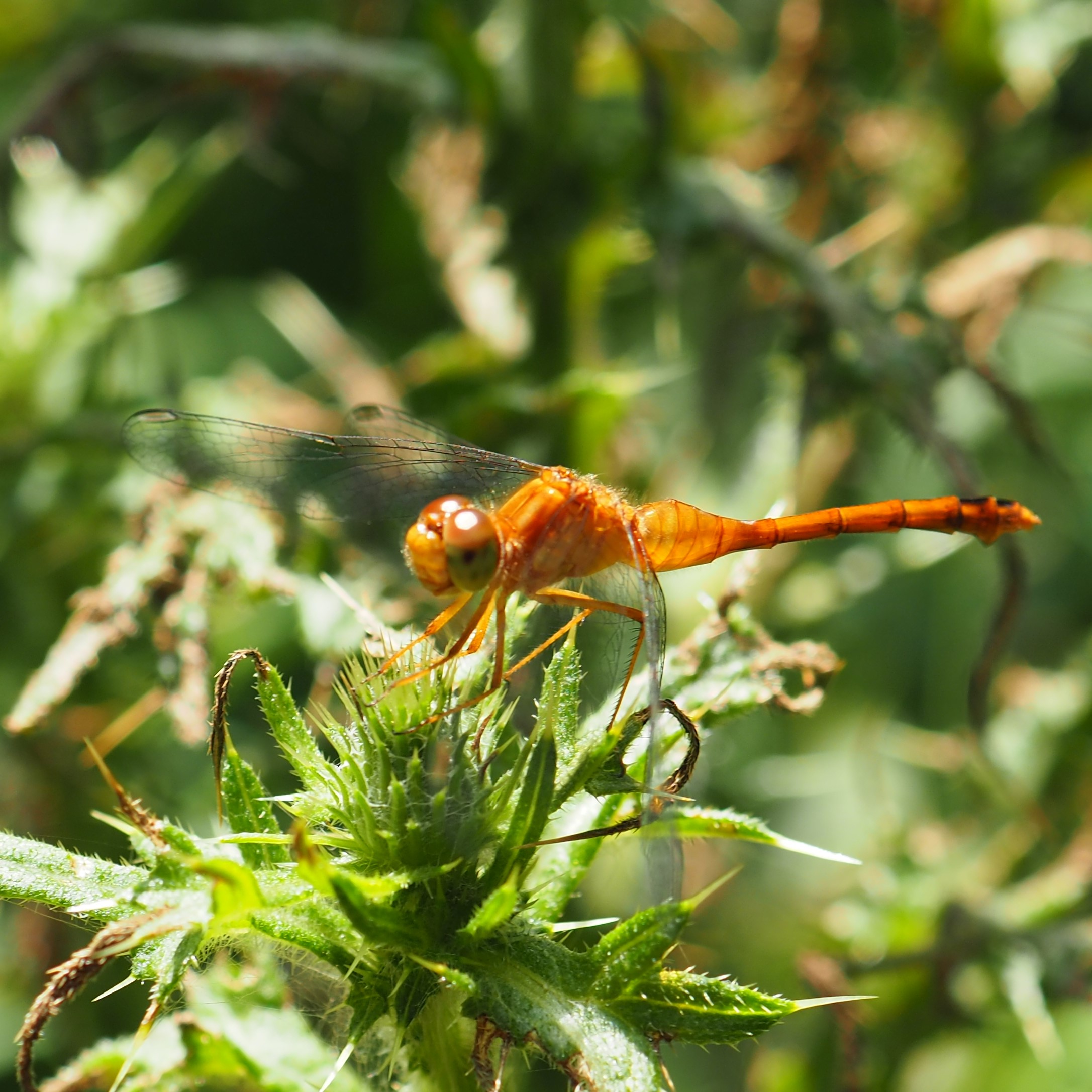
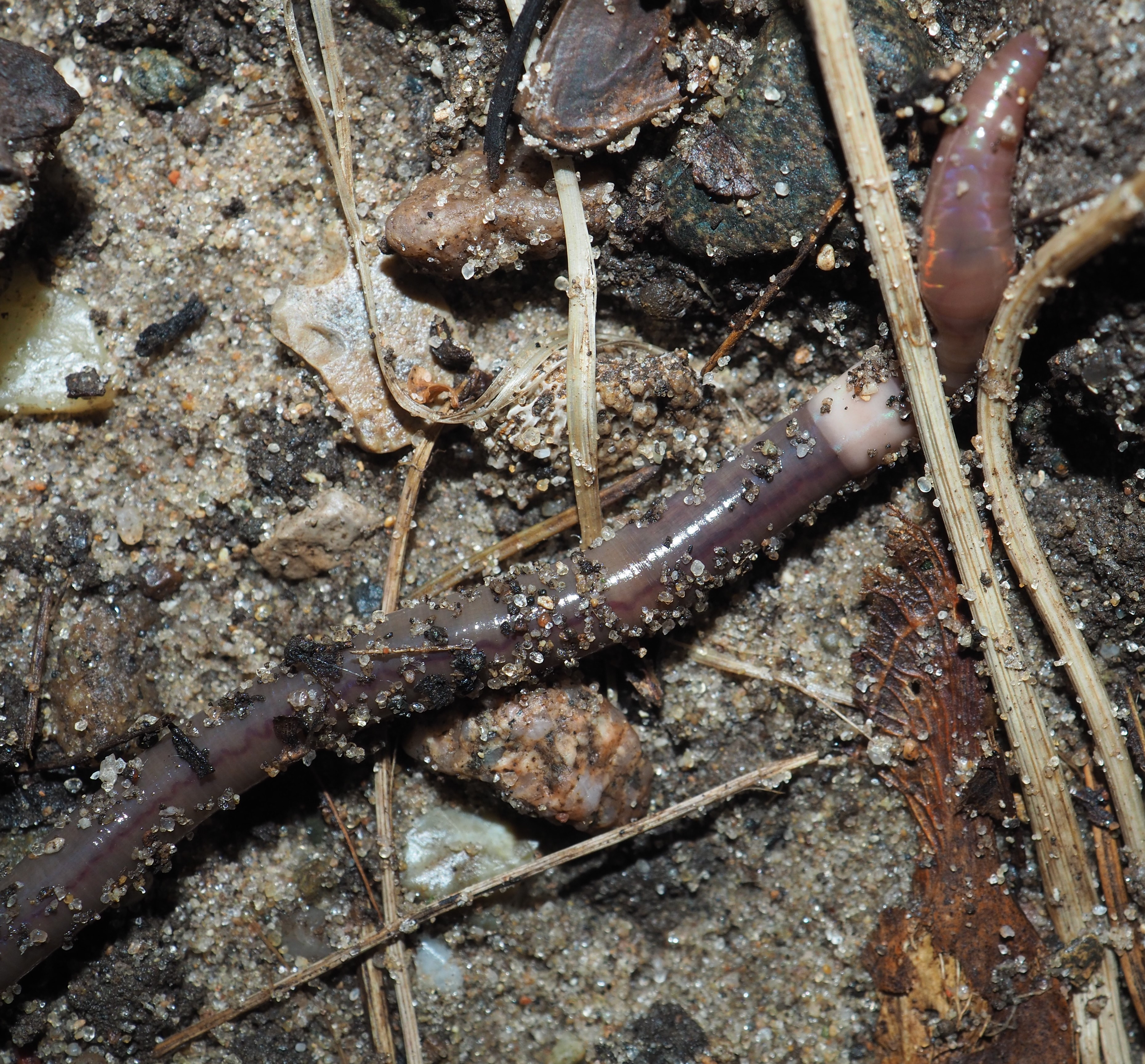
Here are a few egg cases. I believe each is from a different kind of spider. The first was on an oak twig; the second and third were on the wall of the woodshop. The person who identified the third picture said that the protrusions might be part of the case, not just babies pushing their way out.
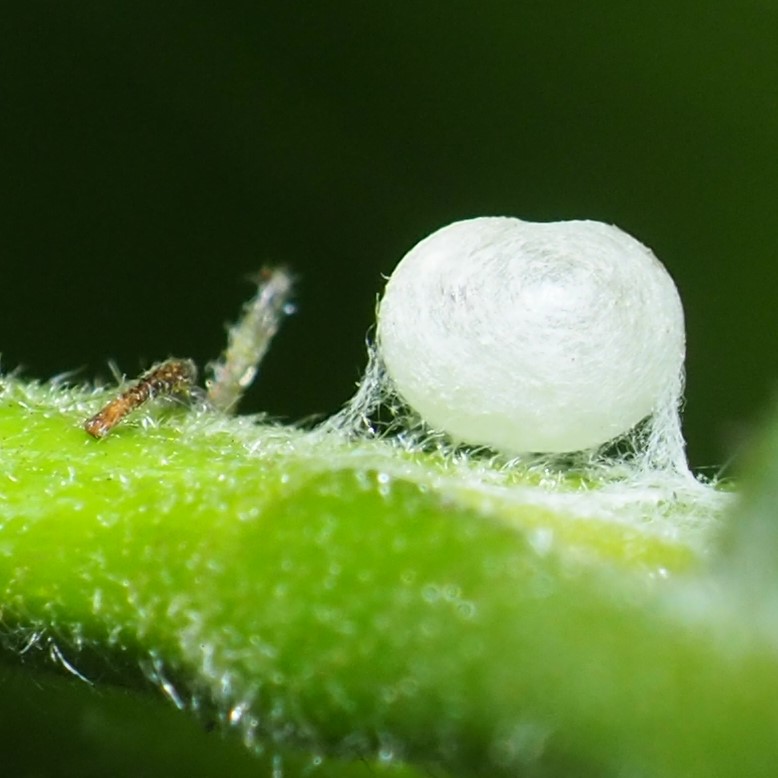
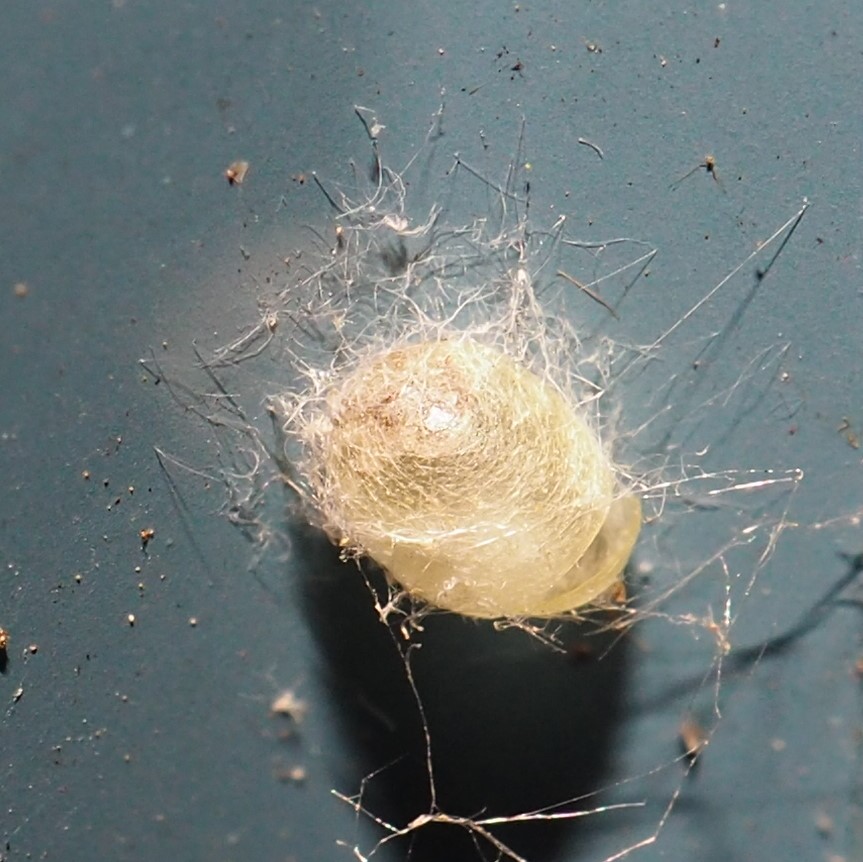
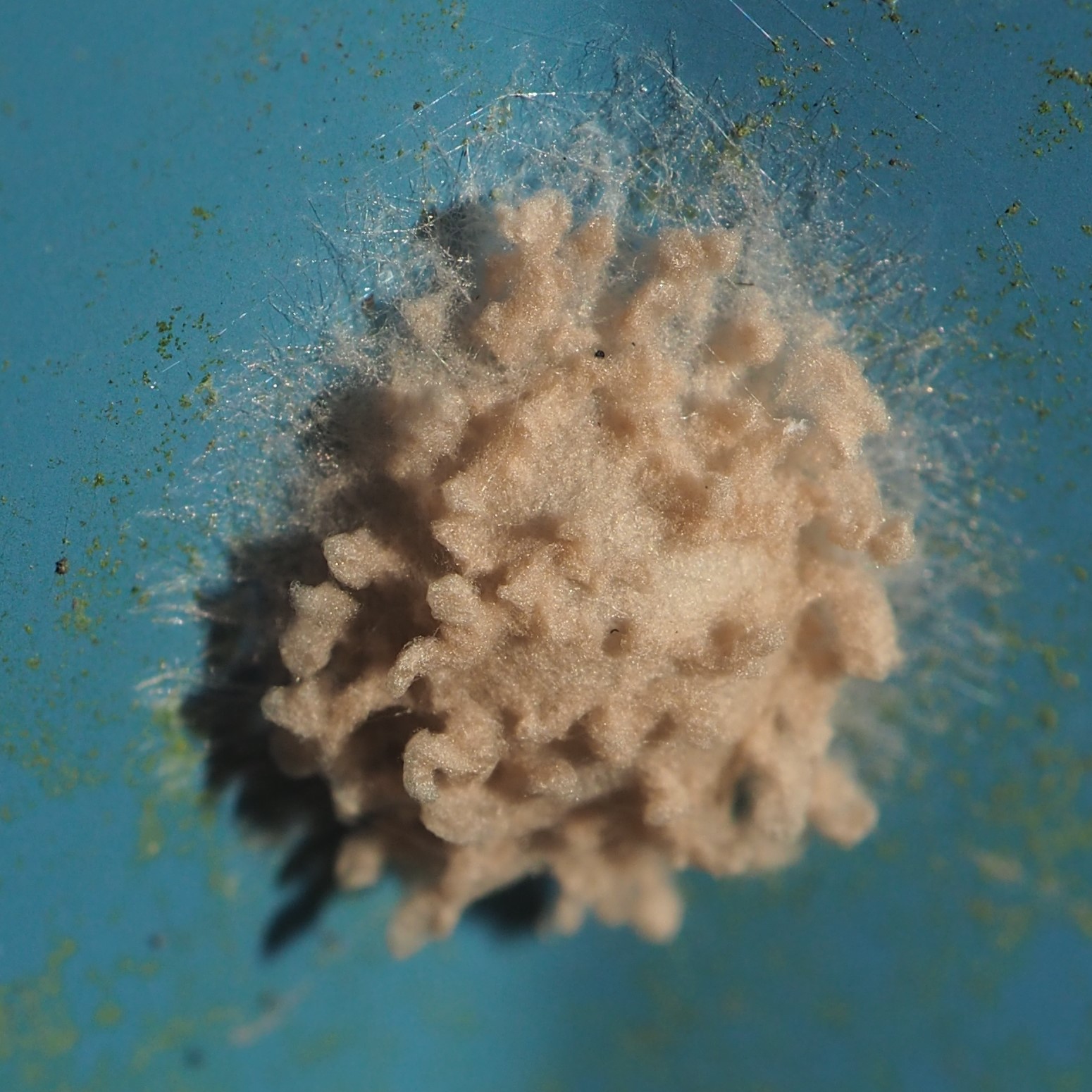
Now that the raccoons (SEVEN of them so far have been removed gently and taken to the farm) are a bit more nearly under control, the fishes seem calmer and more eager to pounce on their flake food. The Water Lilies and Lily Leaves are much less shredded now. The reddish leaves at left of the last image are likely the leaves of the magenta lilies.
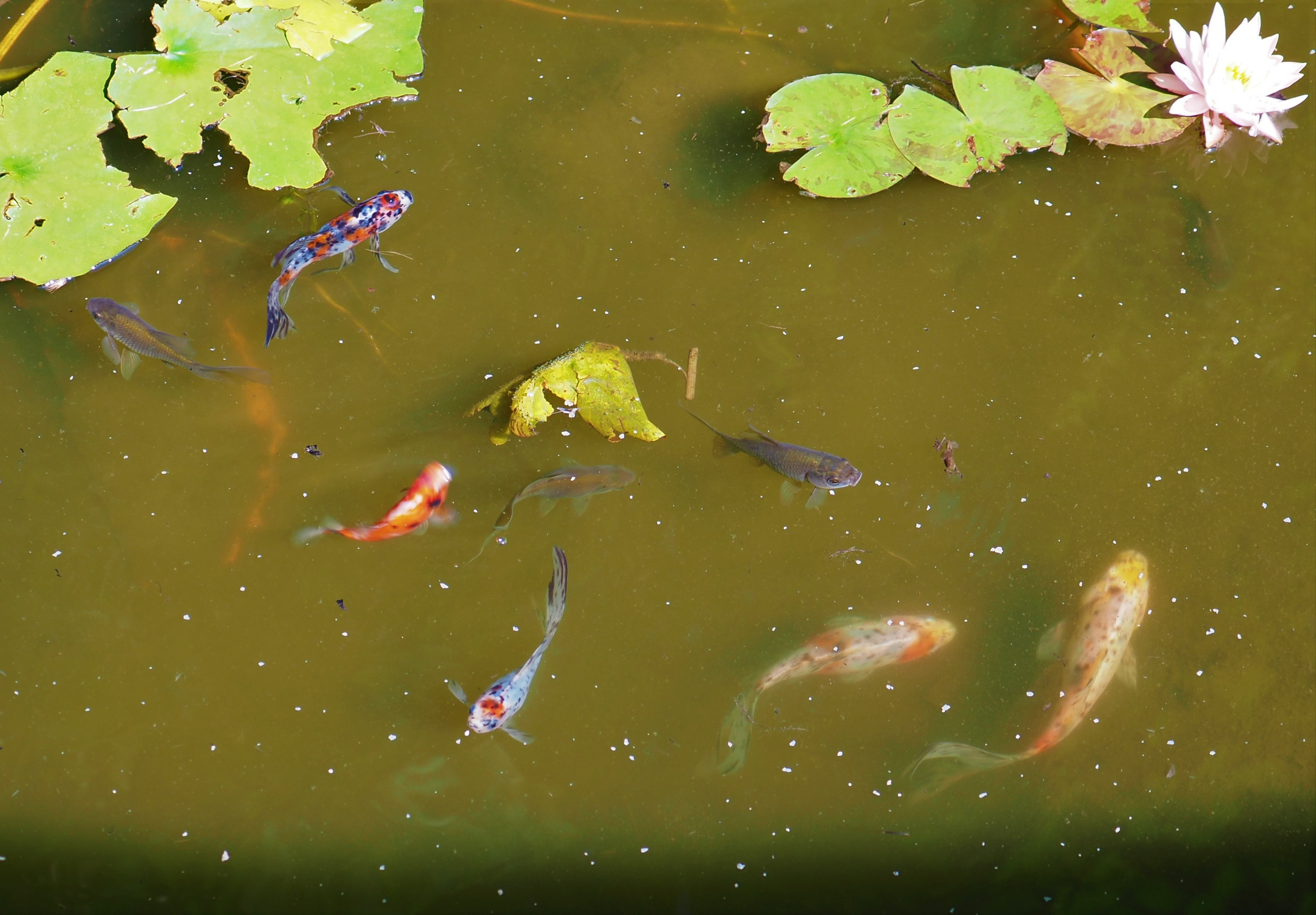
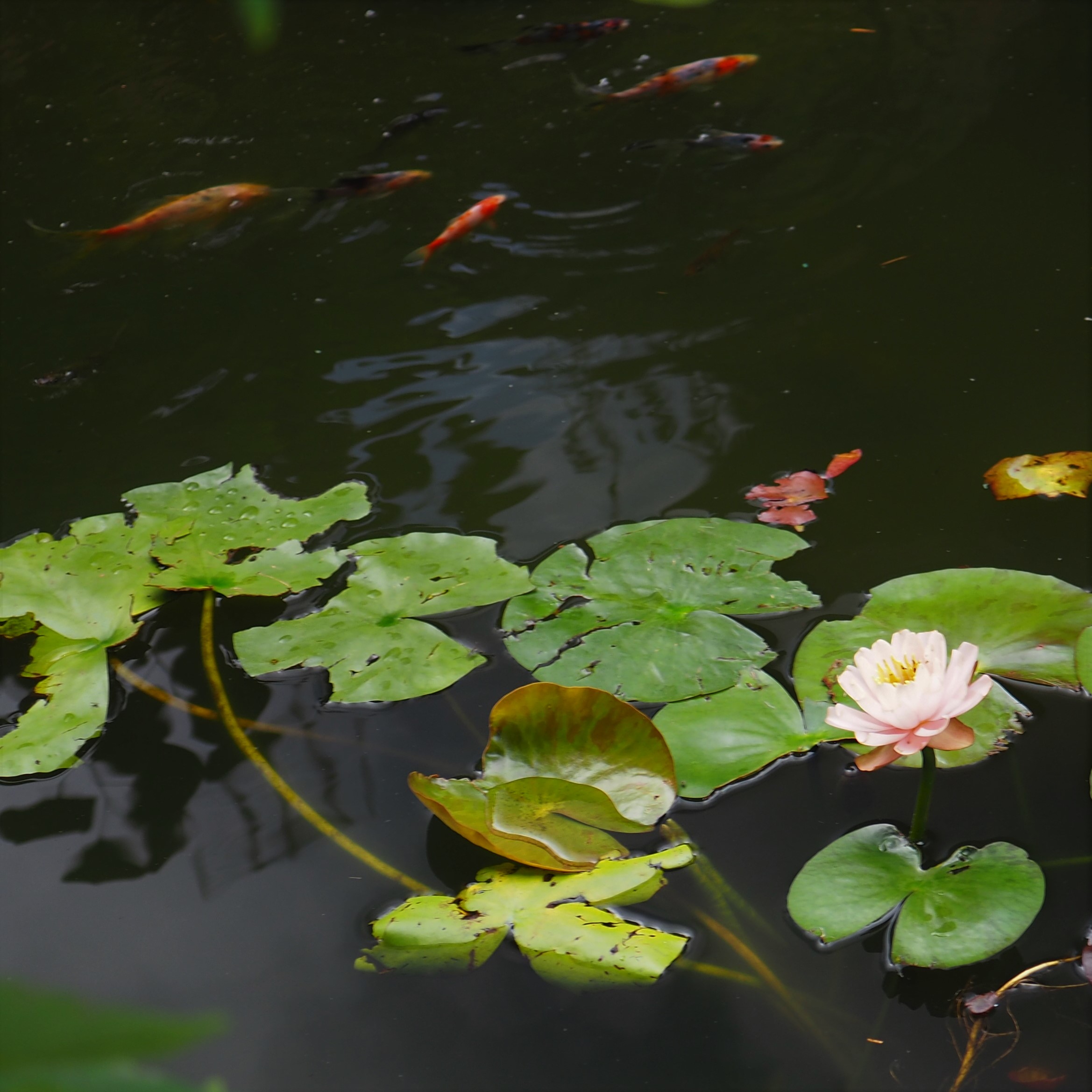
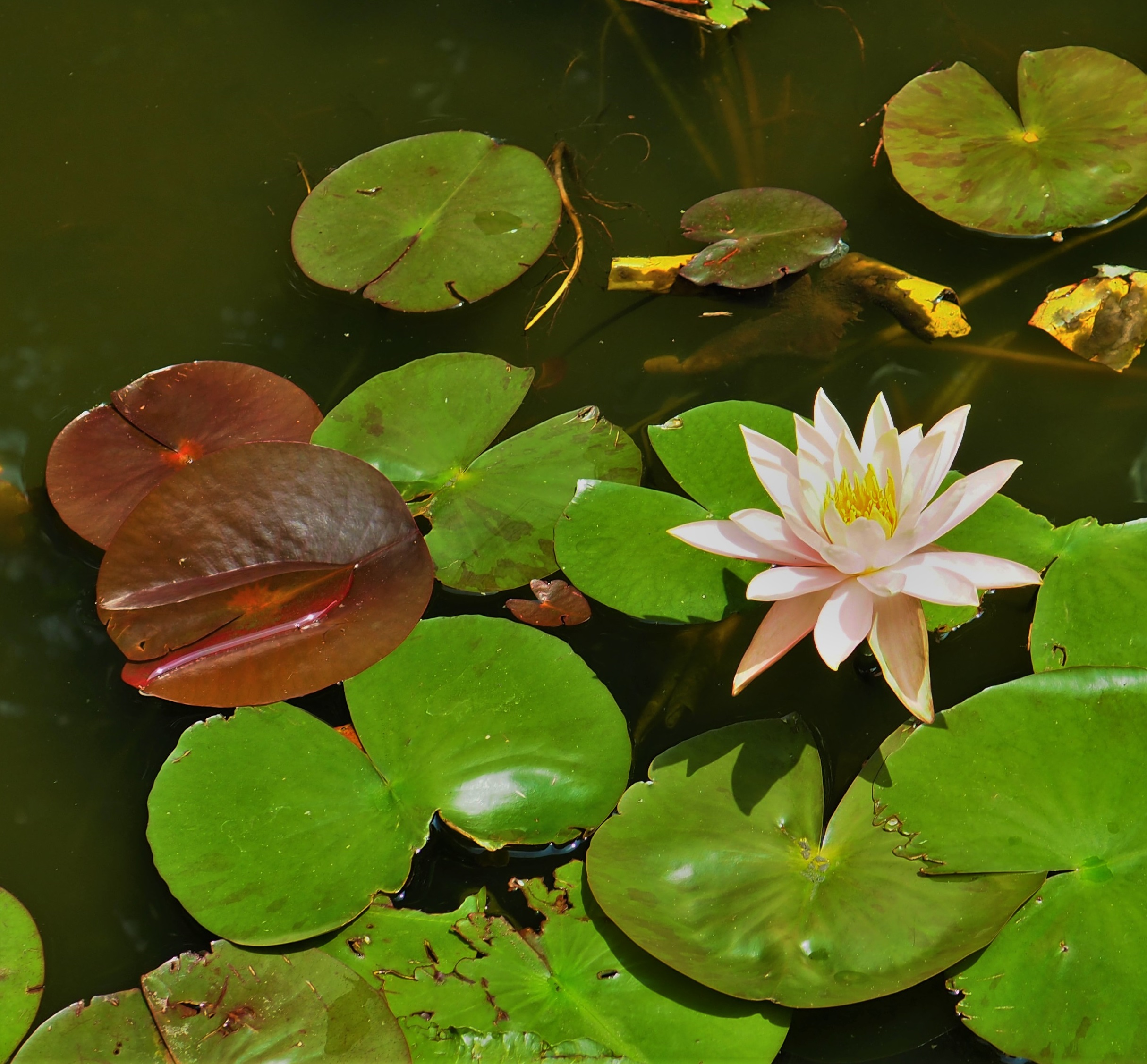
We've reached the Flies. My favorite Crane Fly seems to have been block-printed. This week the Hover Flies seem to be withdrawing, maybe because of the extreme heat of last week. But our Toxomerus geminatus was still around. The Long-legged Flies like to leap when the camera goes off and so you never know where the resultant figure will be. These are real little jewels of the garden.
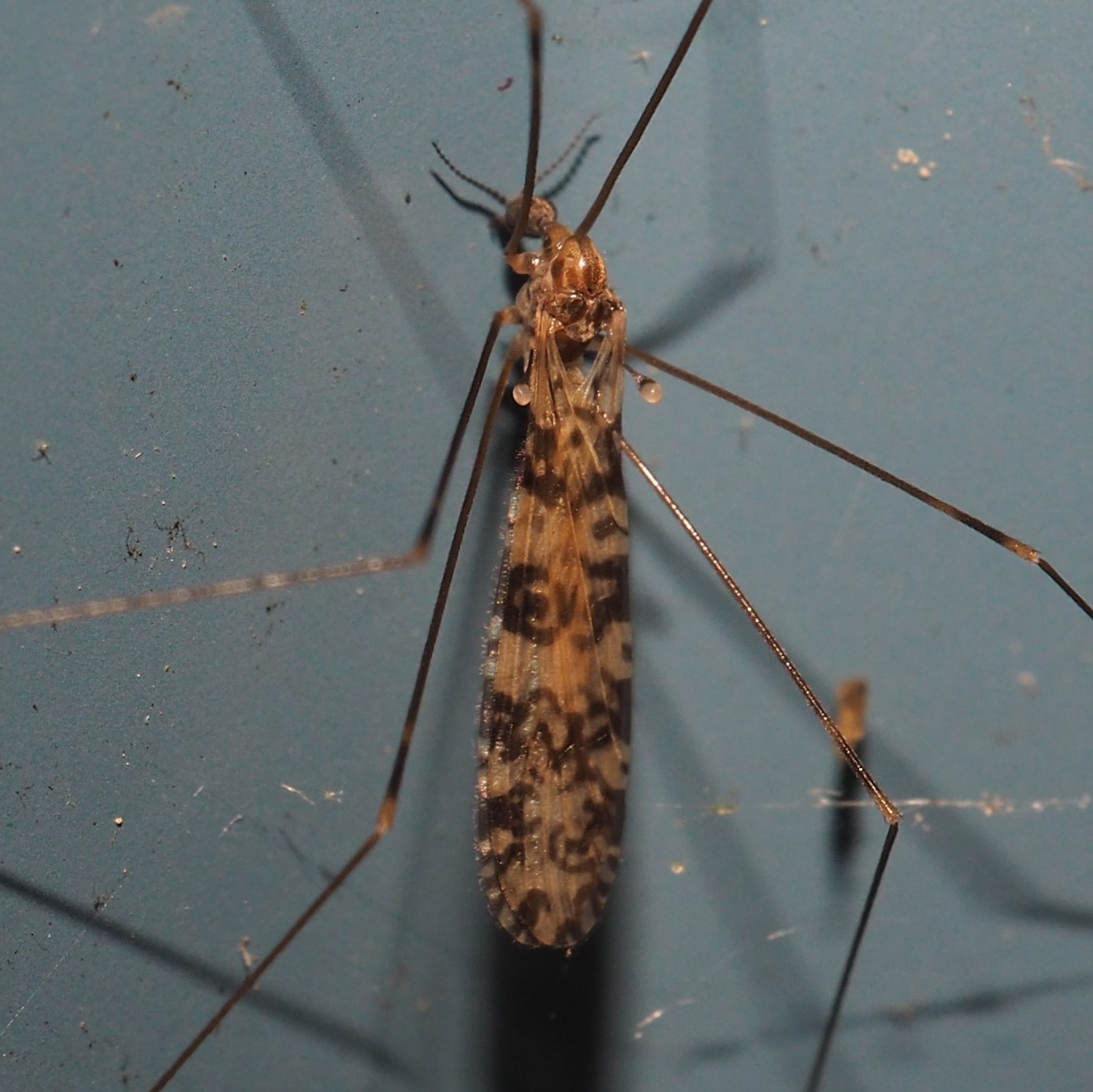
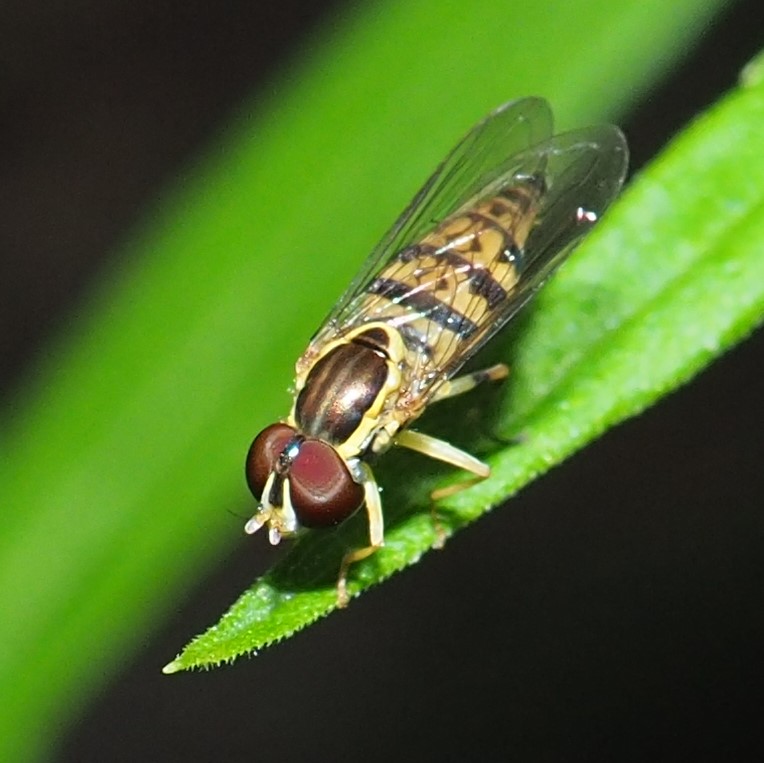
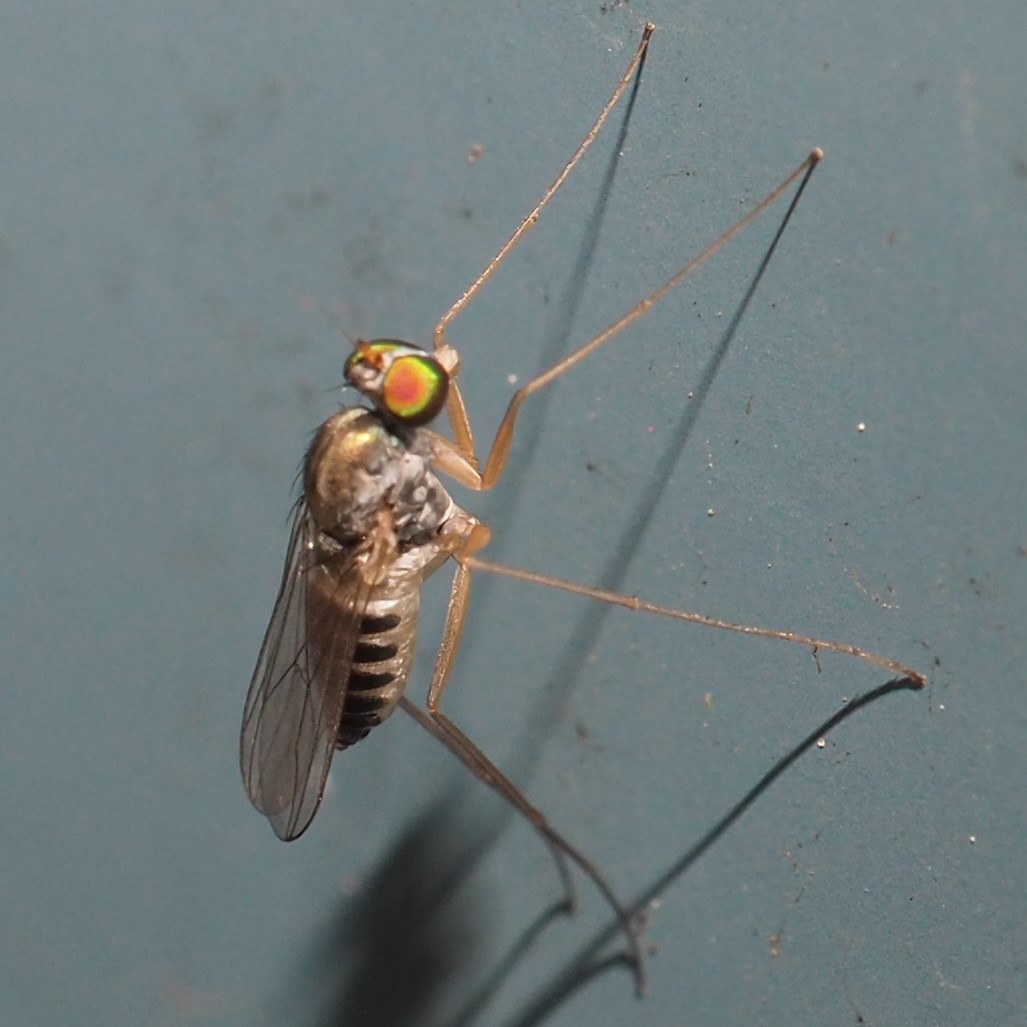
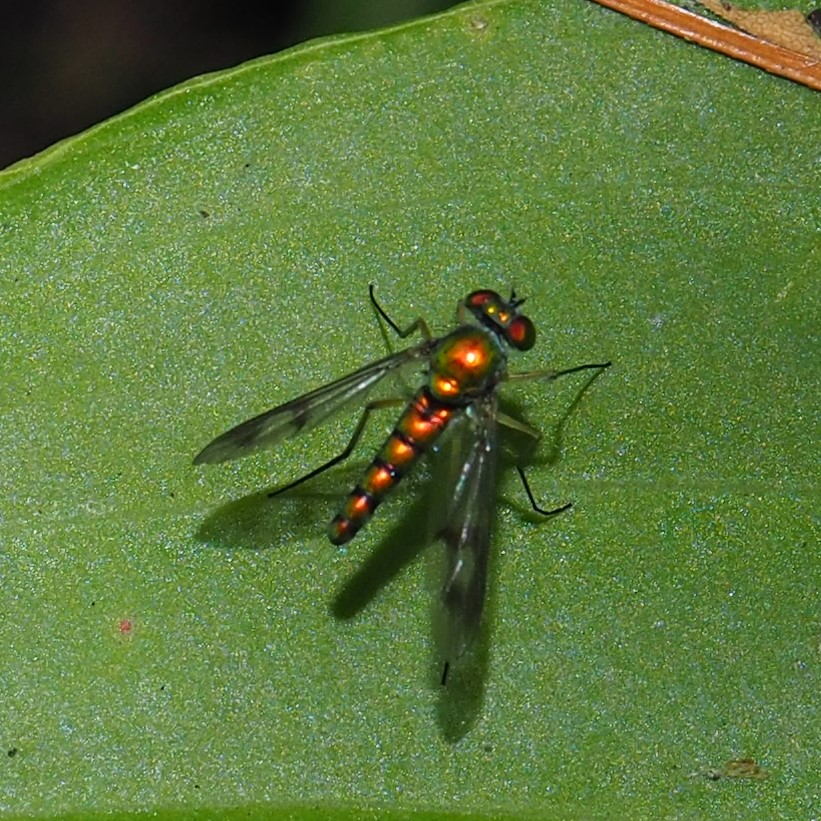
The smaller flies are common now, especially the fruit flies (number 1) and the Minettia lupulinas (numbers 2 and 3). The latter are such a gracious mixture of pink, yellow and blue!
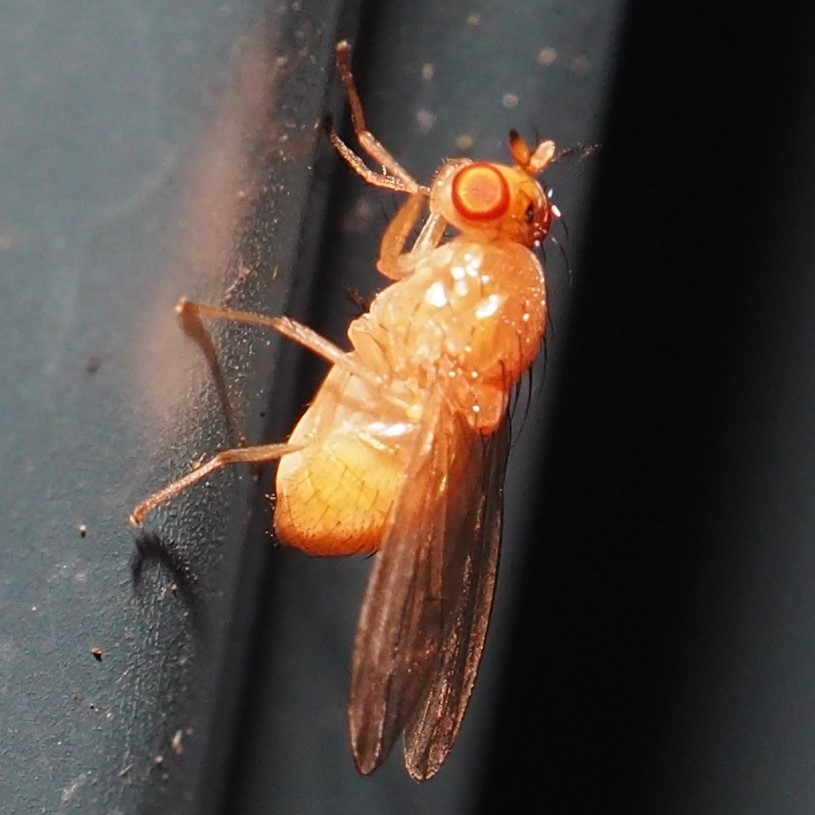
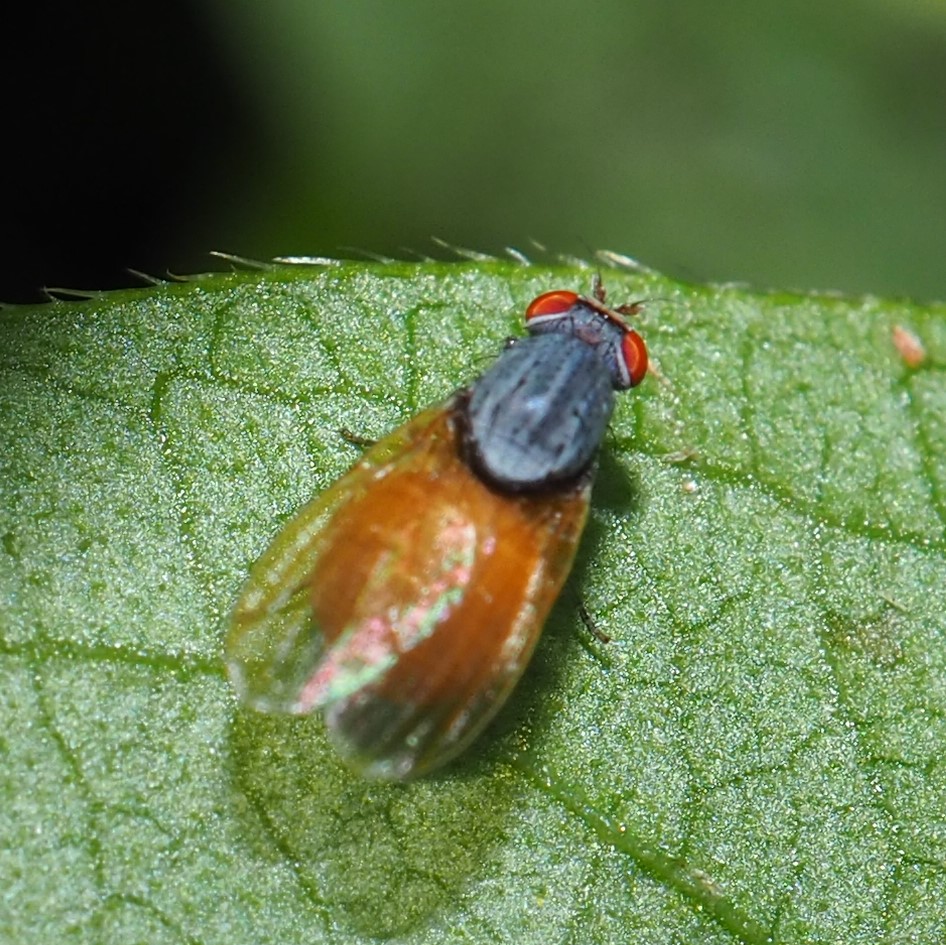
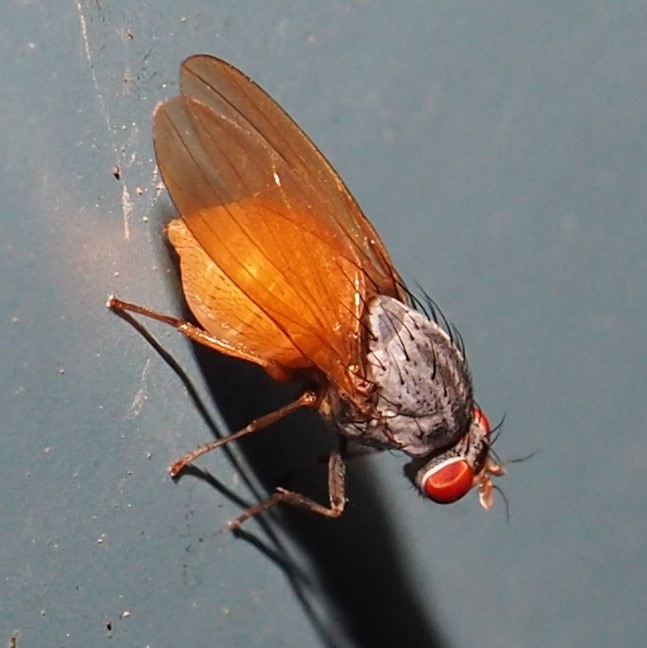
Here we have one that should be very familiar to you, the Moth Fly! The Quadrate Snipe Flies are still around - this is the male. Third is the one I have been somewhat vexed by, because I can't figure out what is with those shriveled eyes. Compare the eyes on the Quadrate Snipe and those on the third image. Nobody on iNat has ventured any guesses as to what it may be. One day we will know, I hope!
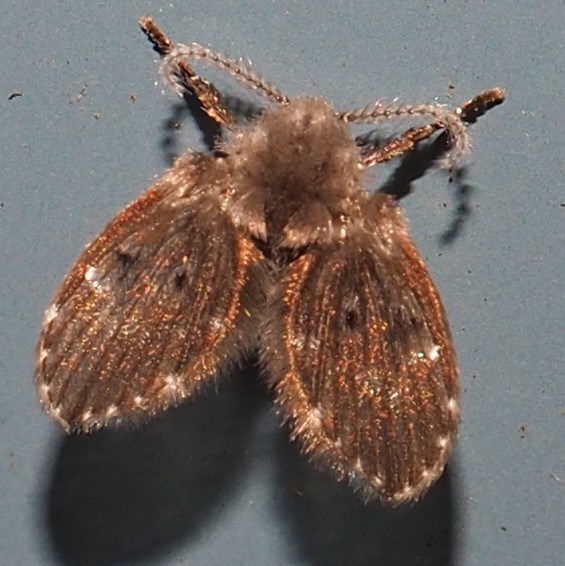
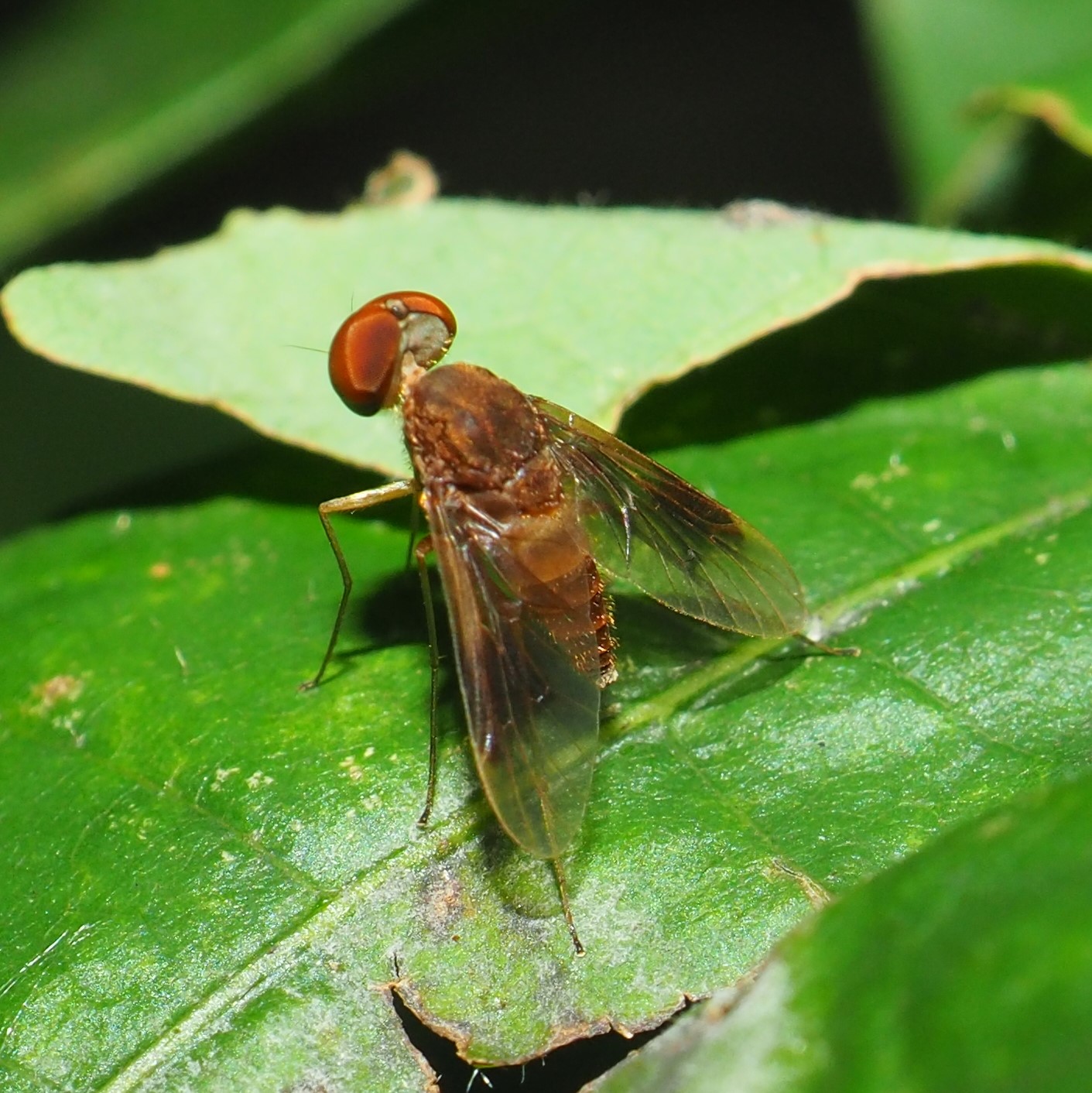
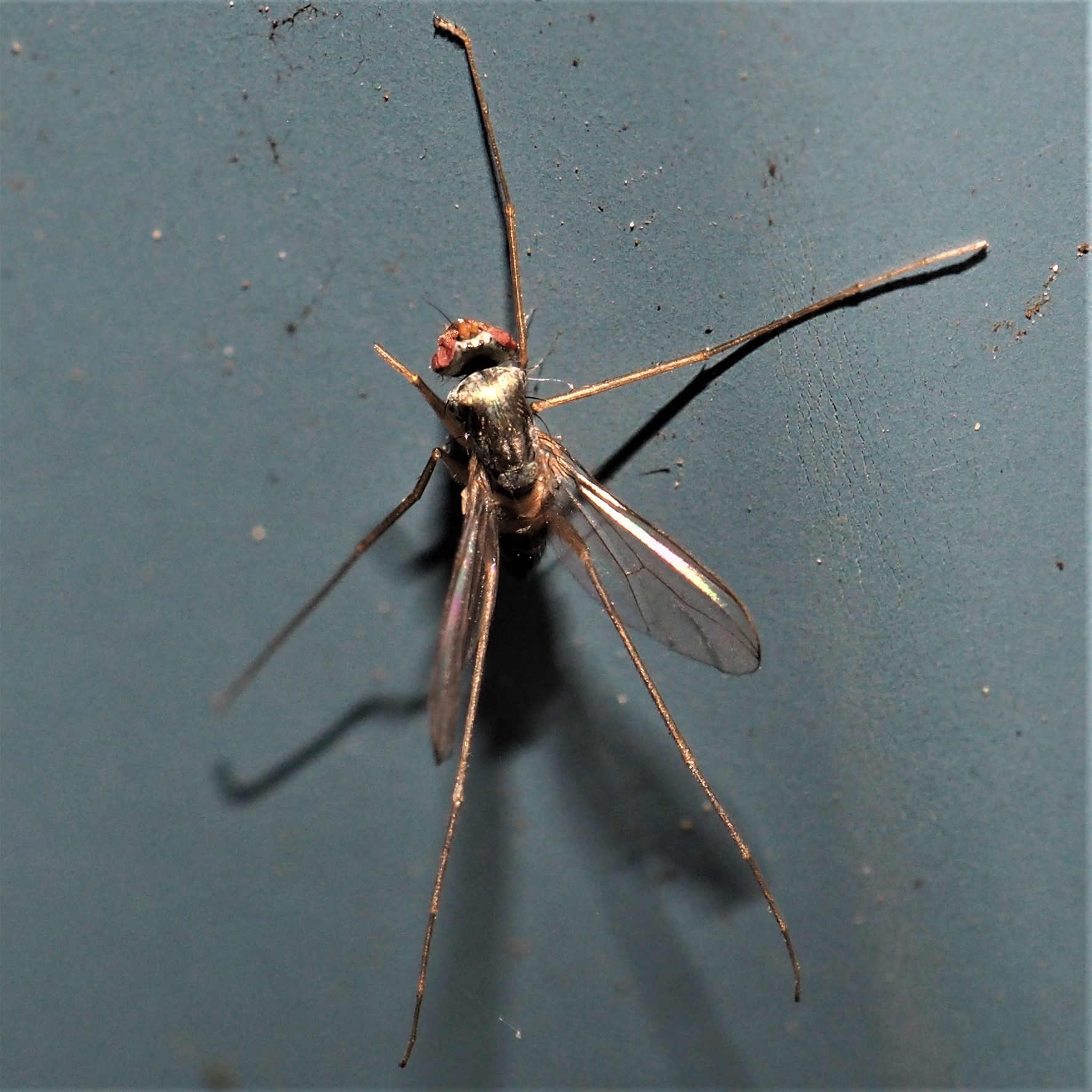
I think that was it for the flies today. There will be more later, I'm sure. But in the meantime, here's Froggy. Oh- and here's another frog, a Bull Frog. I suppose he/she ought to have a name too, maybe Bully? My neighbor is a teacher and a while back she brought a little Bull Frog tadpole and let it loose in the pond. At that point it didn't have any legs at all, but a fat body and a long tail. Now Bully's tail is much shorter and he/she has little legs. I don't know if you noticed that when the baby toads were tadpoles, they didn't come up and climb on things until they were ready to come out of the water for good! But Bully likes sunning him/herself on a lily pad. Bully is going to be a very large frog soon. Much bigger than Froggy. But for now Bully is just a baby. Last is one of the Toadlets! Growing, growing.
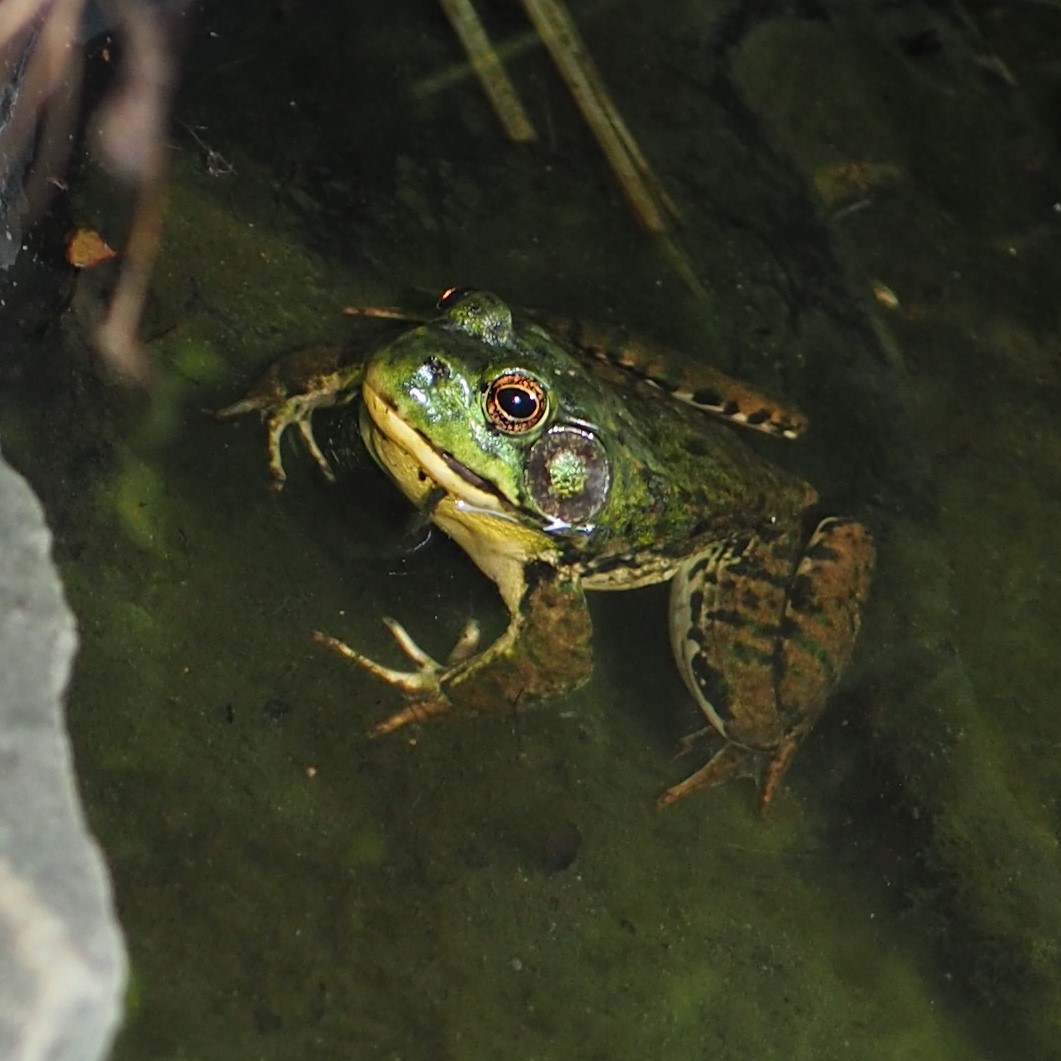
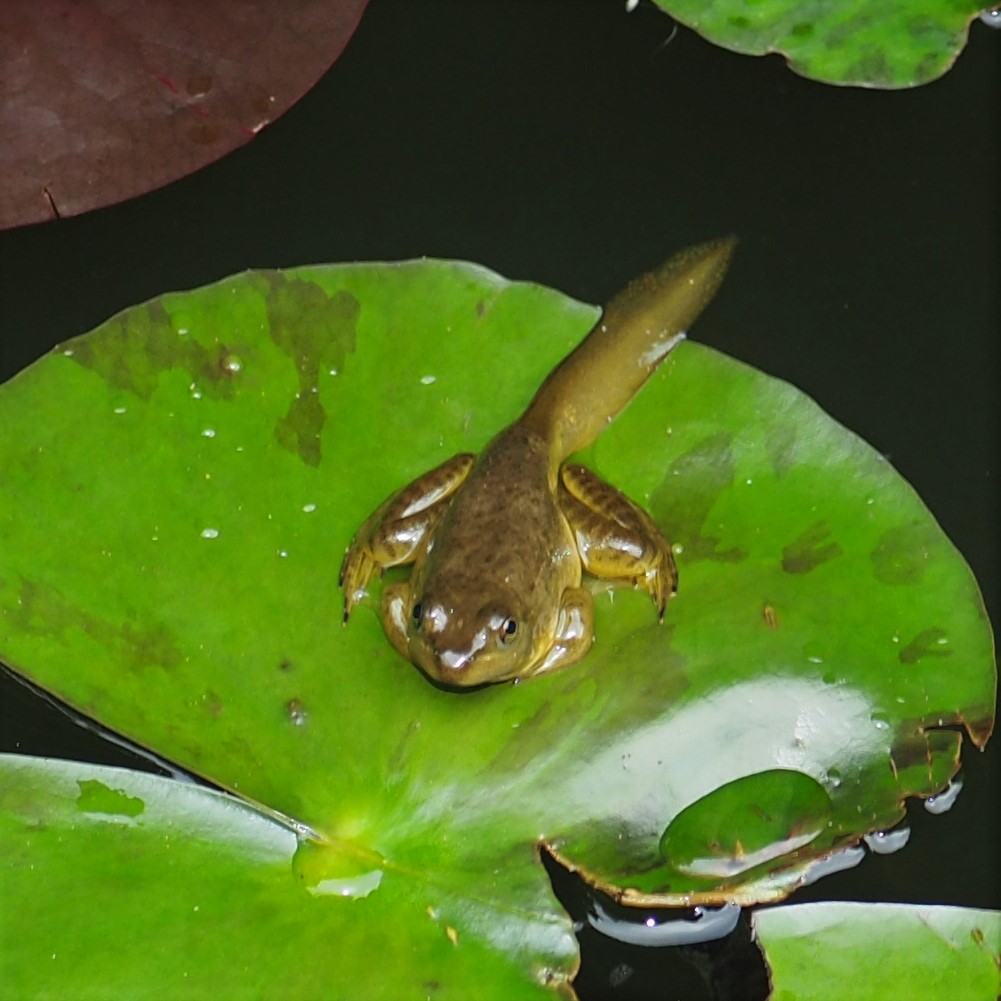
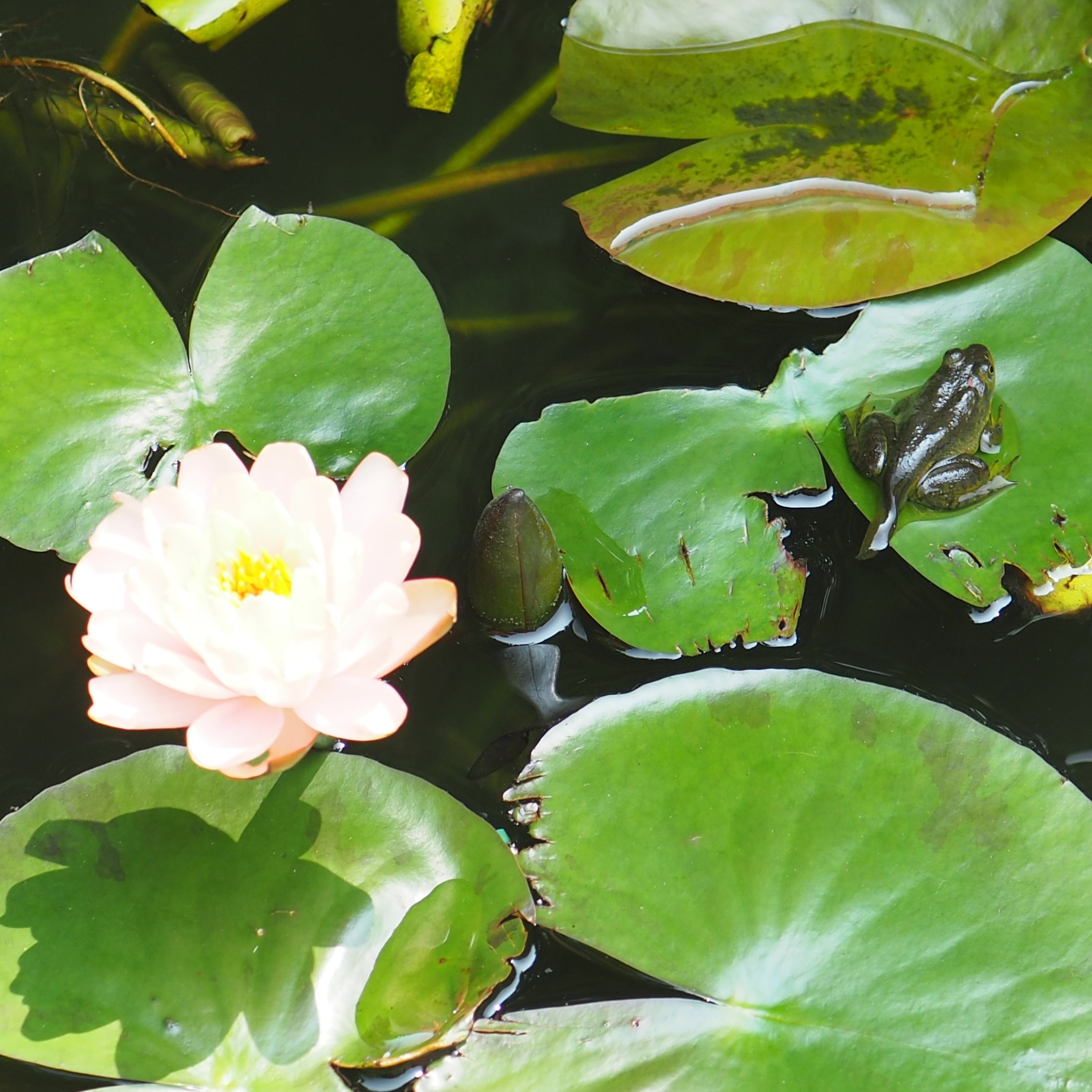
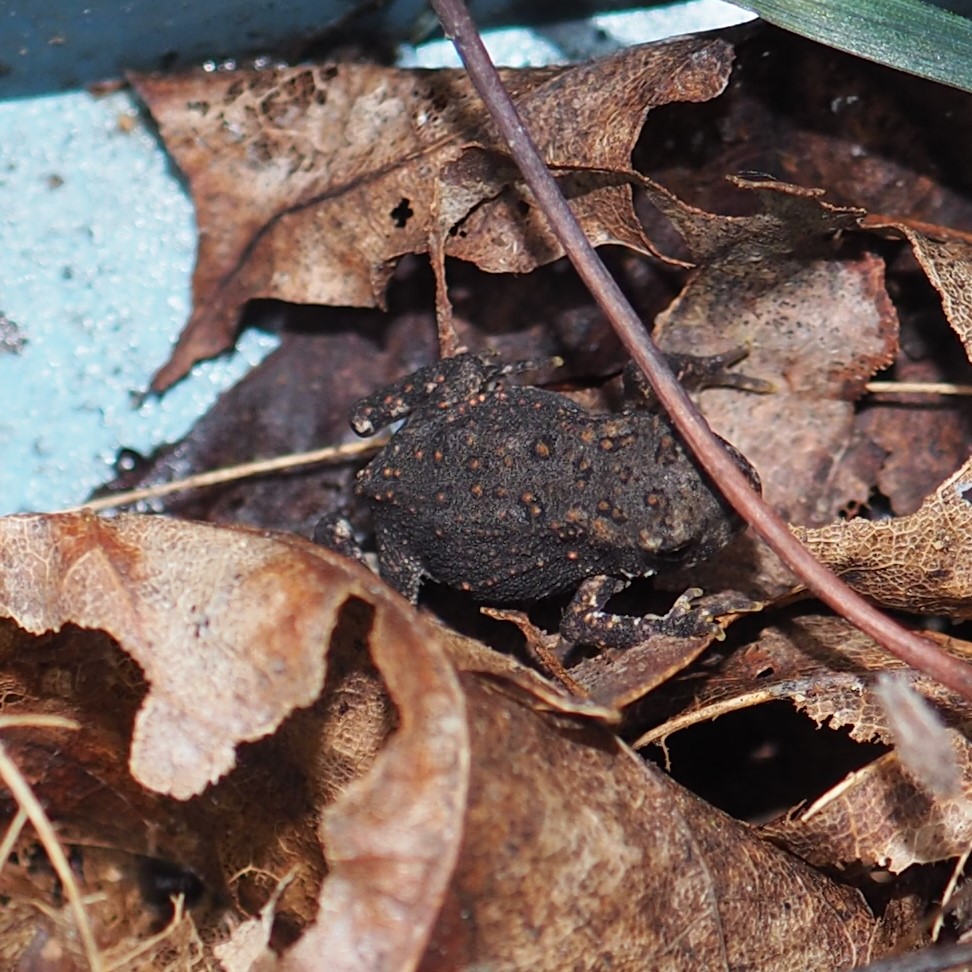
Here are a couple of Harvestmen: a black on white one, a pretty reddish one and a two-tone brownish one. We should be seeing more color combinations soon.
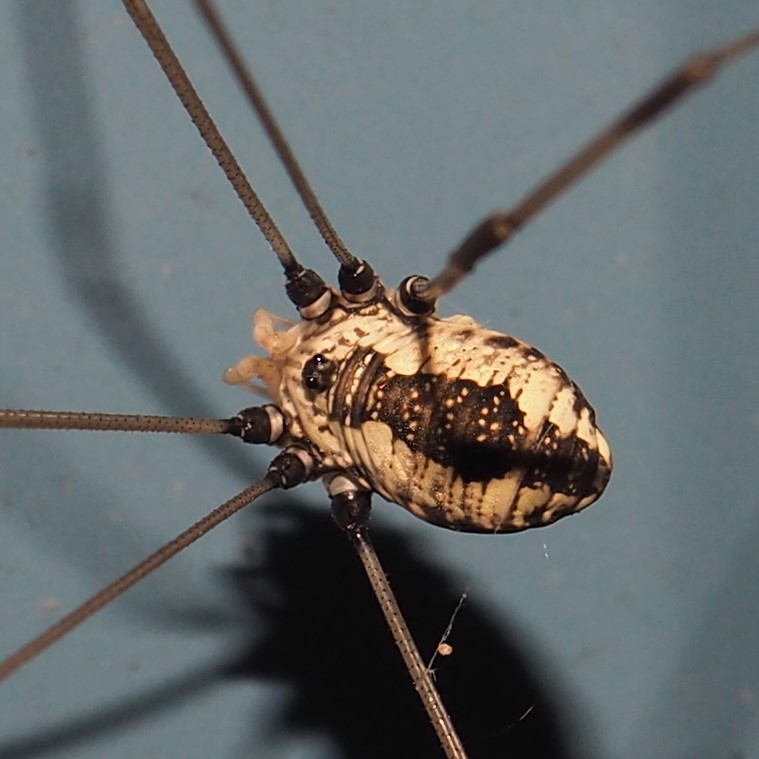
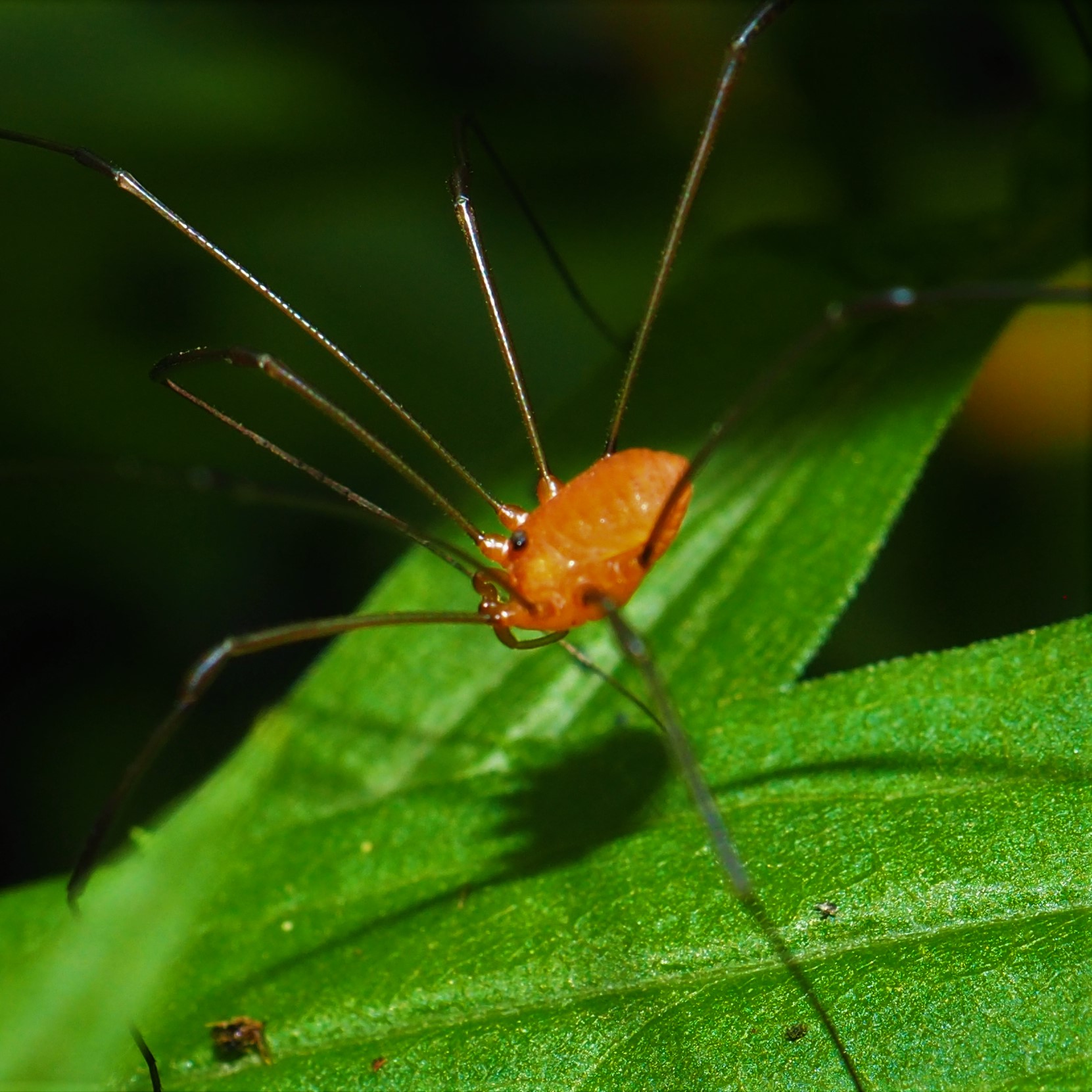
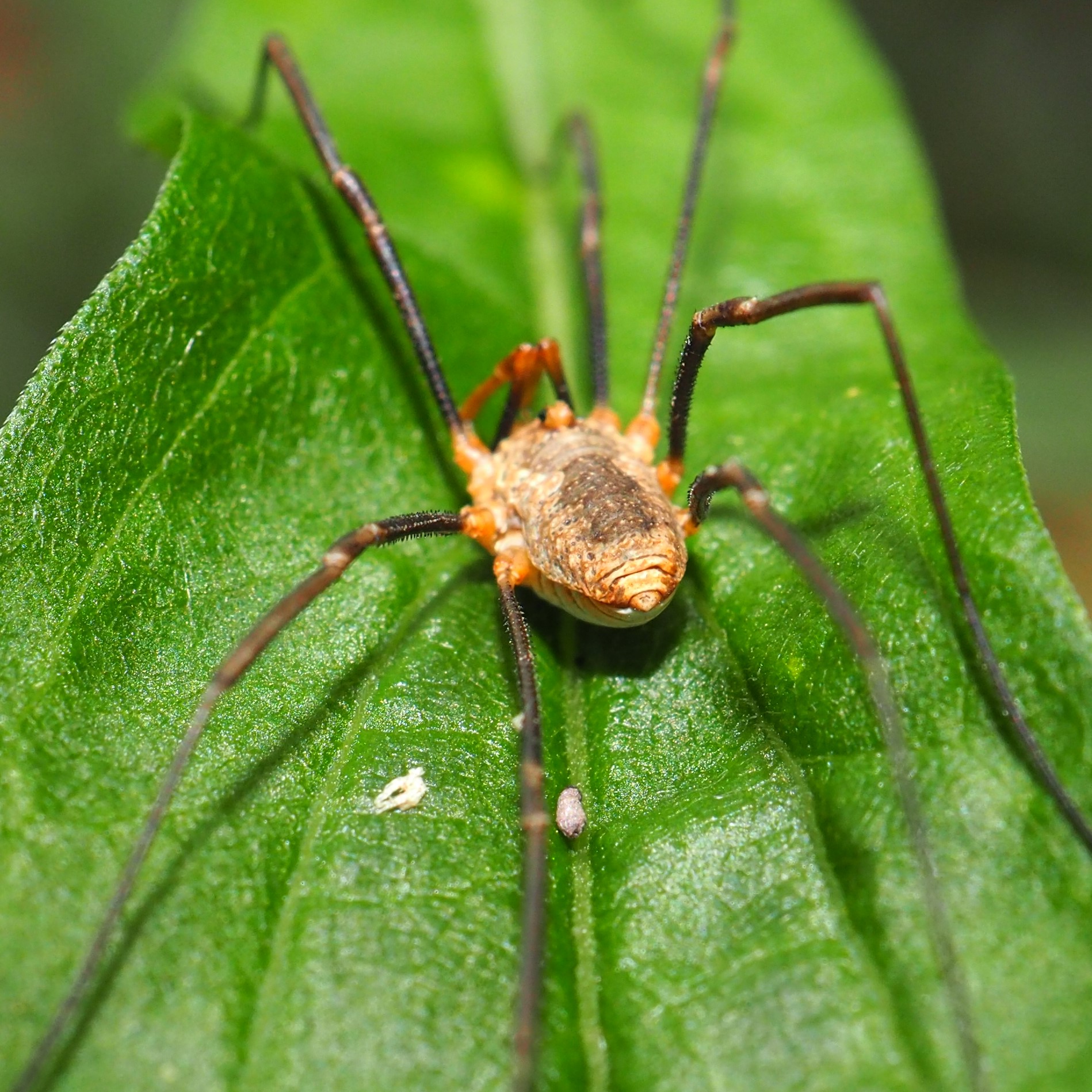
Before we head into the spiders, here are a few more outliers. First, a Millipede. Note the two pairs of legs per segment (a centipede would only have one pair). Second and third, a Scorpionfly. At first, I thought a Scorpionfly was a Scorpion Fly as if it were a kind of Fly. But Scorpionflies aren't Flies! They're very pretty, aren't they? The reason they're called Scorpionflies is that the males roll their tails up like Scorpions. Last, this Snail climbed up the shop wall some days ago and is still hanging on.
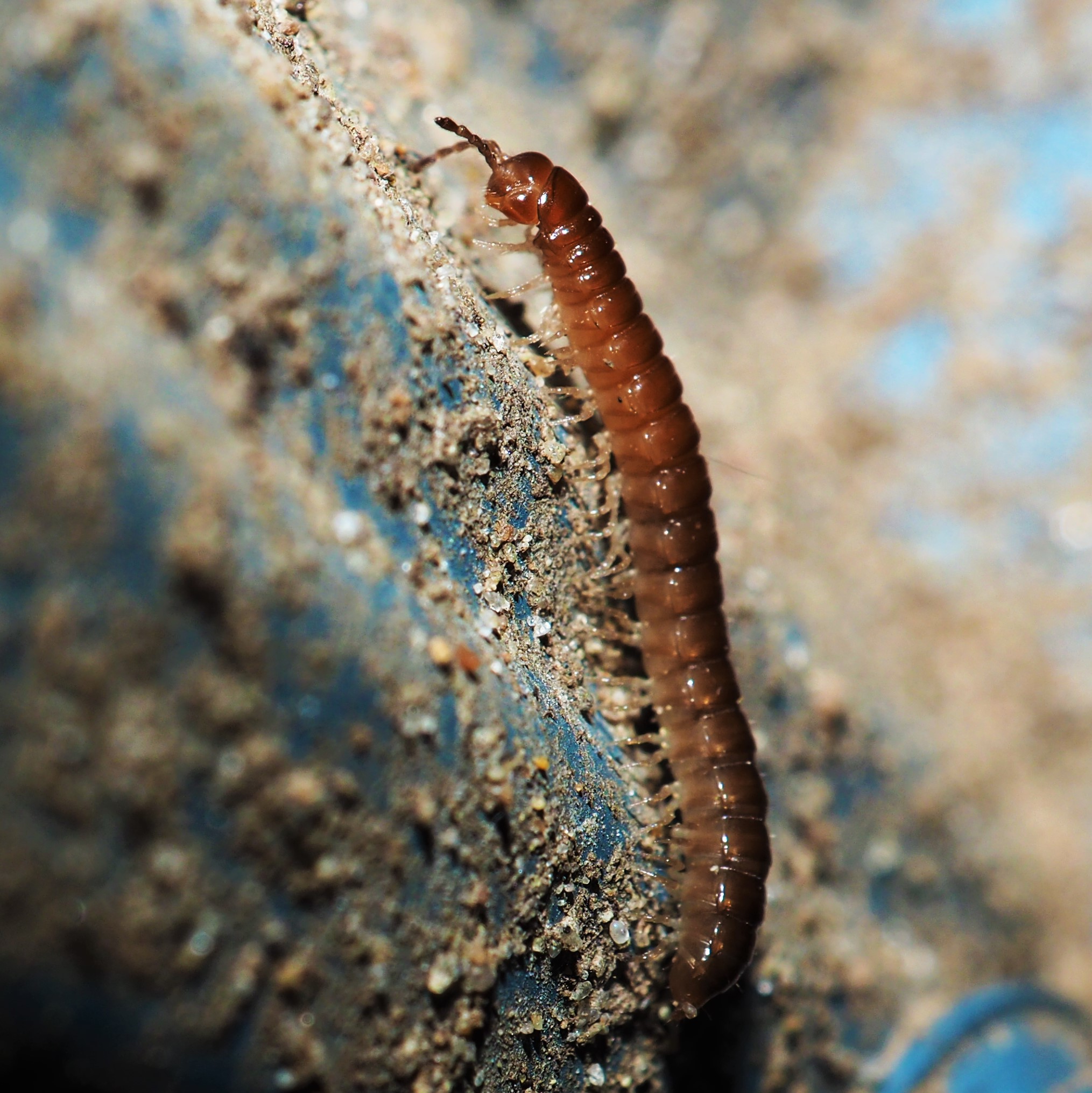
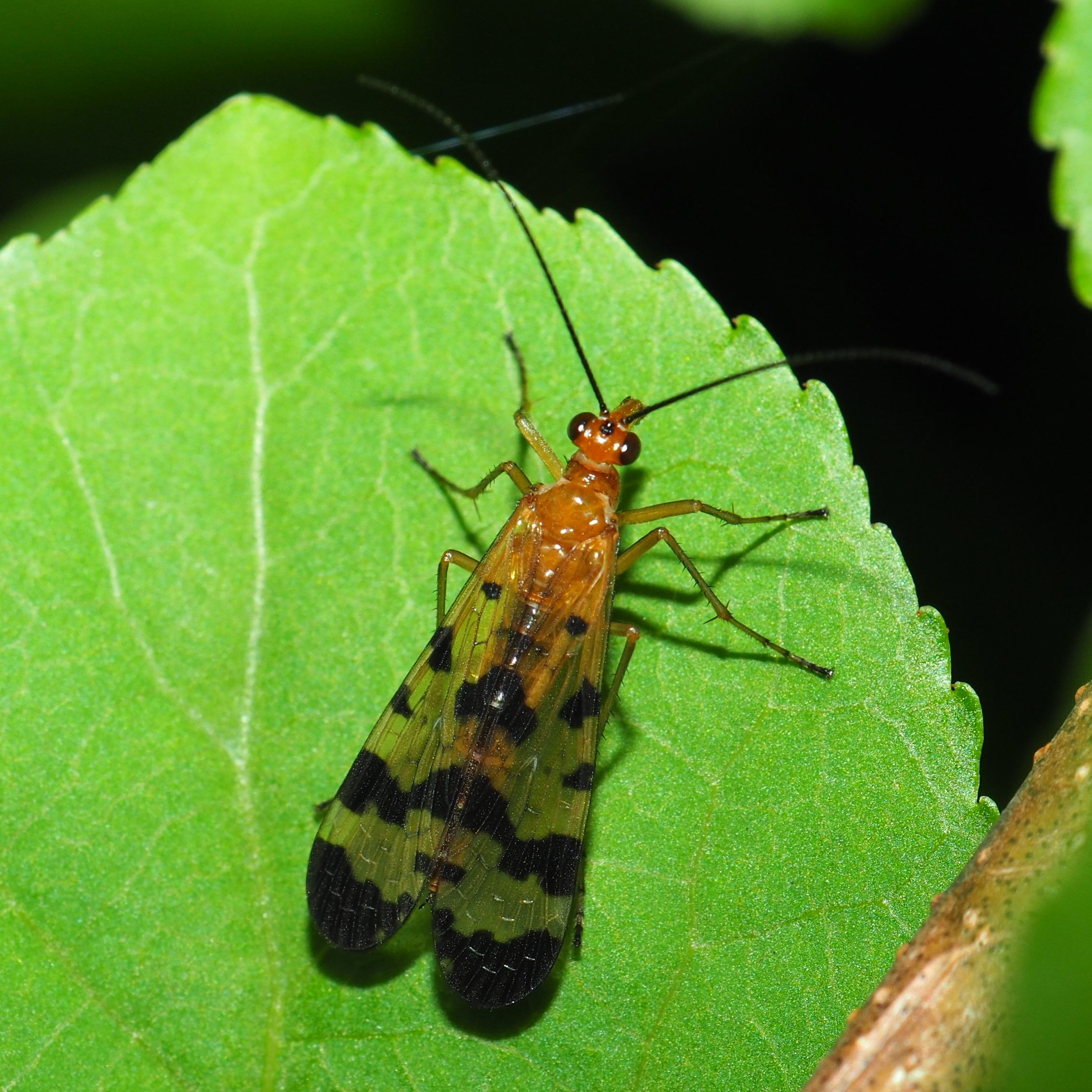
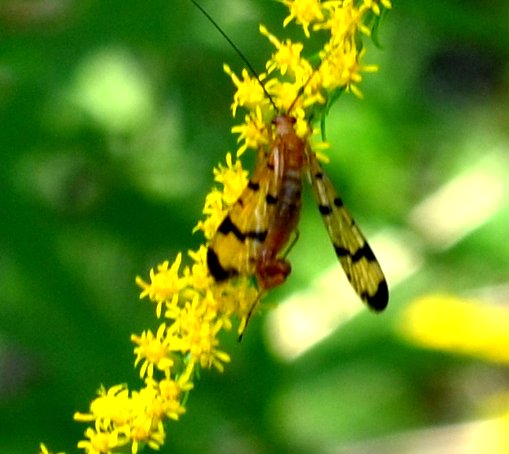
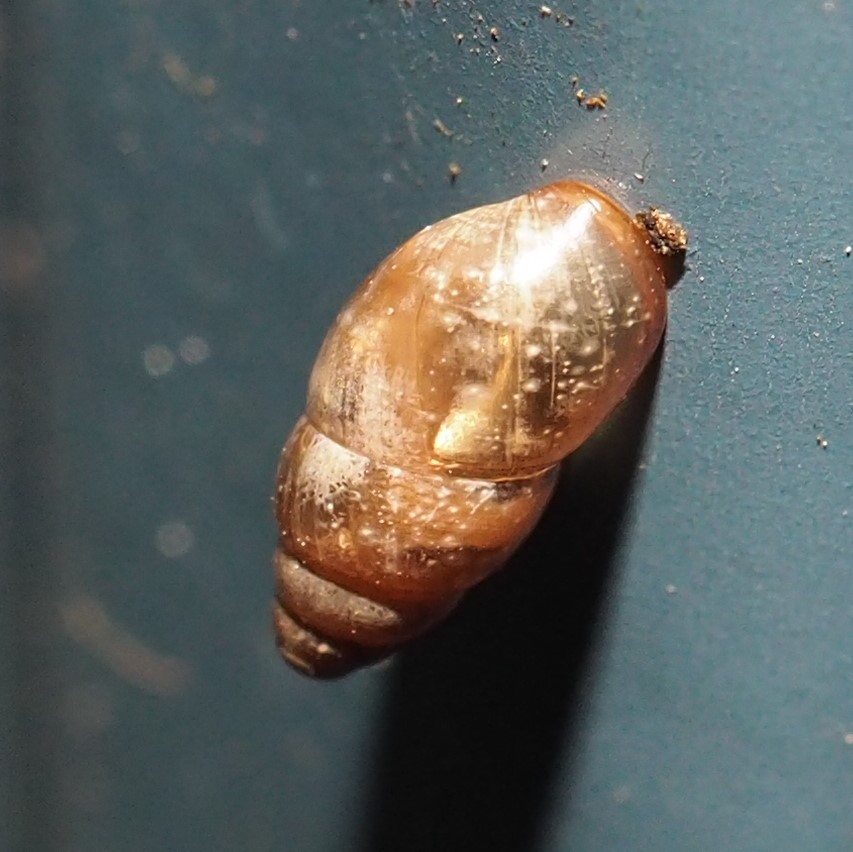
Well, now we ARE in the spiders. Alphabetically, we first meet a Cellar Spider, genus Pholcus. Next, a Common House Spider. To me, this one looks as if it is jumping rope (which DOESN'T make it a Jumping Spider). Next is a very tiny Crab Spider. It gets its name because of the way its front two pairs of legs are held close together and each of those two-leg legs looks like a Crab's claw.
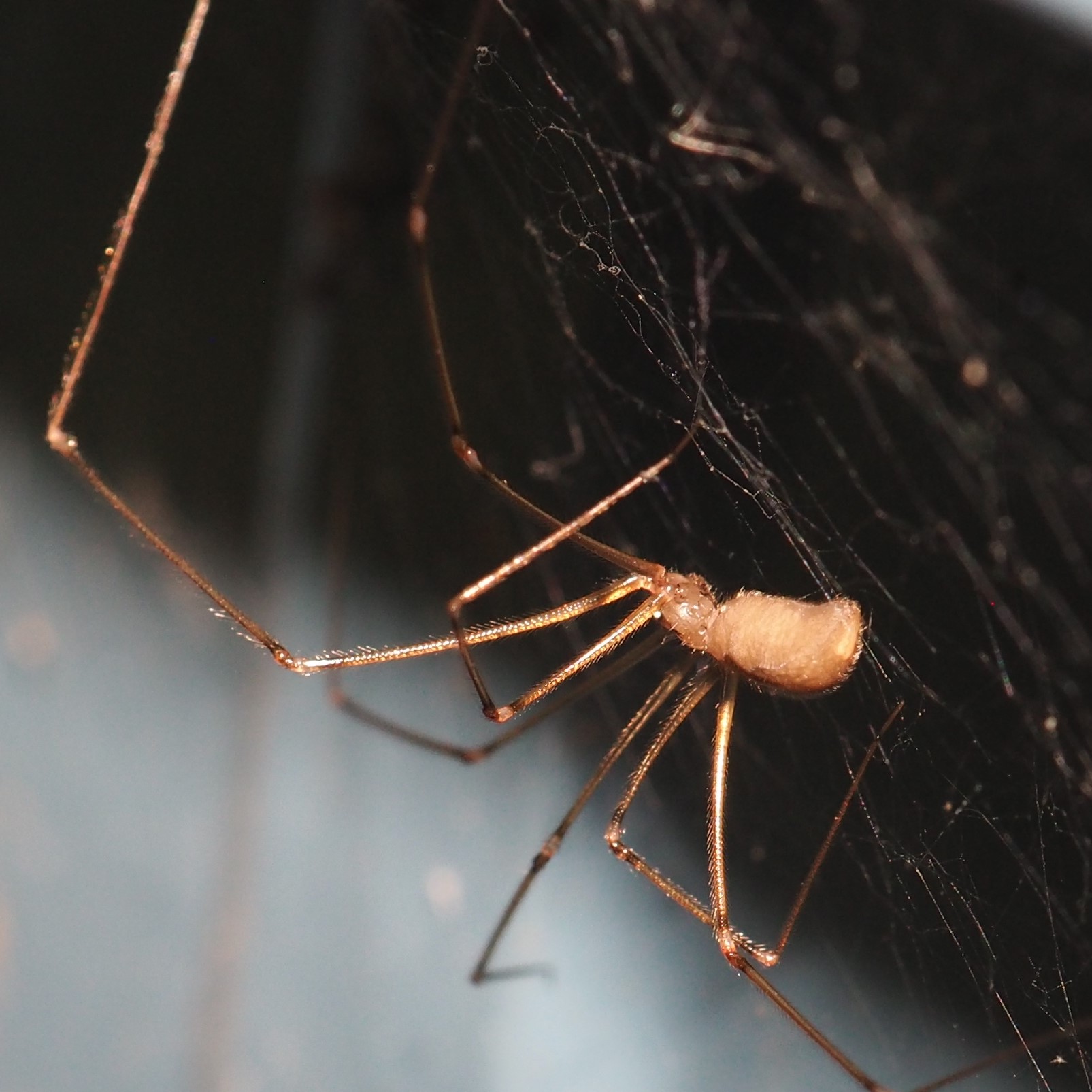
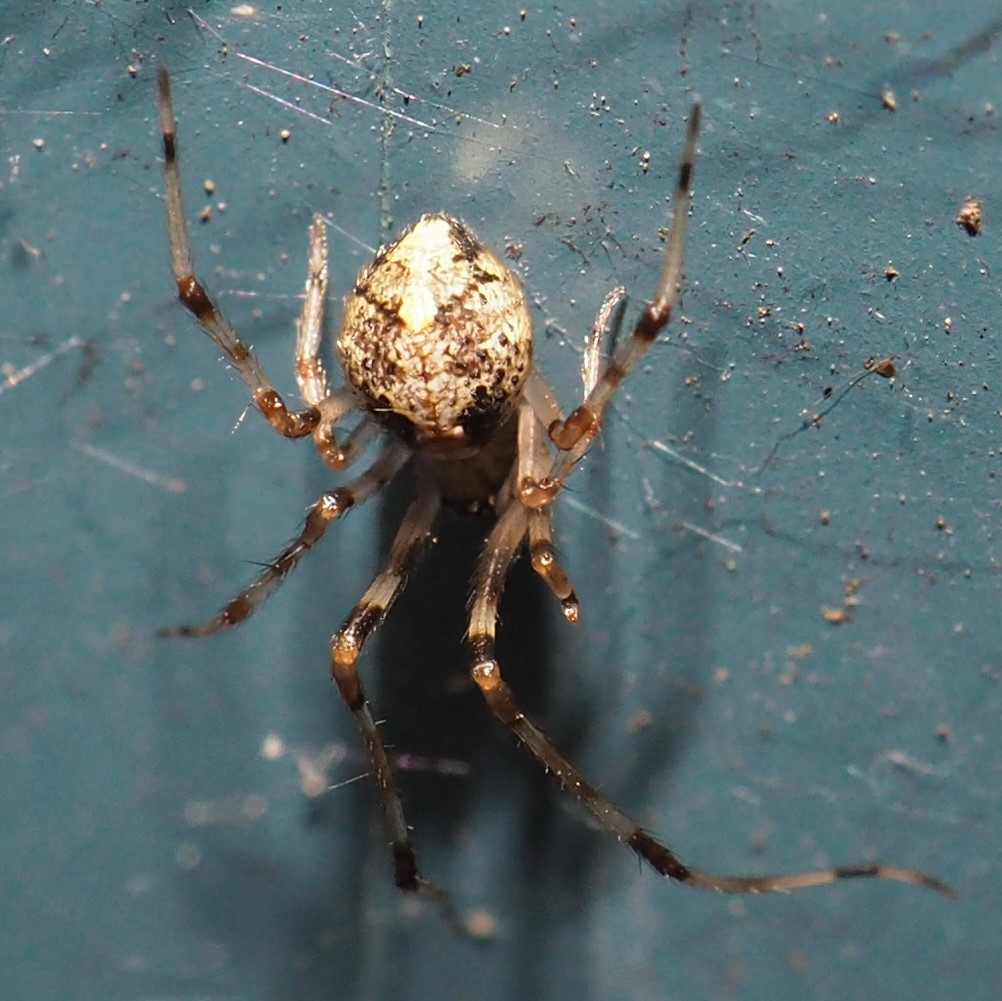
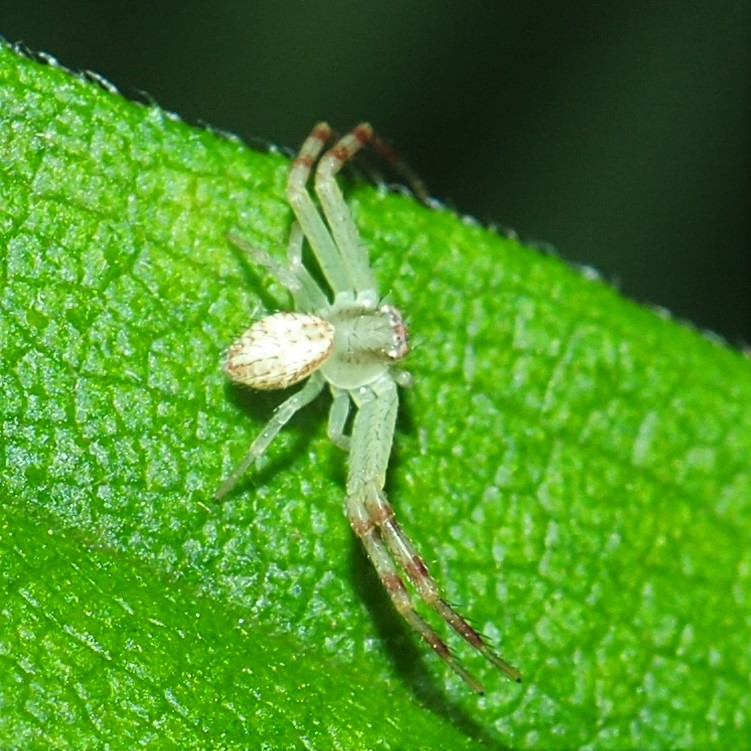
Here is that little Crab spider we met last week, the one that seemed to turn pink from eating red food. And next are two later pictures of a similar spider.
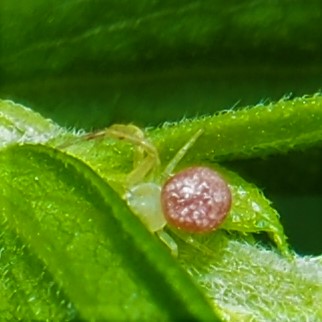

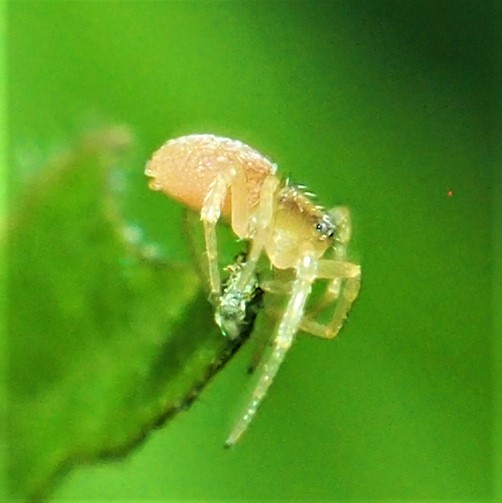
Here is another of those Common Candy-striped spiders (Enoplognatha ovata). And another - the other sex.
Third, a Grass Spider - here we seem to be able to see through its sheet web. And fourth, a spider inside its sheet web. It's probably a Grassie too.
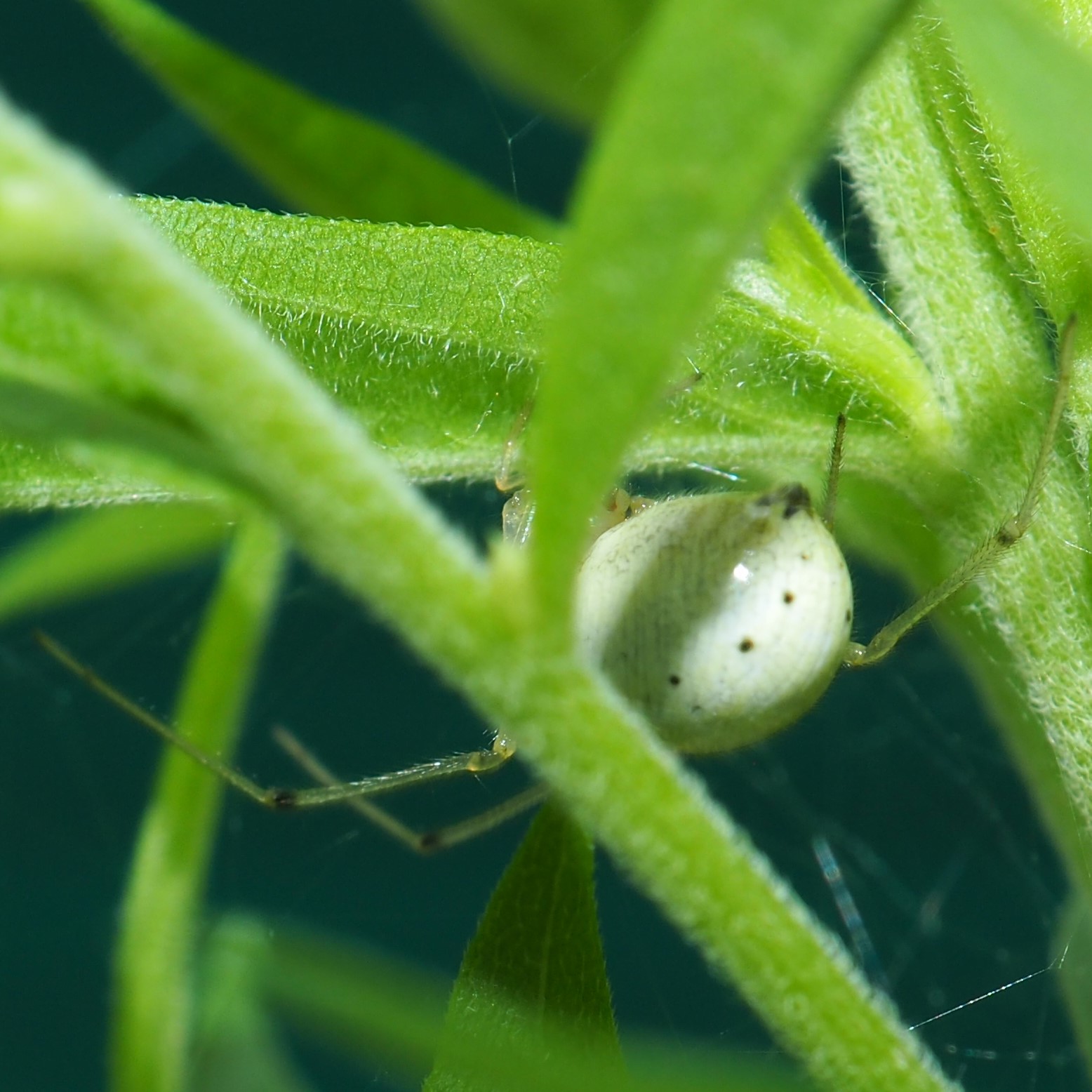
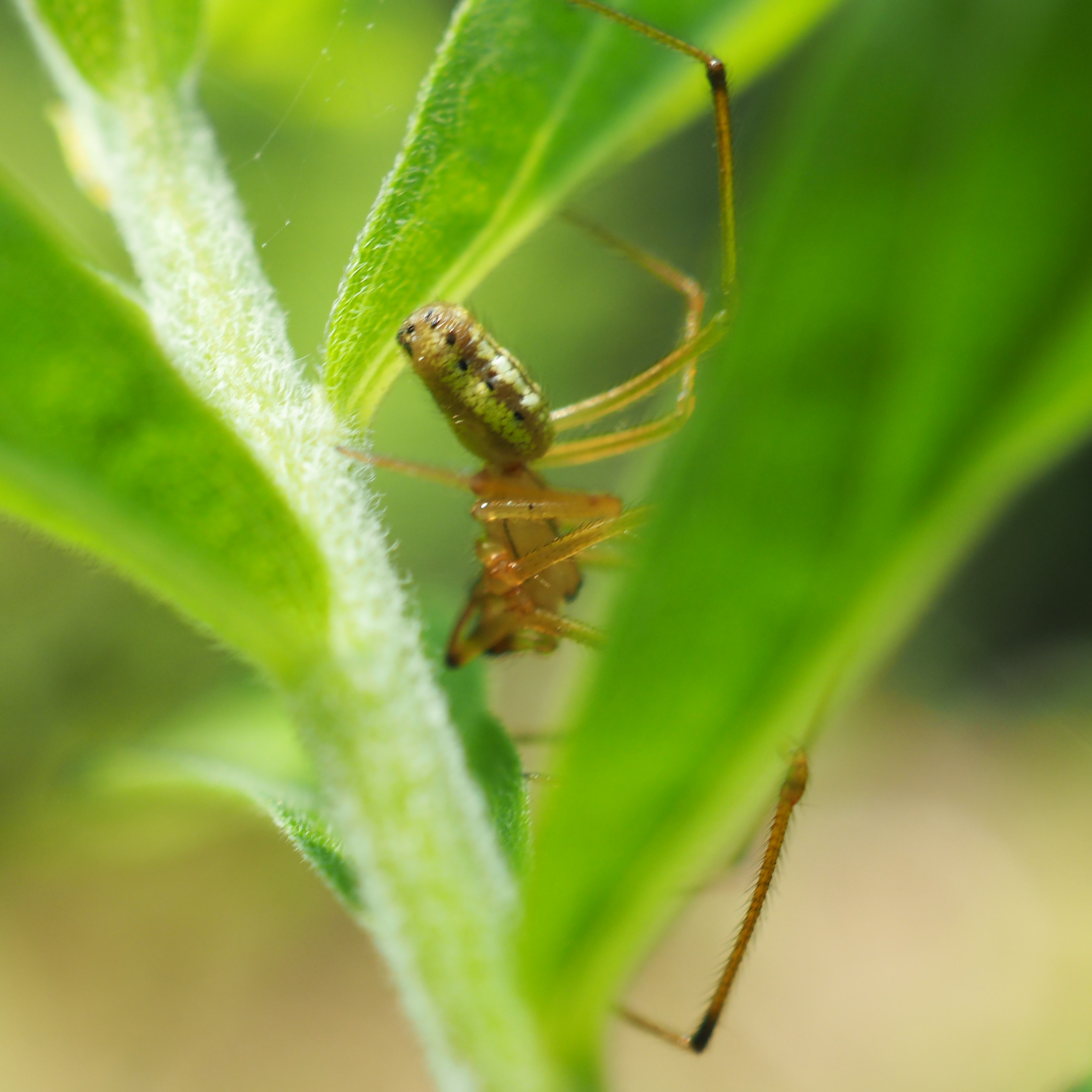
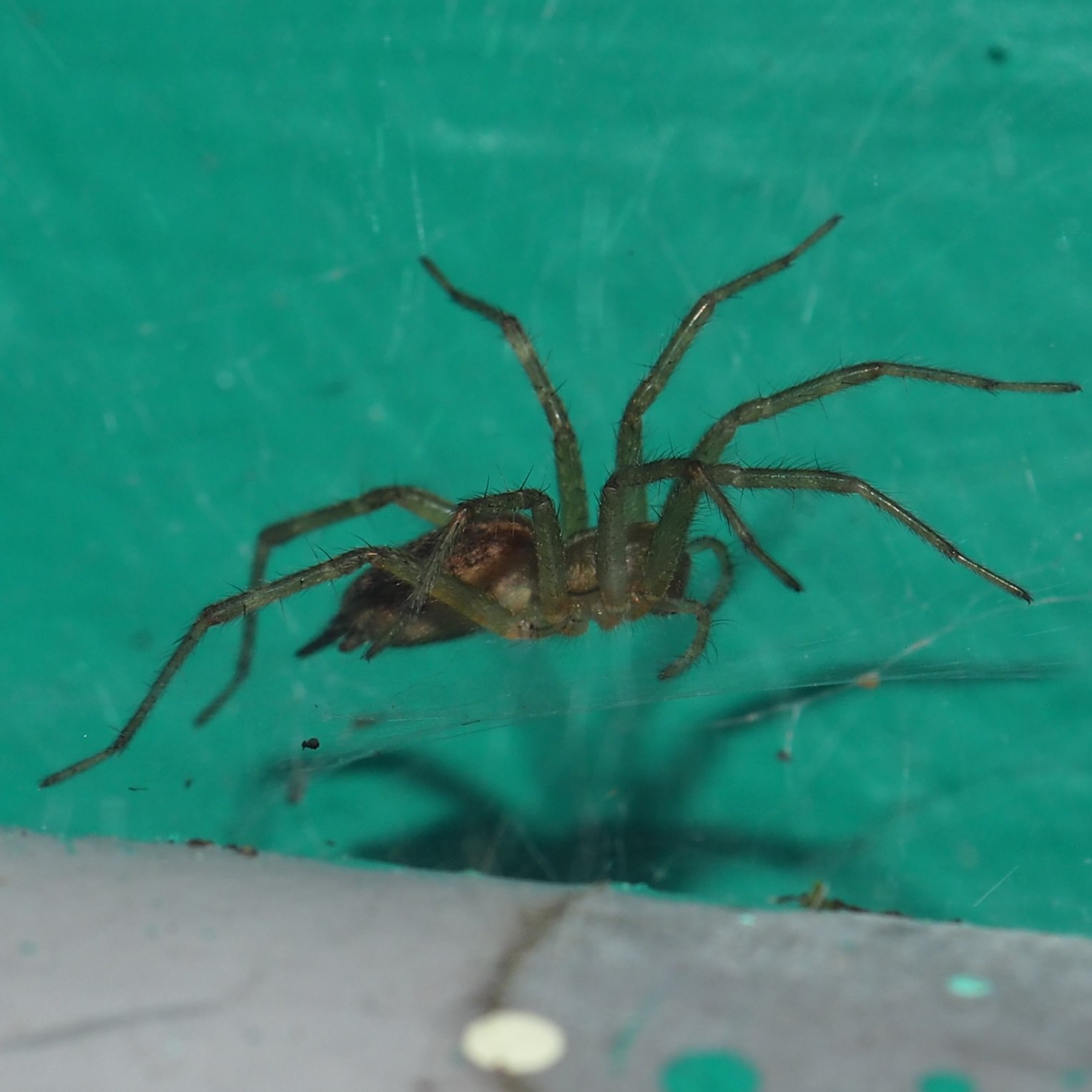
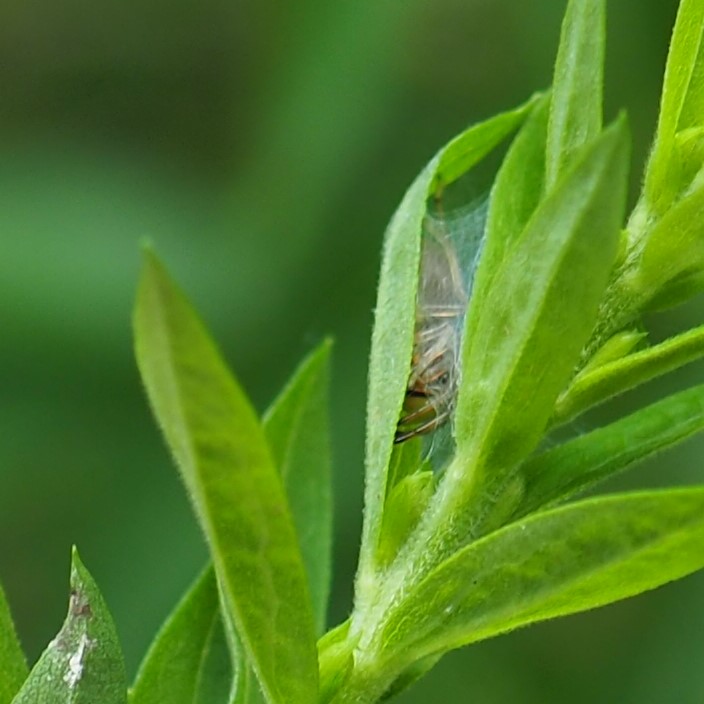
Speaking of the Grass Spiders, here is a sort of optical illusion for you. Picture 1 is pretty obviously a Grass Spider. Now I snuck around and took the same picture from the back - that gave picture 2. They are both of the same spider but one looks like a mysterious other critter. Number three is the Asian Wall jumping spider - the most squeezable cute baby face one could ask for. Look at those eyes!
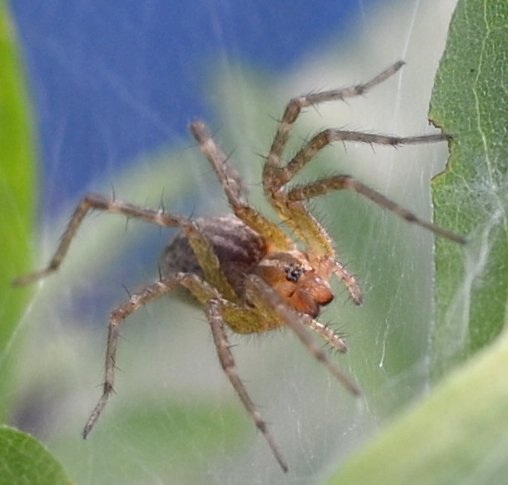
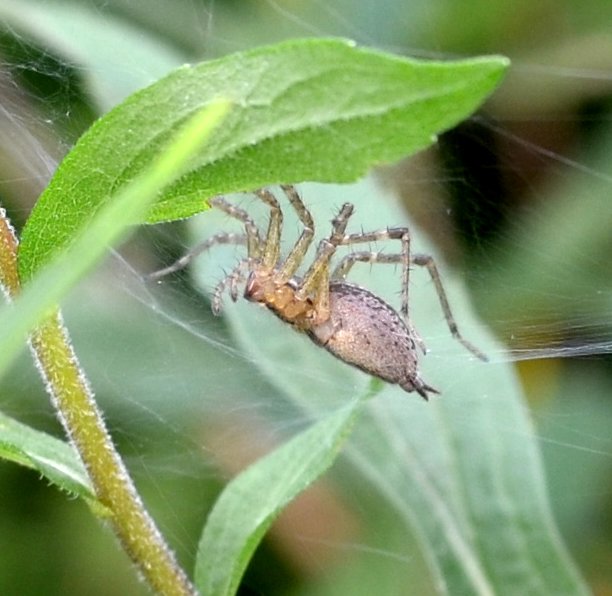
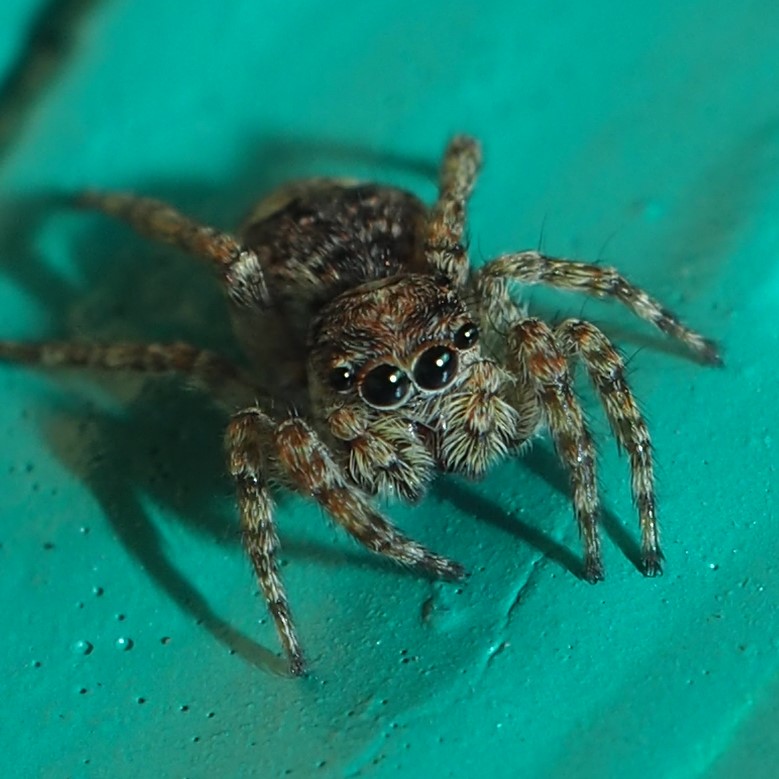
Here's a Cross Orbweaver, showing the cross design that gave it its name. The second and third frames are of a different individual but MAYBE it's also a Cross Orbweaver even though the cross isn't showing.
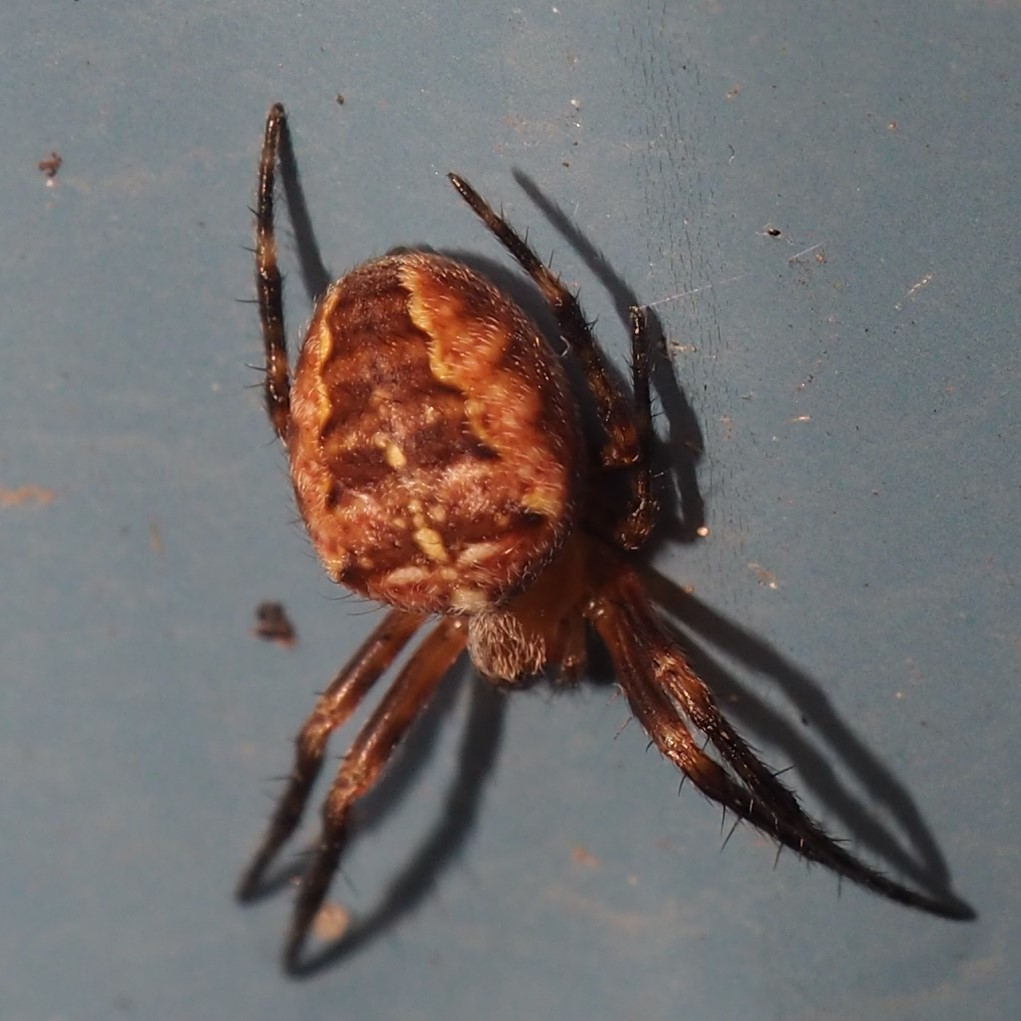
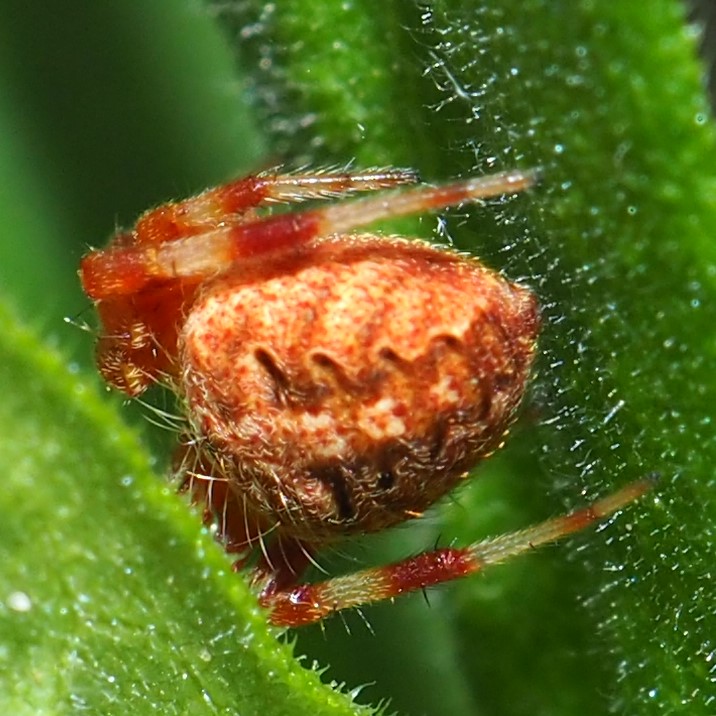
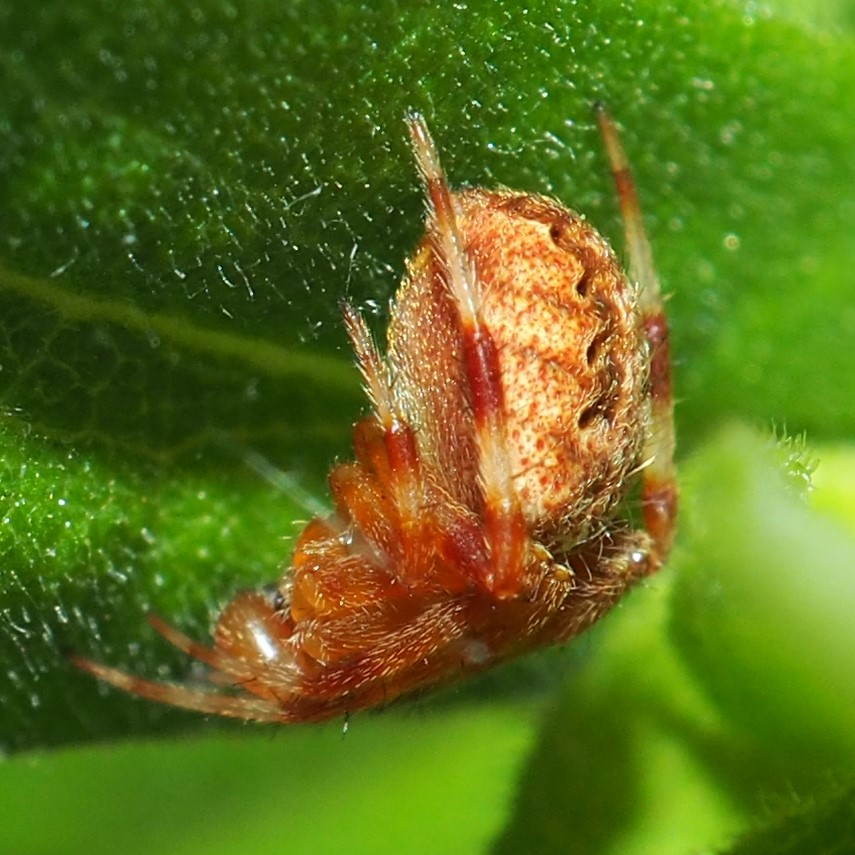
Down to the wasps. First, a Braconid Wasp, much like an Ichneumonid Wasp, but I'm still straightening out the differences. Second, a wasp of some sort. It's image 3 that shows how much iridescence can exist in the shade.
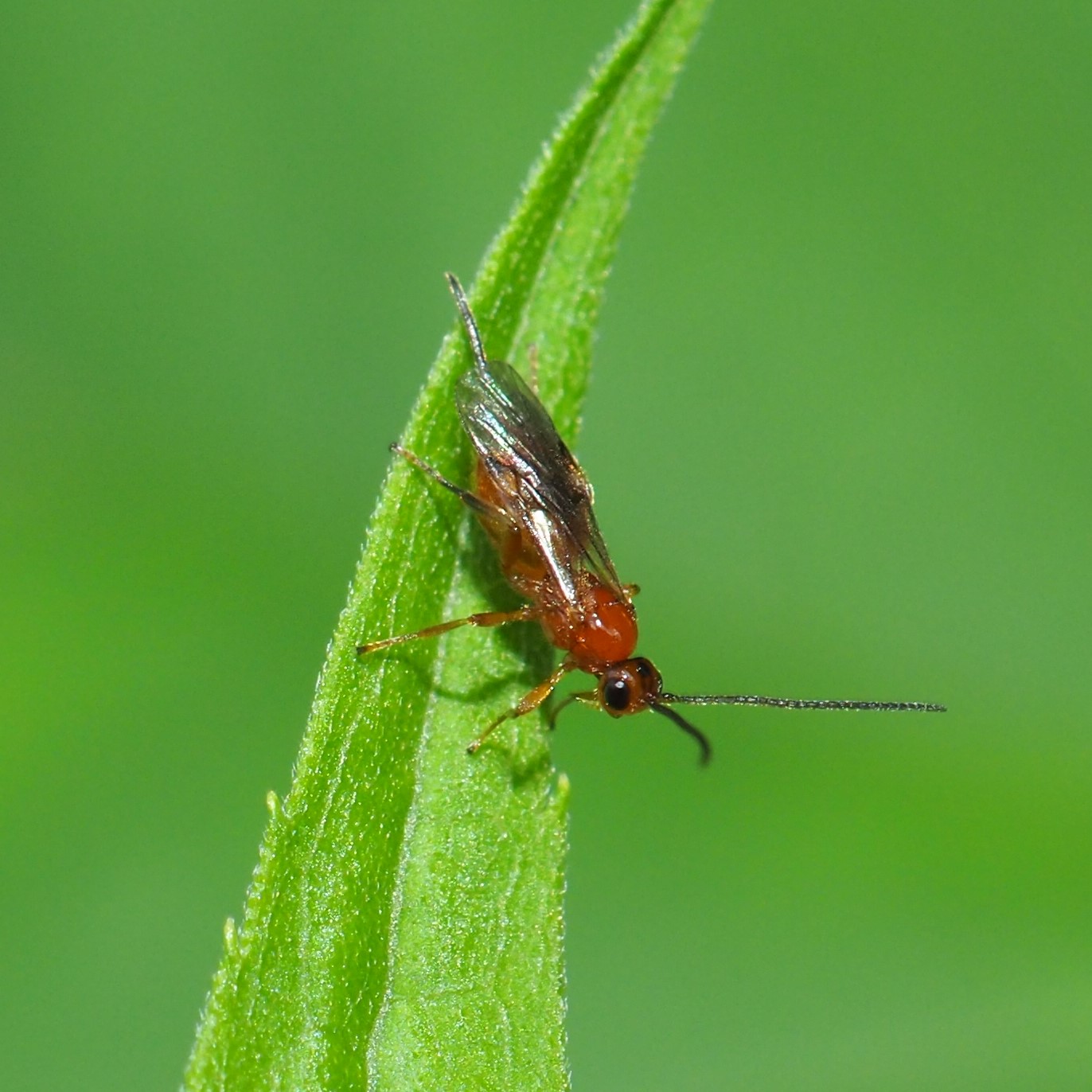
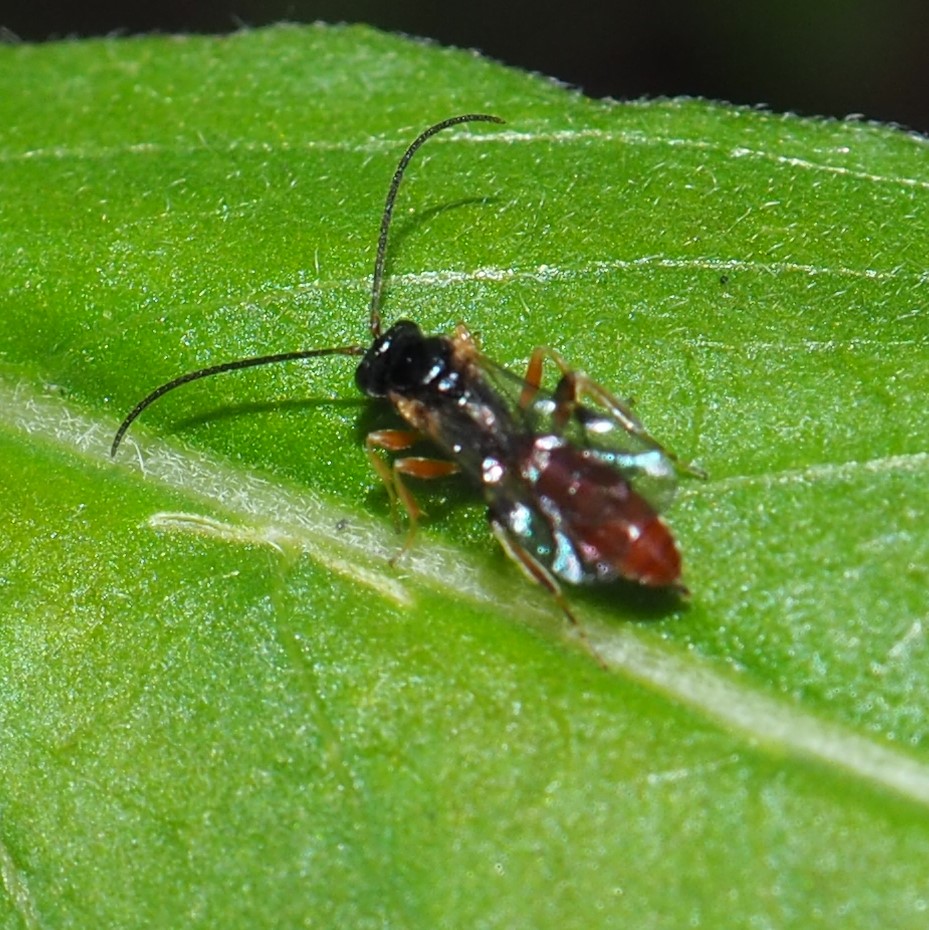
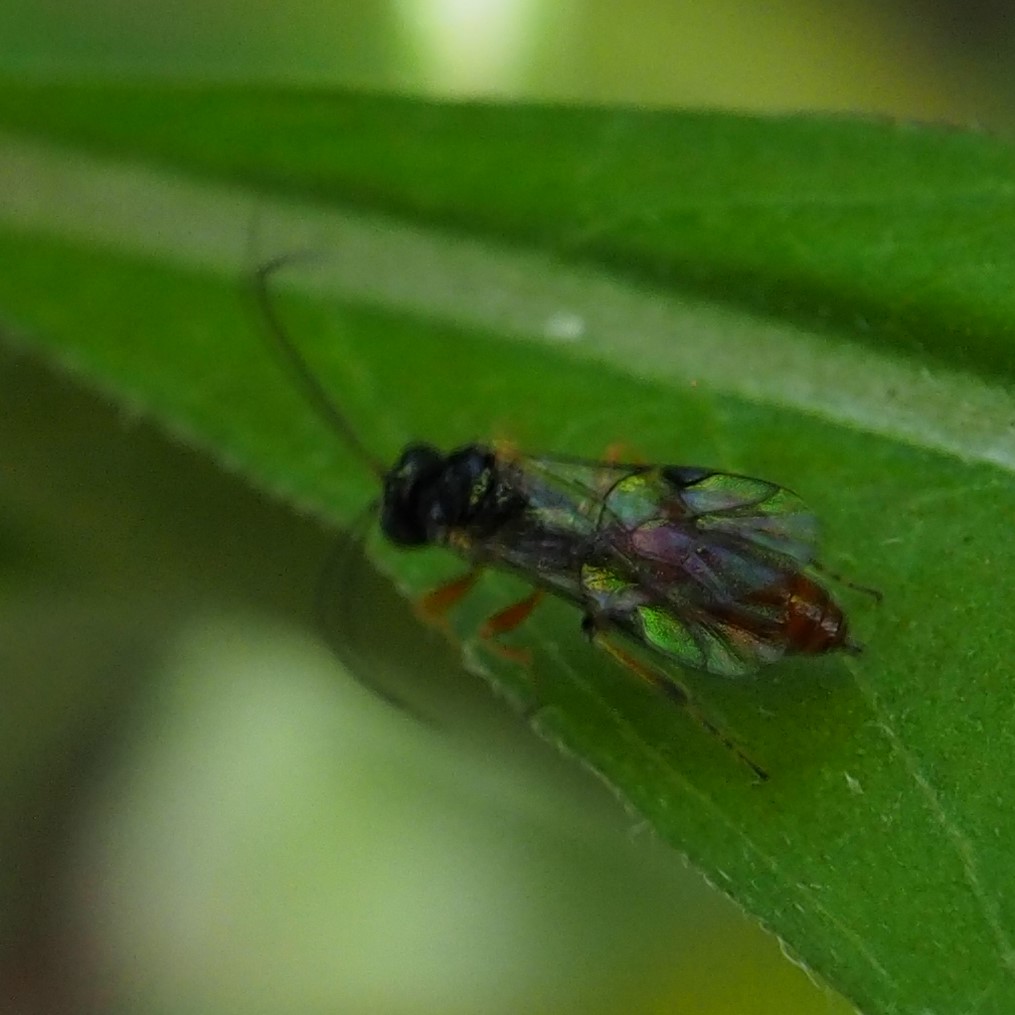
First and second, an Ichneumonid Wasp. Third, a Braconid Wasp; and fourth, a Chalcidoid Wasp of the family Torymidae.
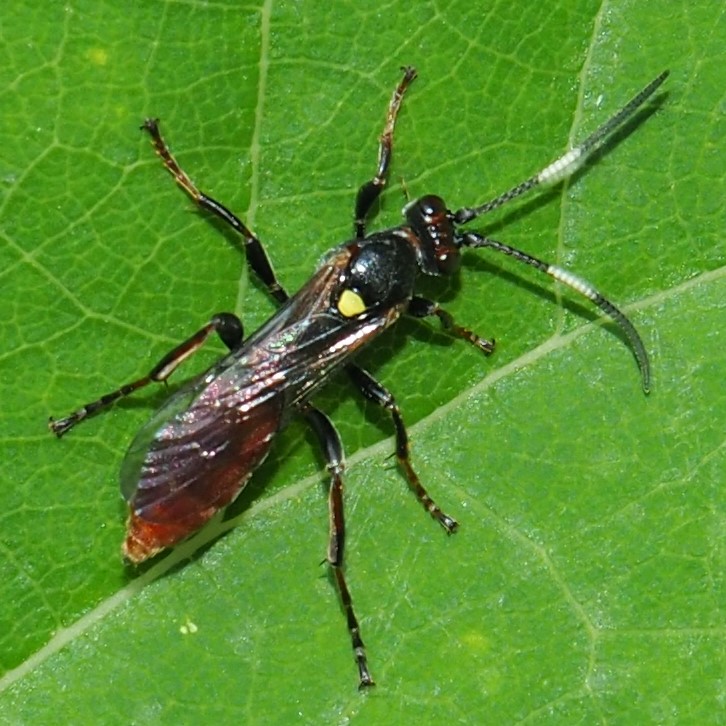
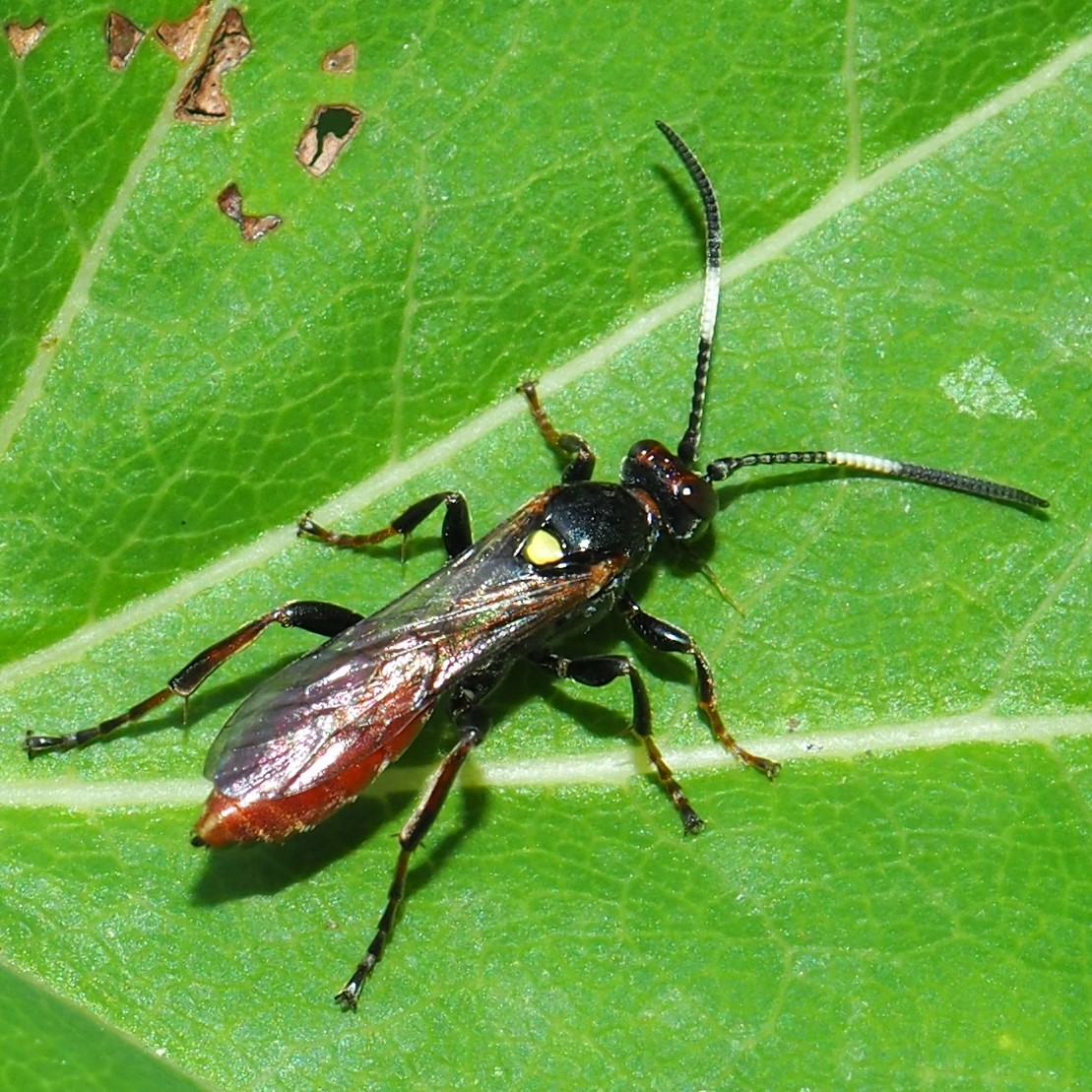
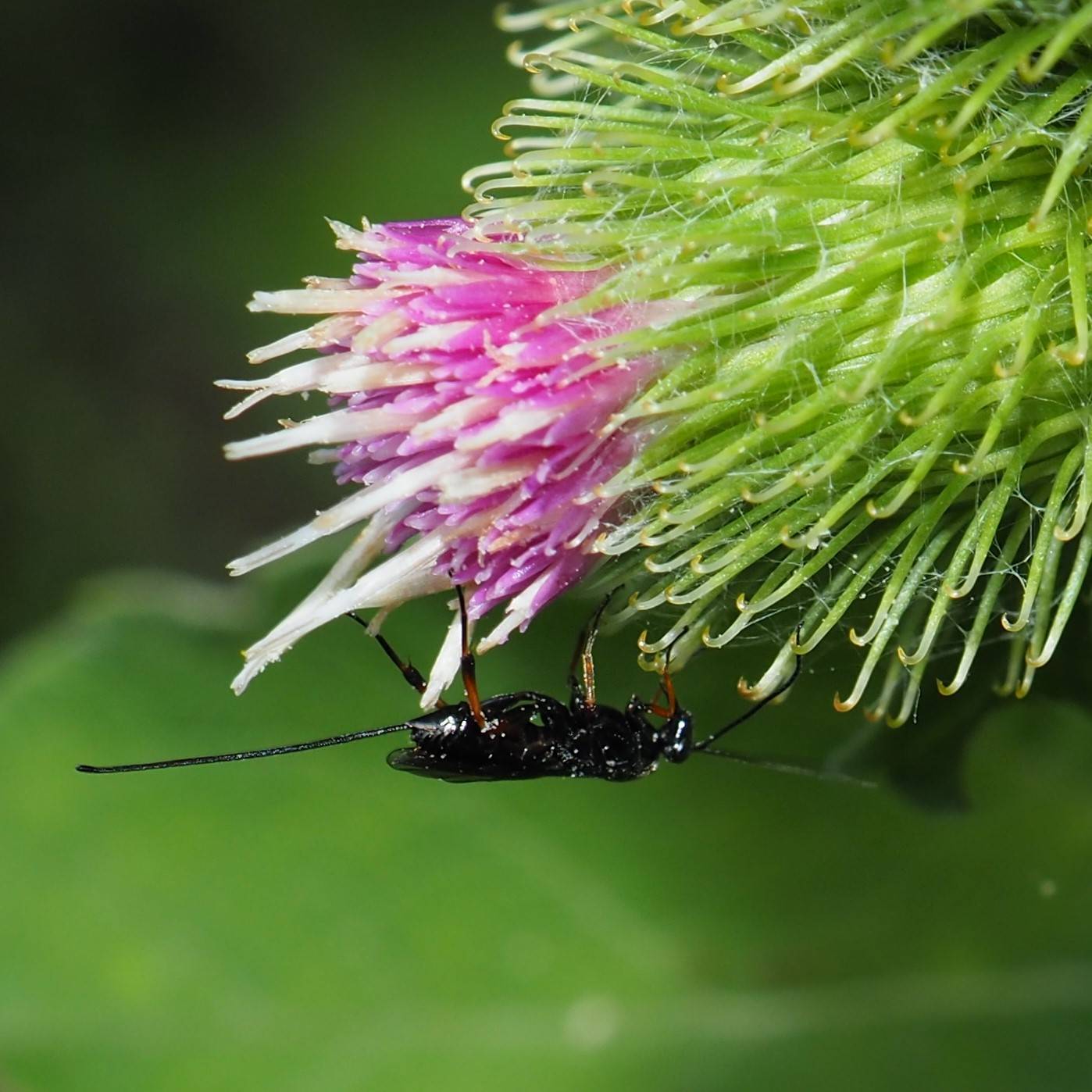
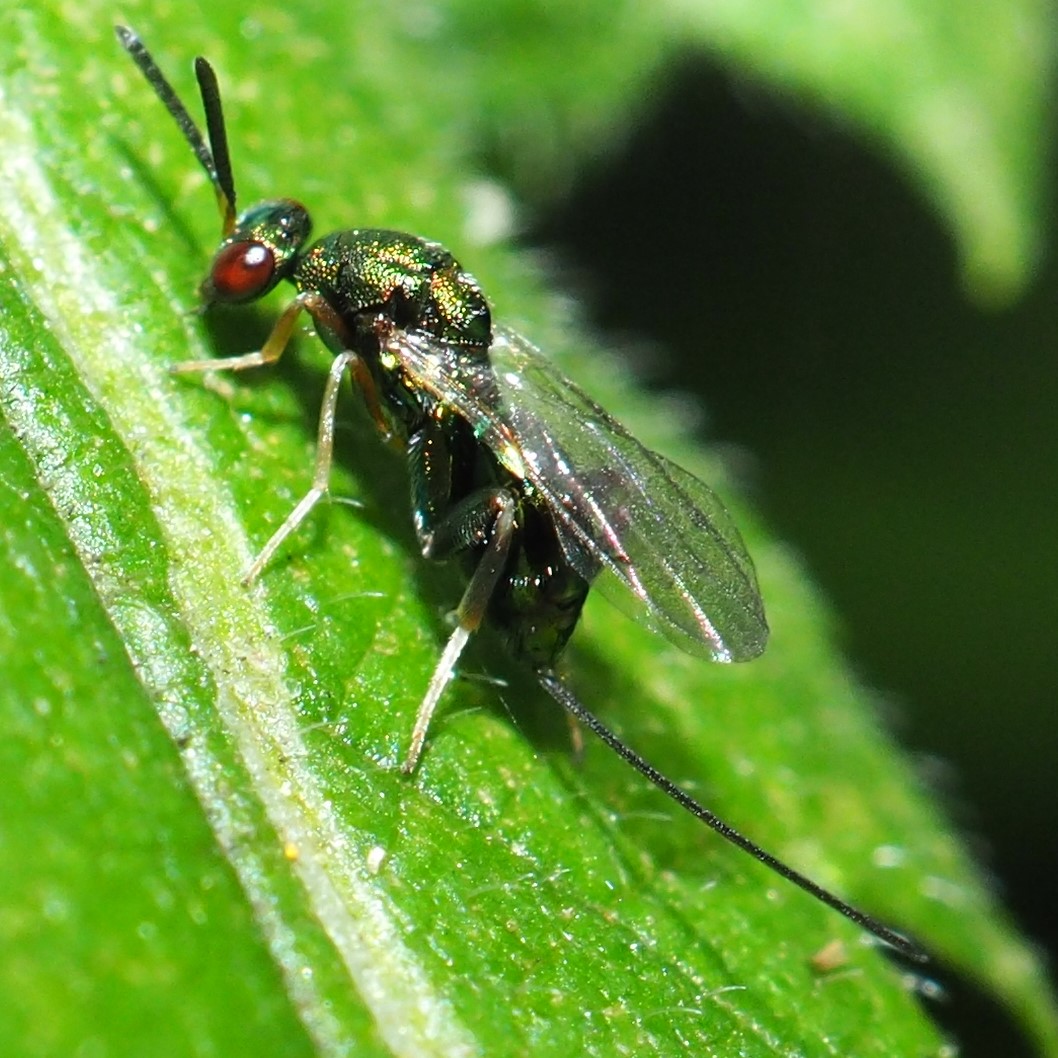
We seem to be down to the end of this week's new things. I hope everyone has had a good time observing what's going on in my quarter-acre wild habitat. It always cheers me up. Here's your color-morphed picture for today. Please be well, everyone!

Love, Martha
Back to July 21, 2019
Forward to August 4, 2019
Back to main menu
copyright Martha O'Kennon 2019



























.jpg)


































































































